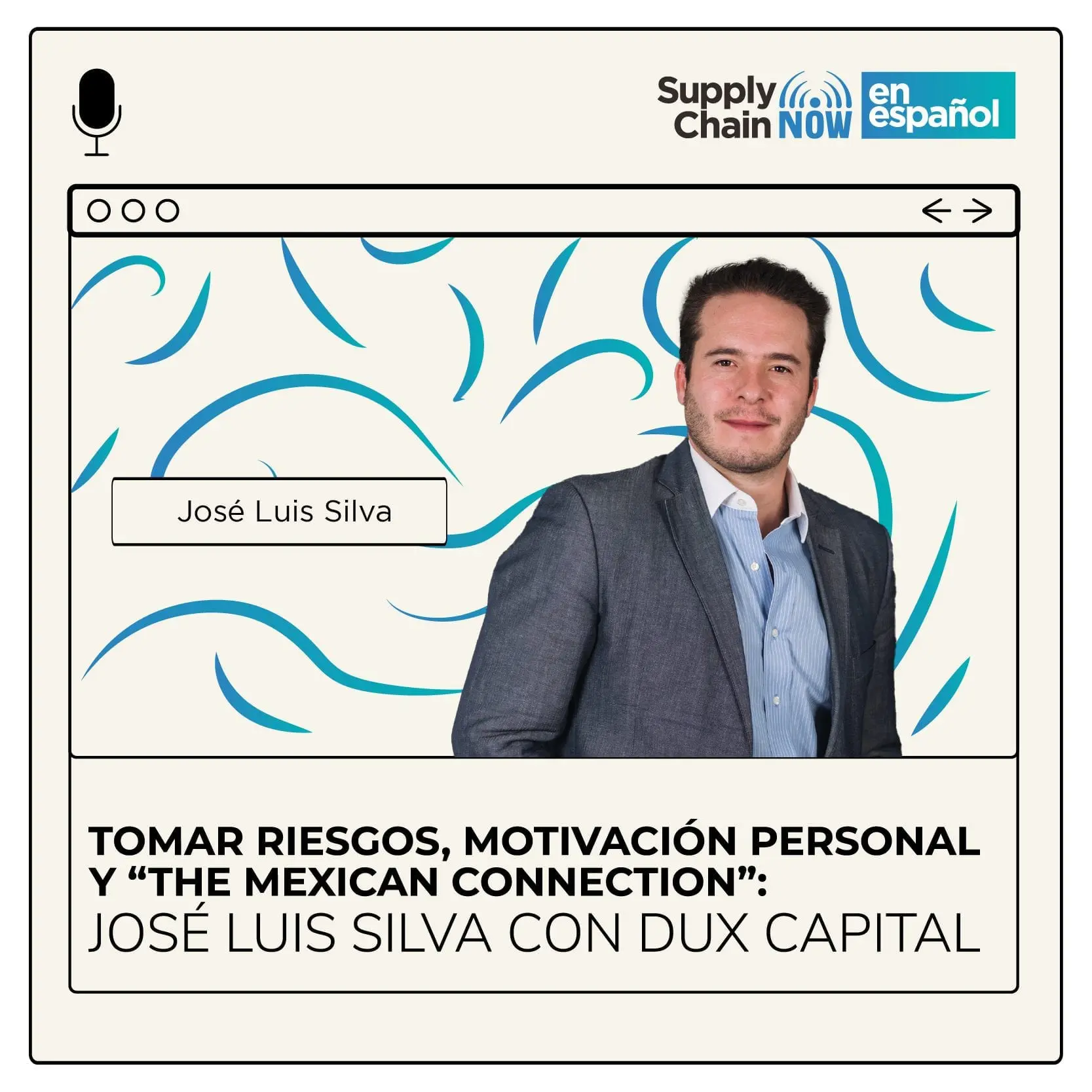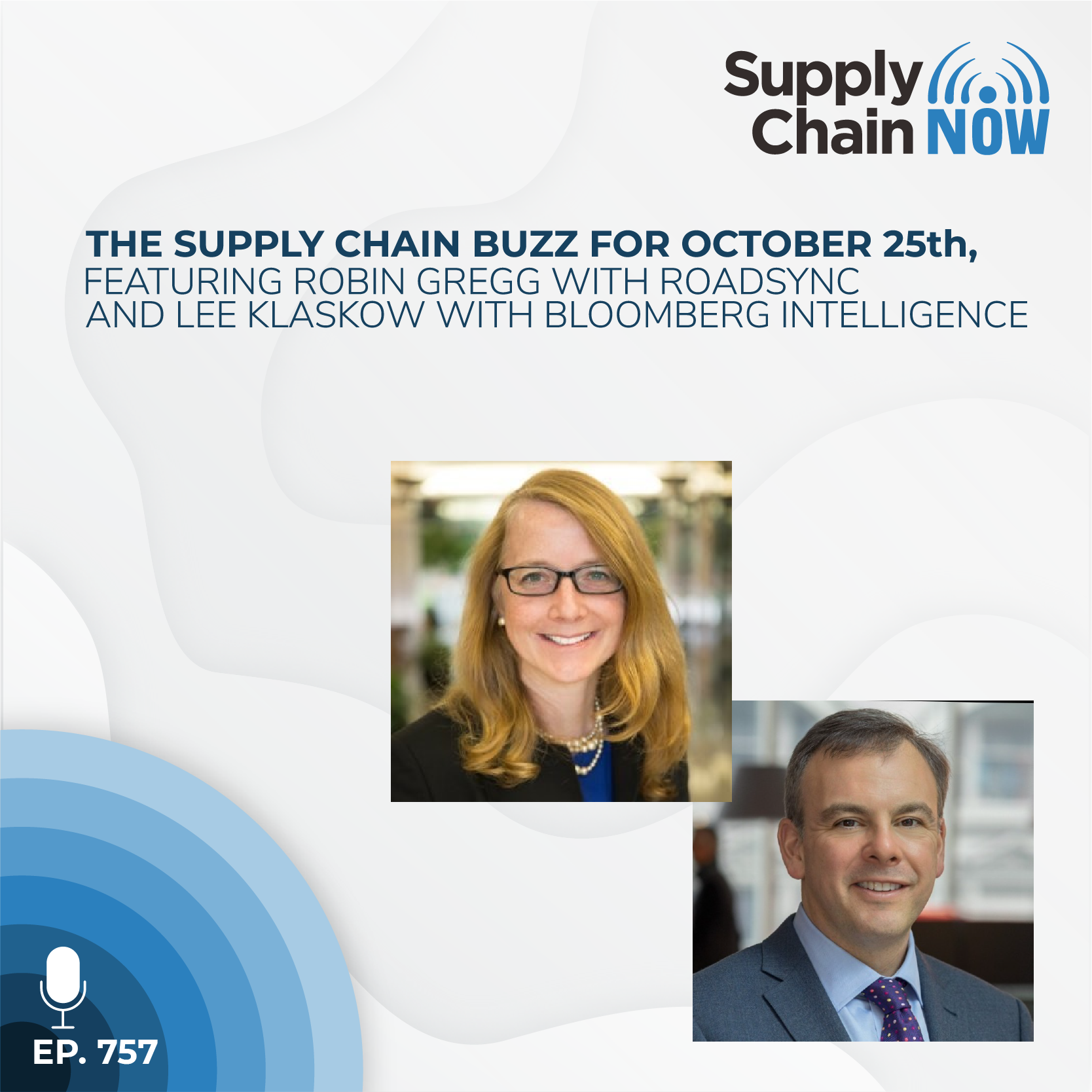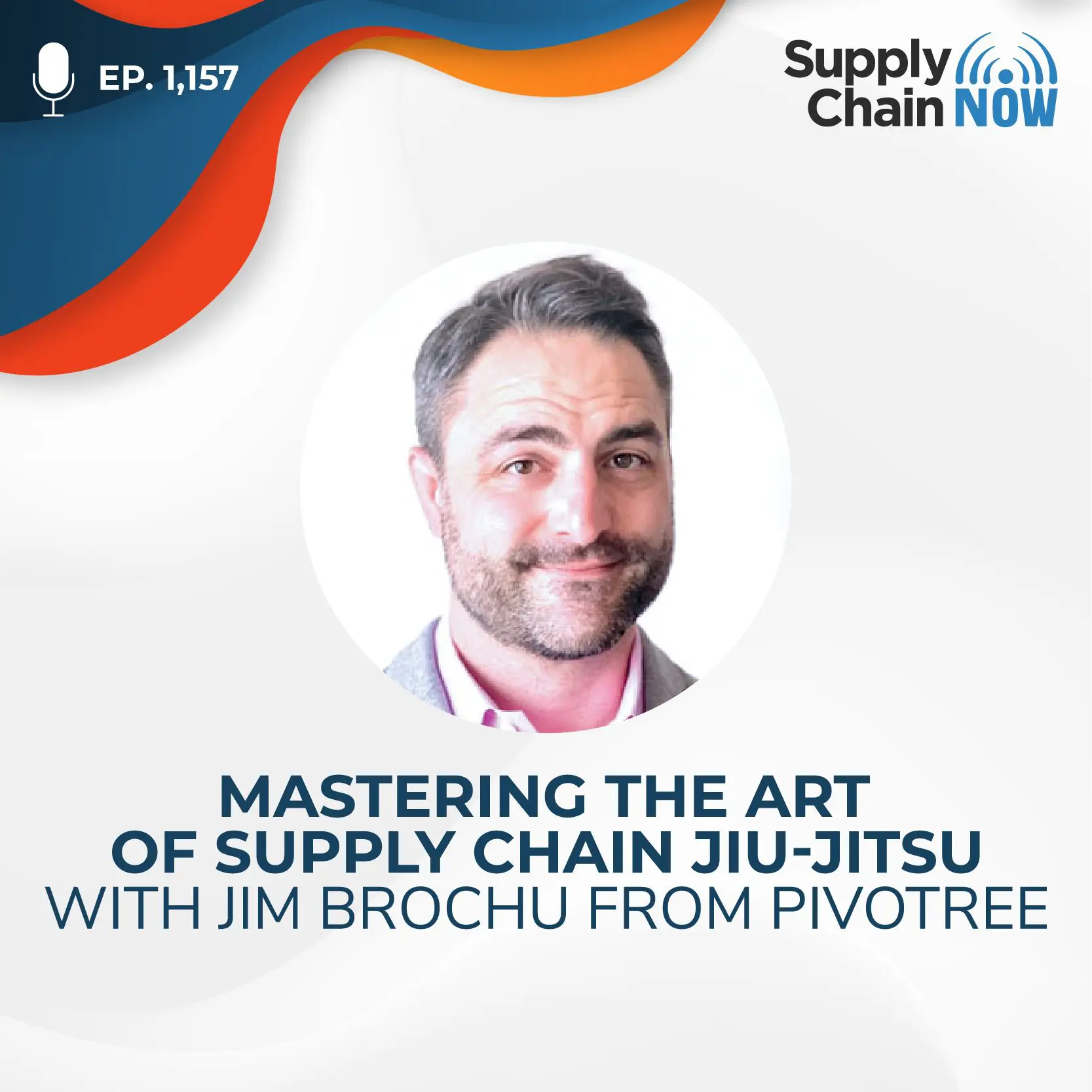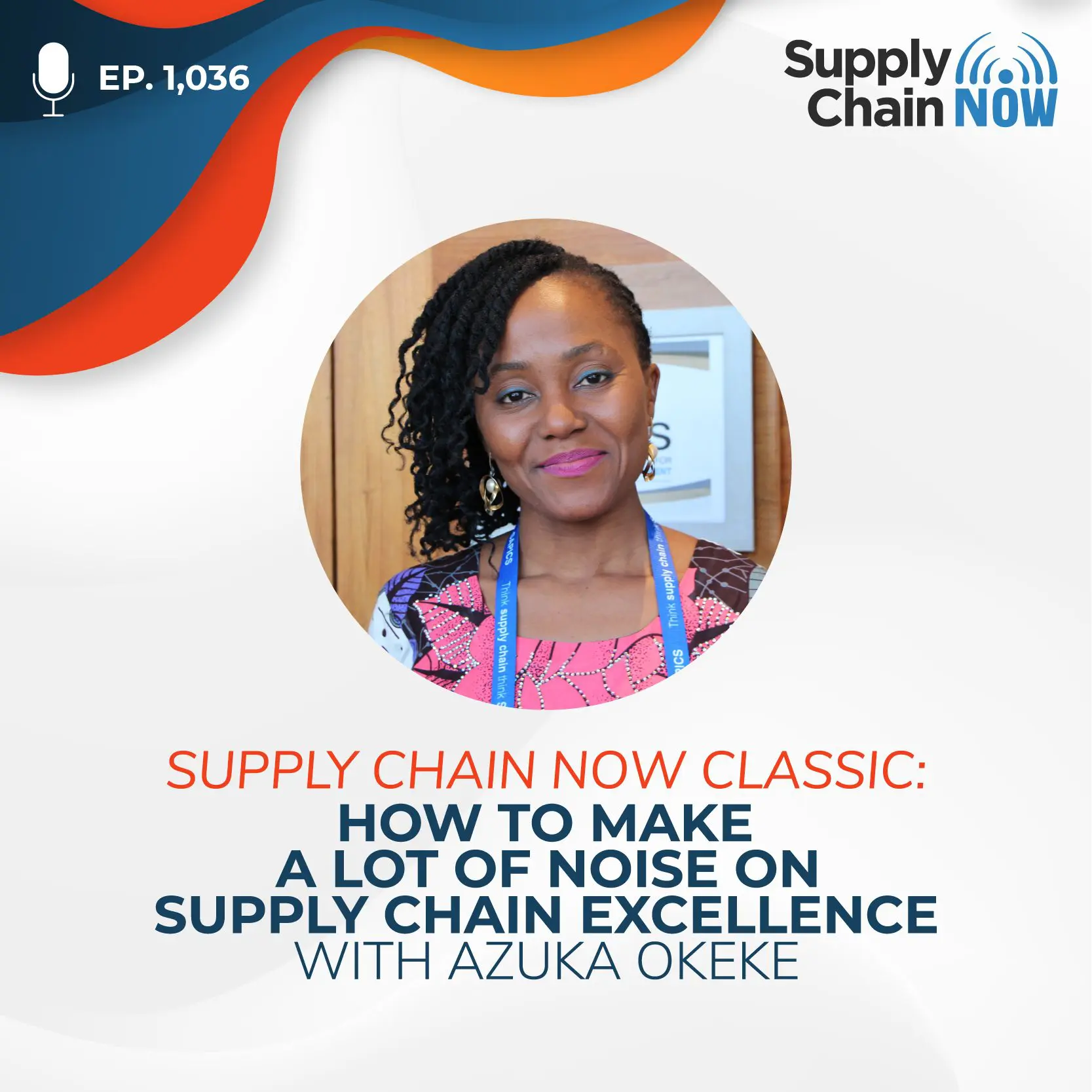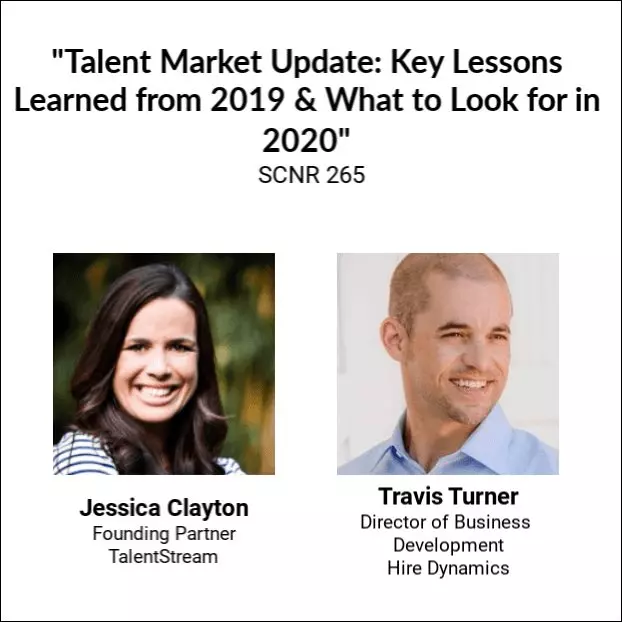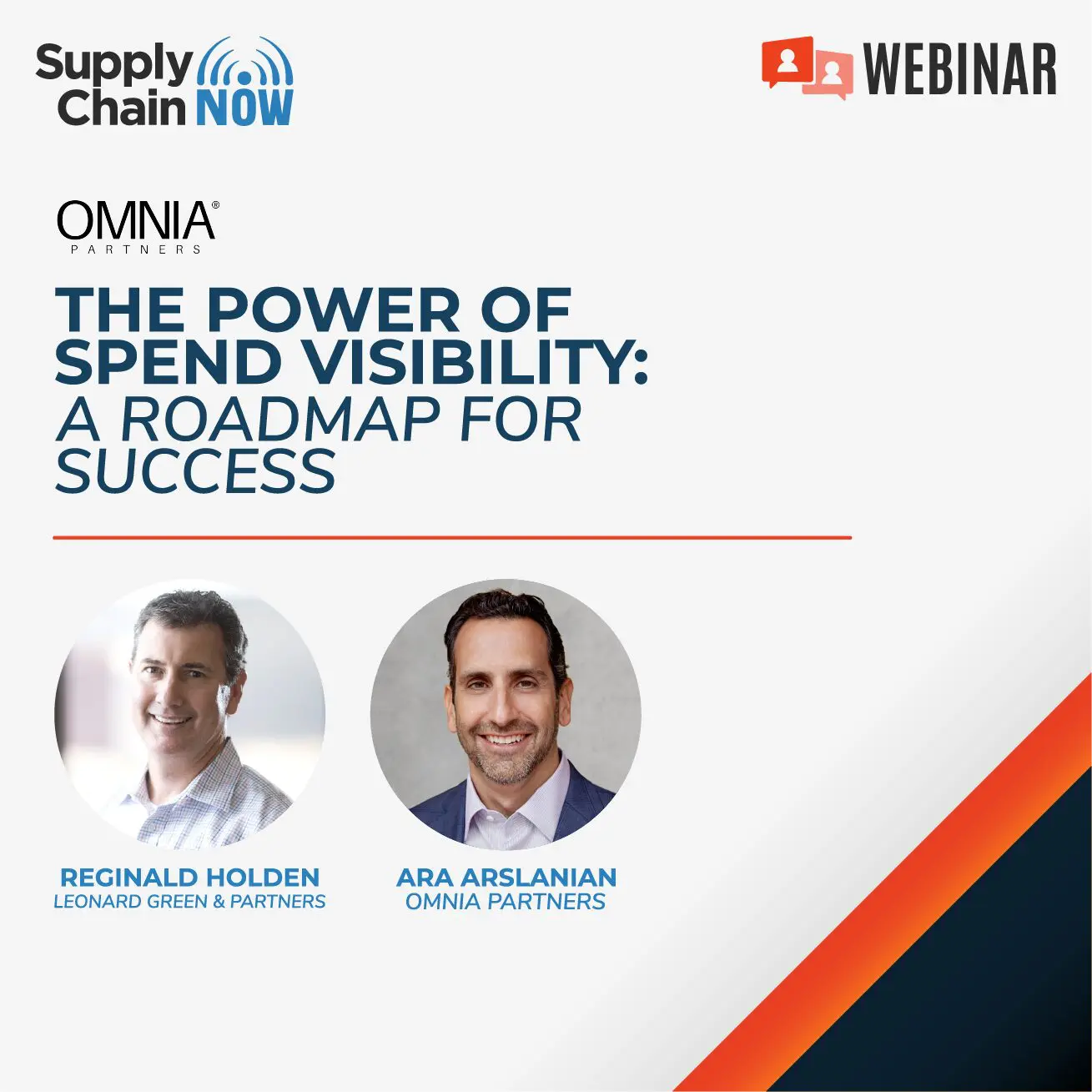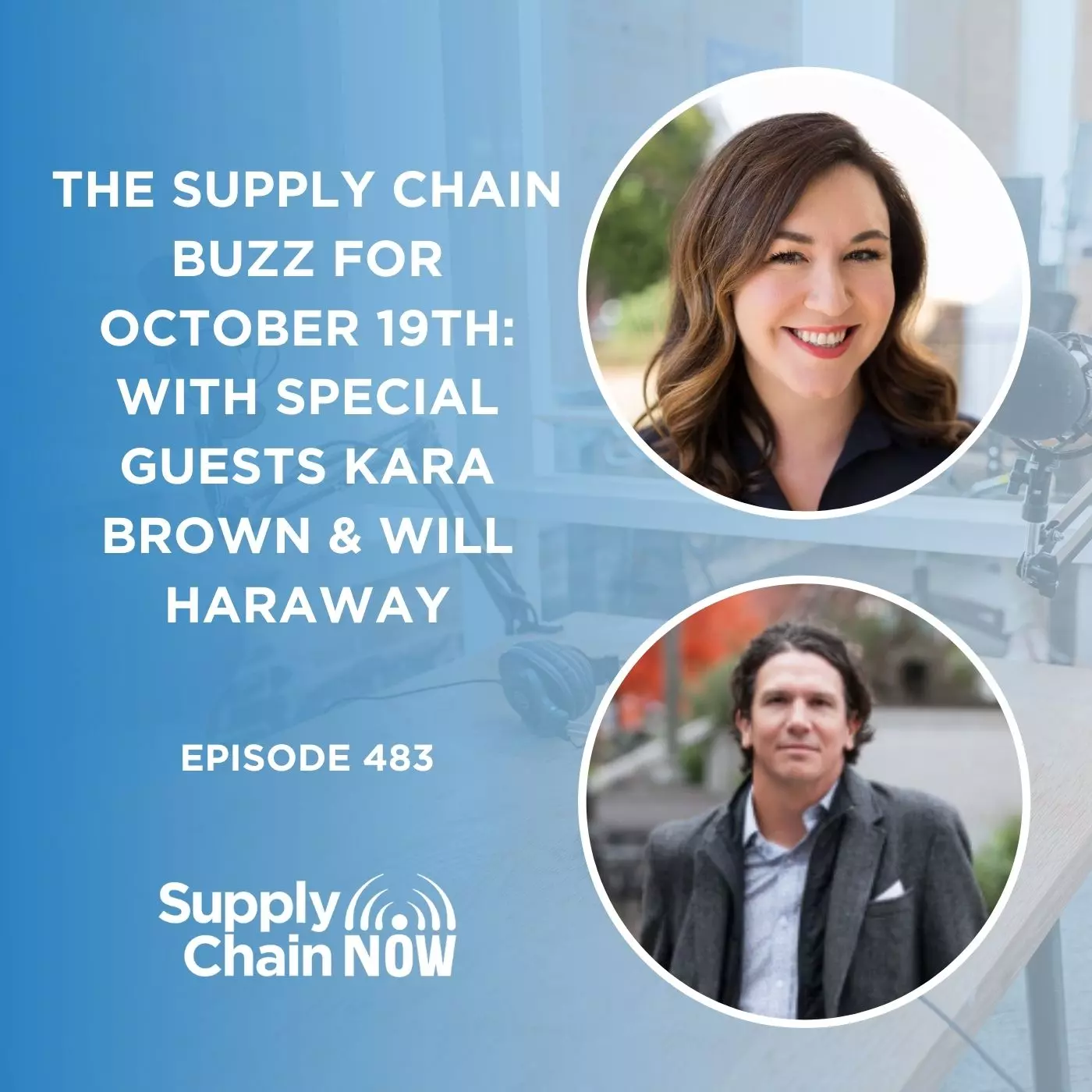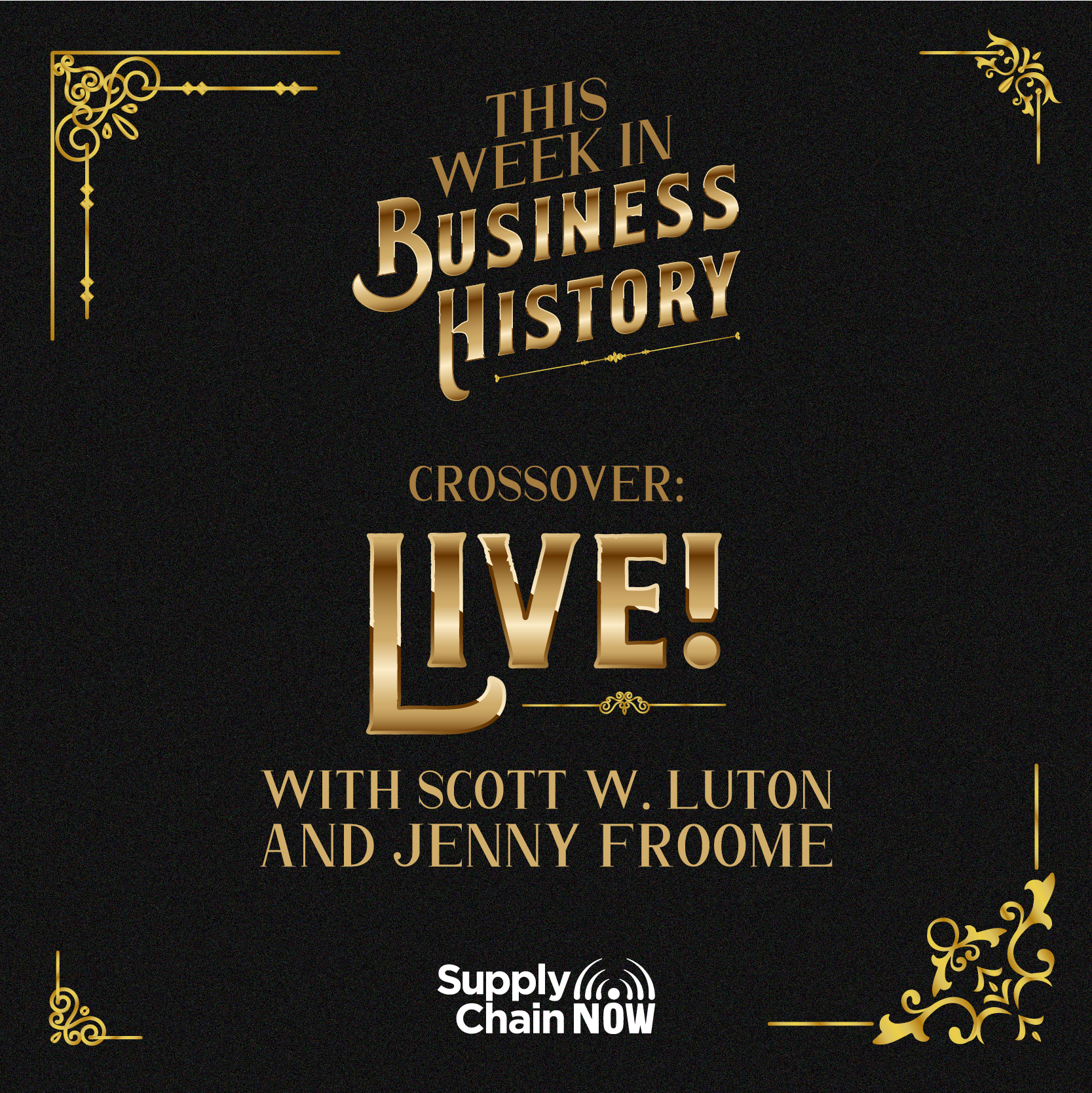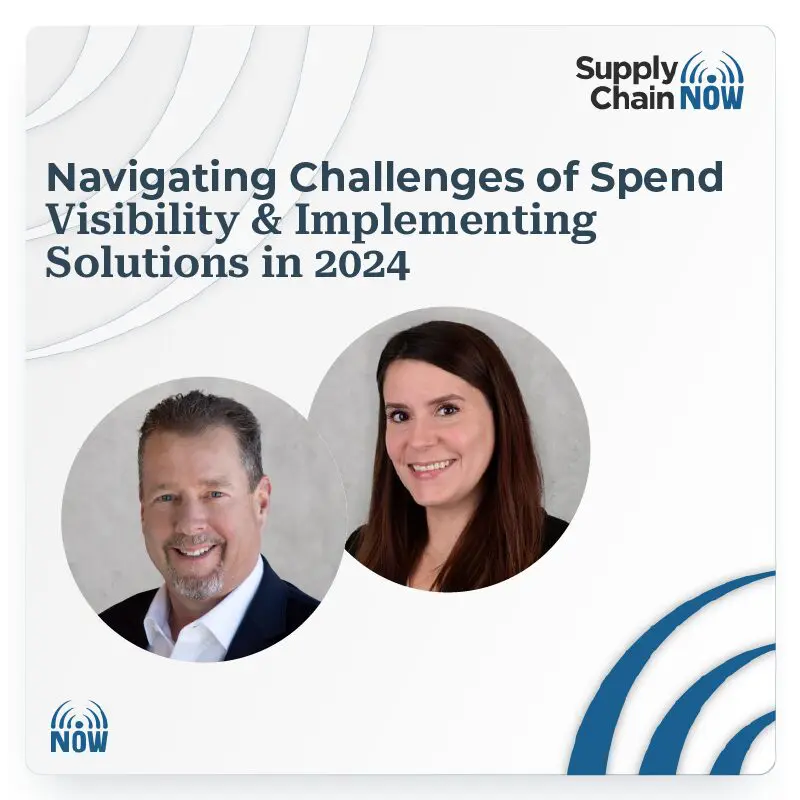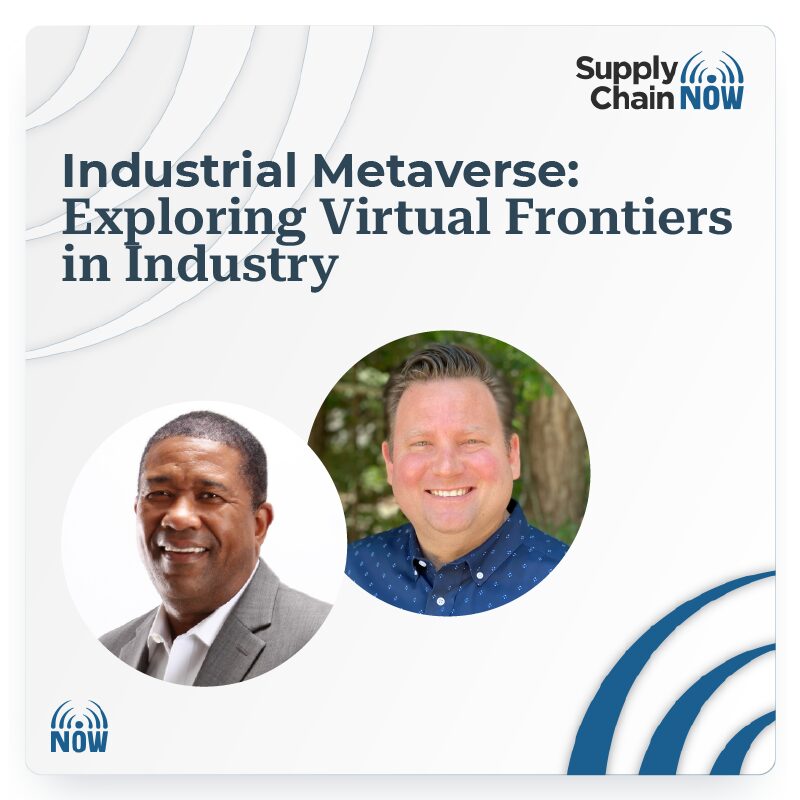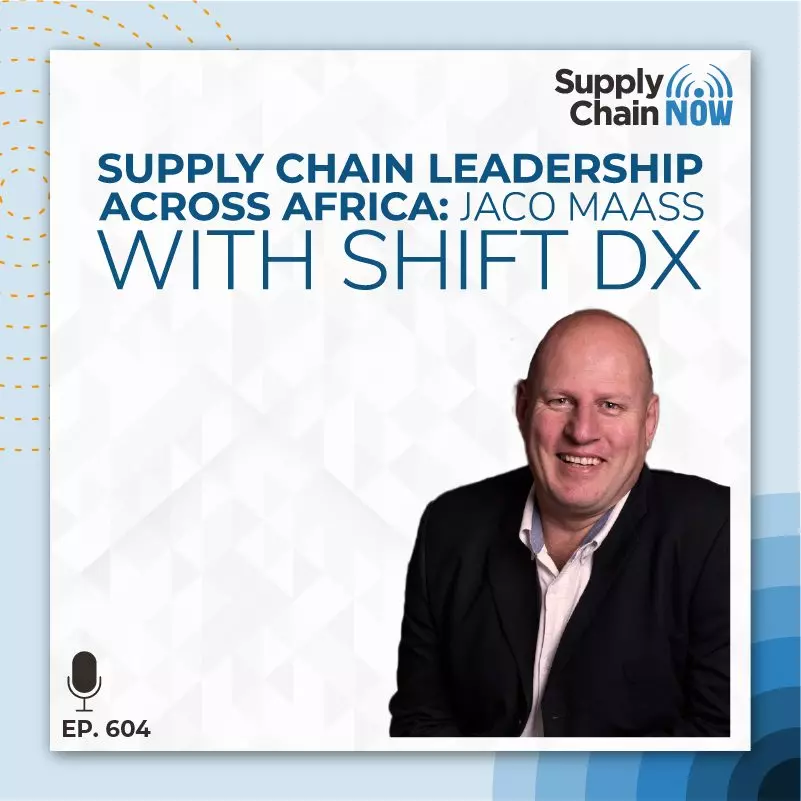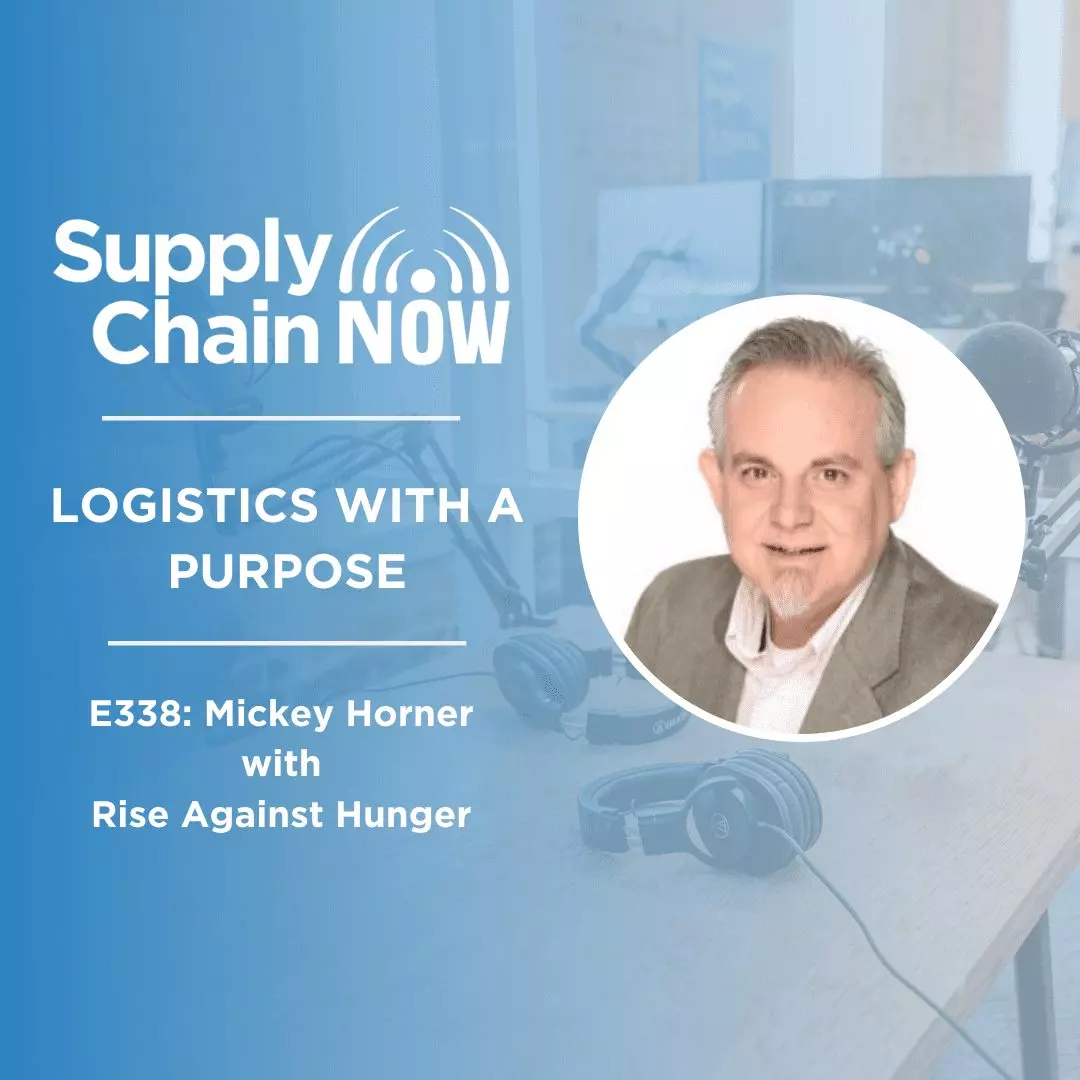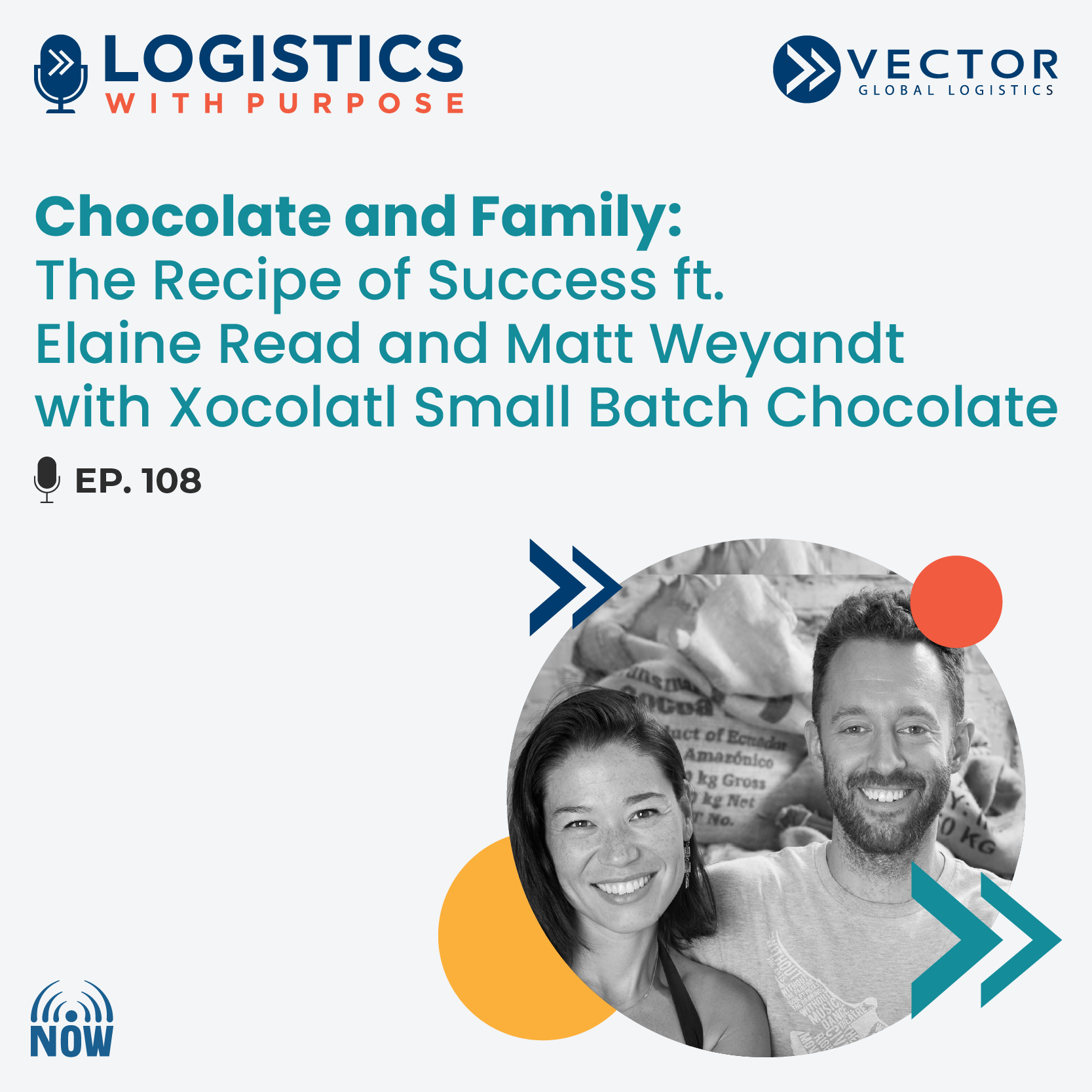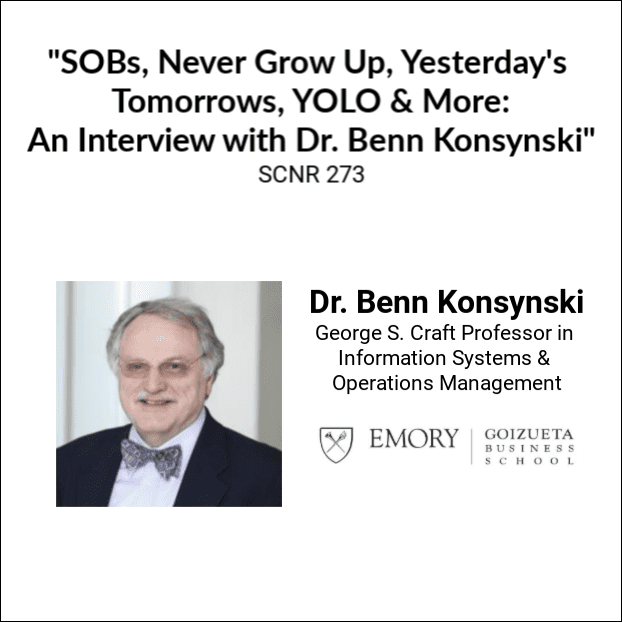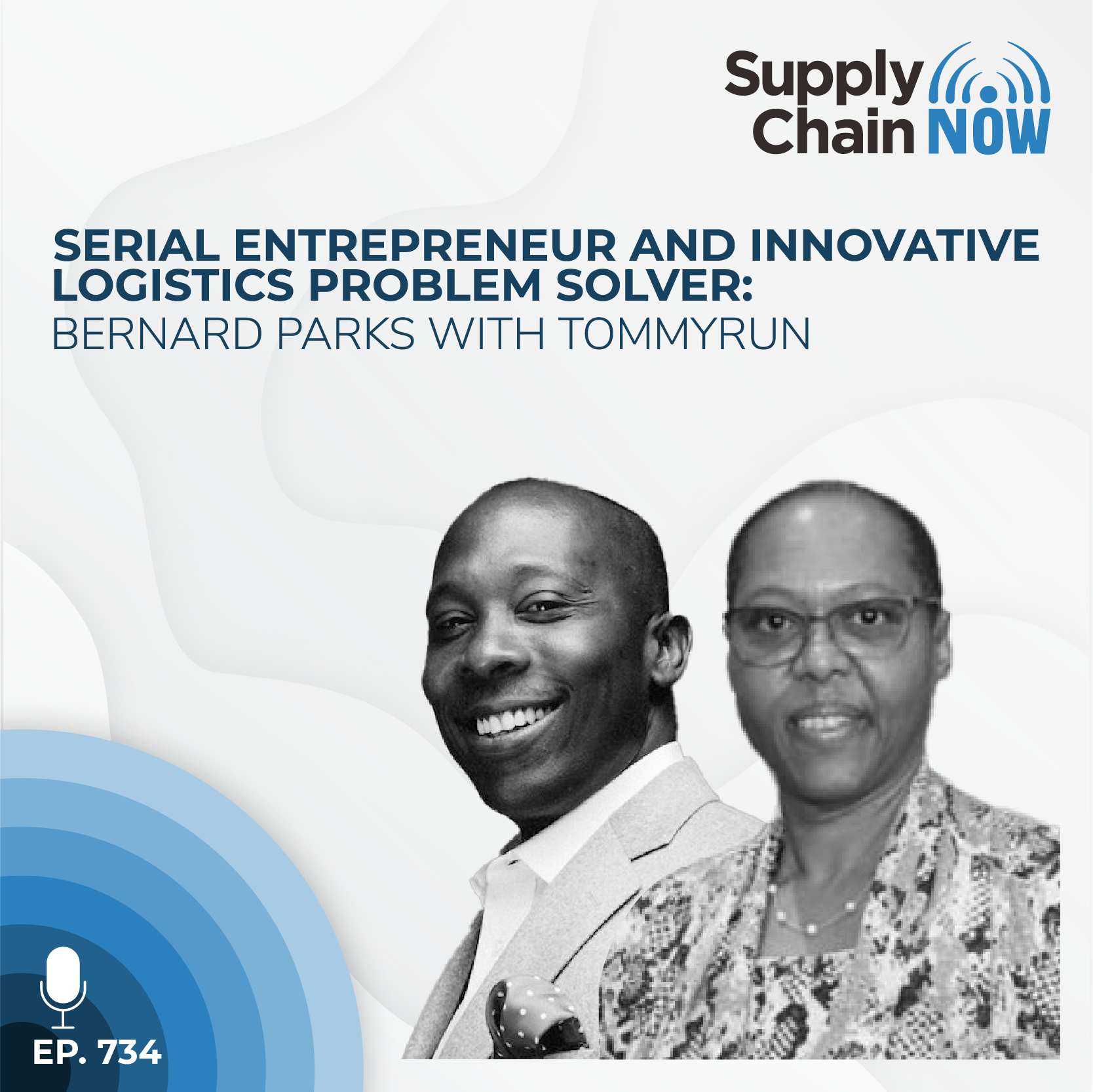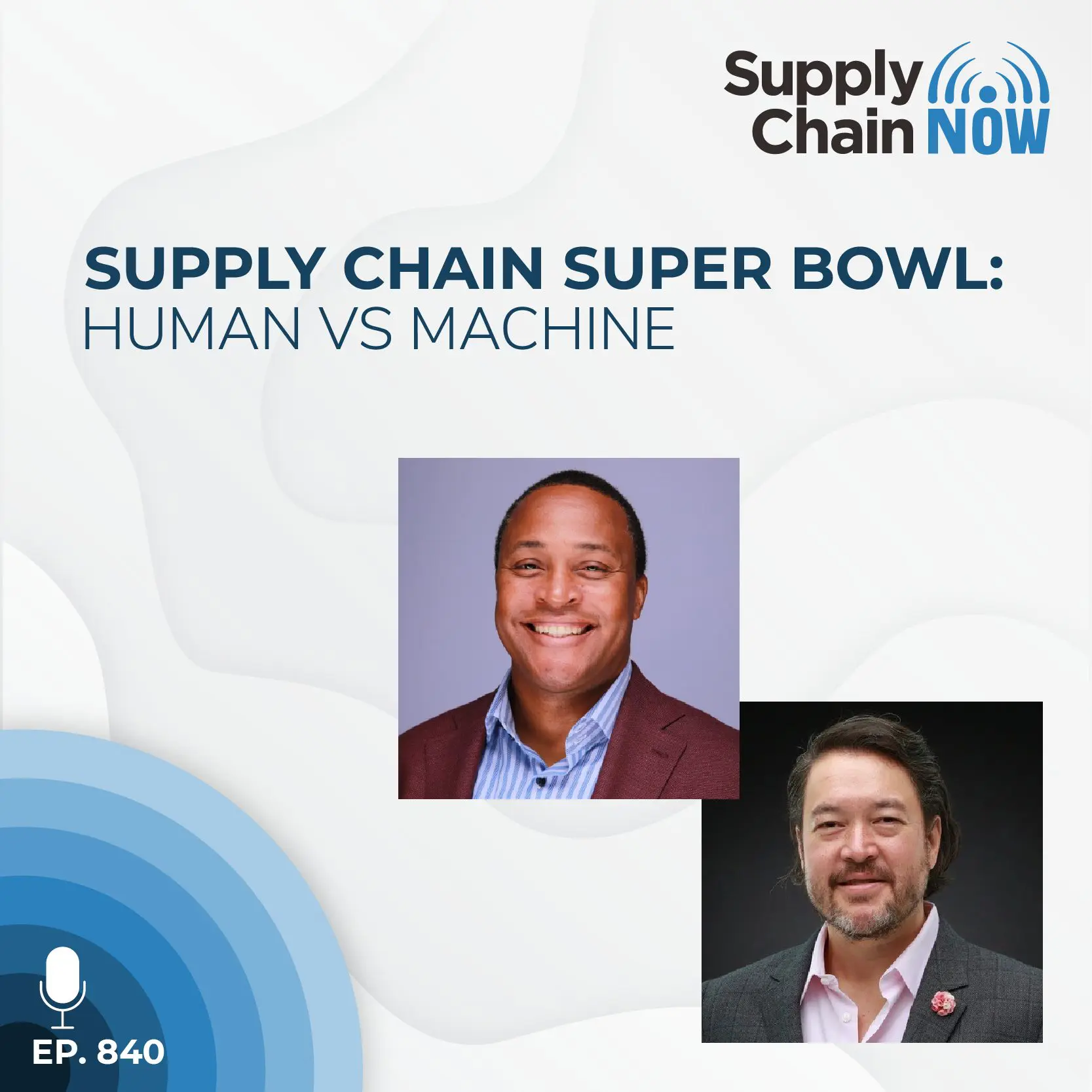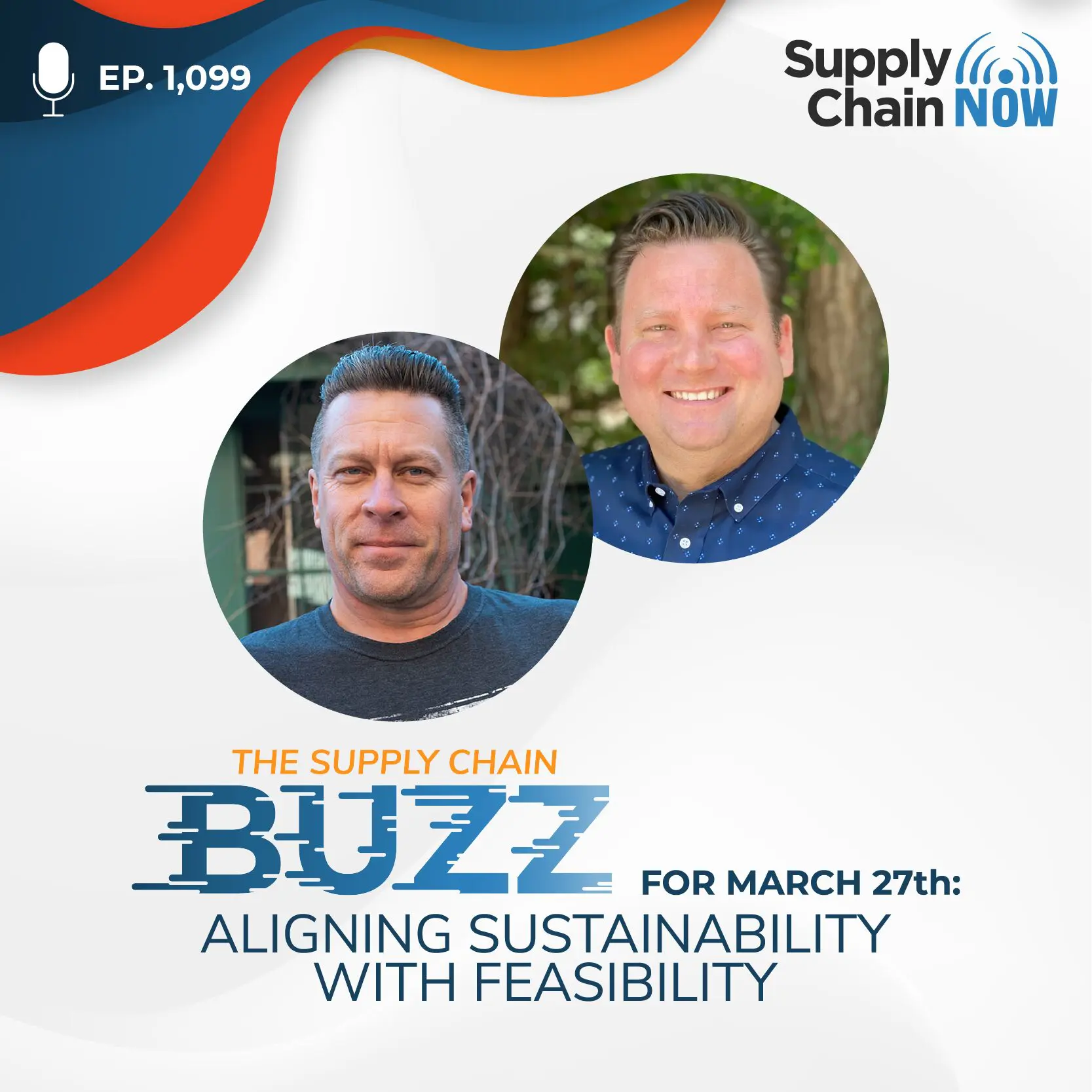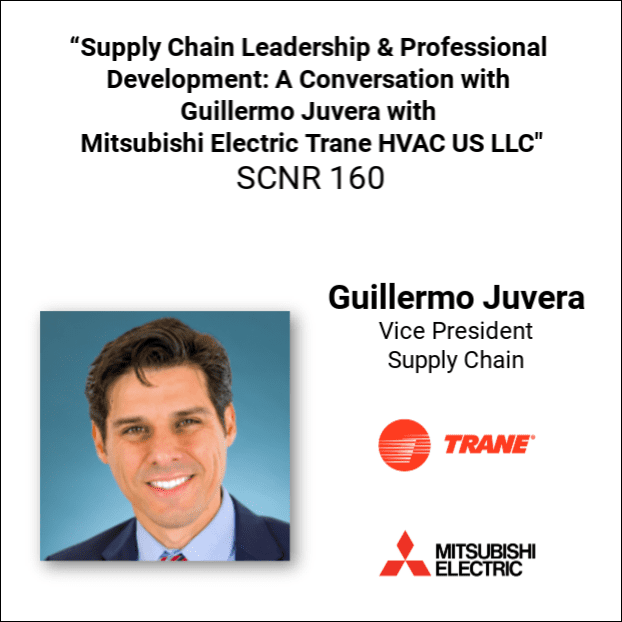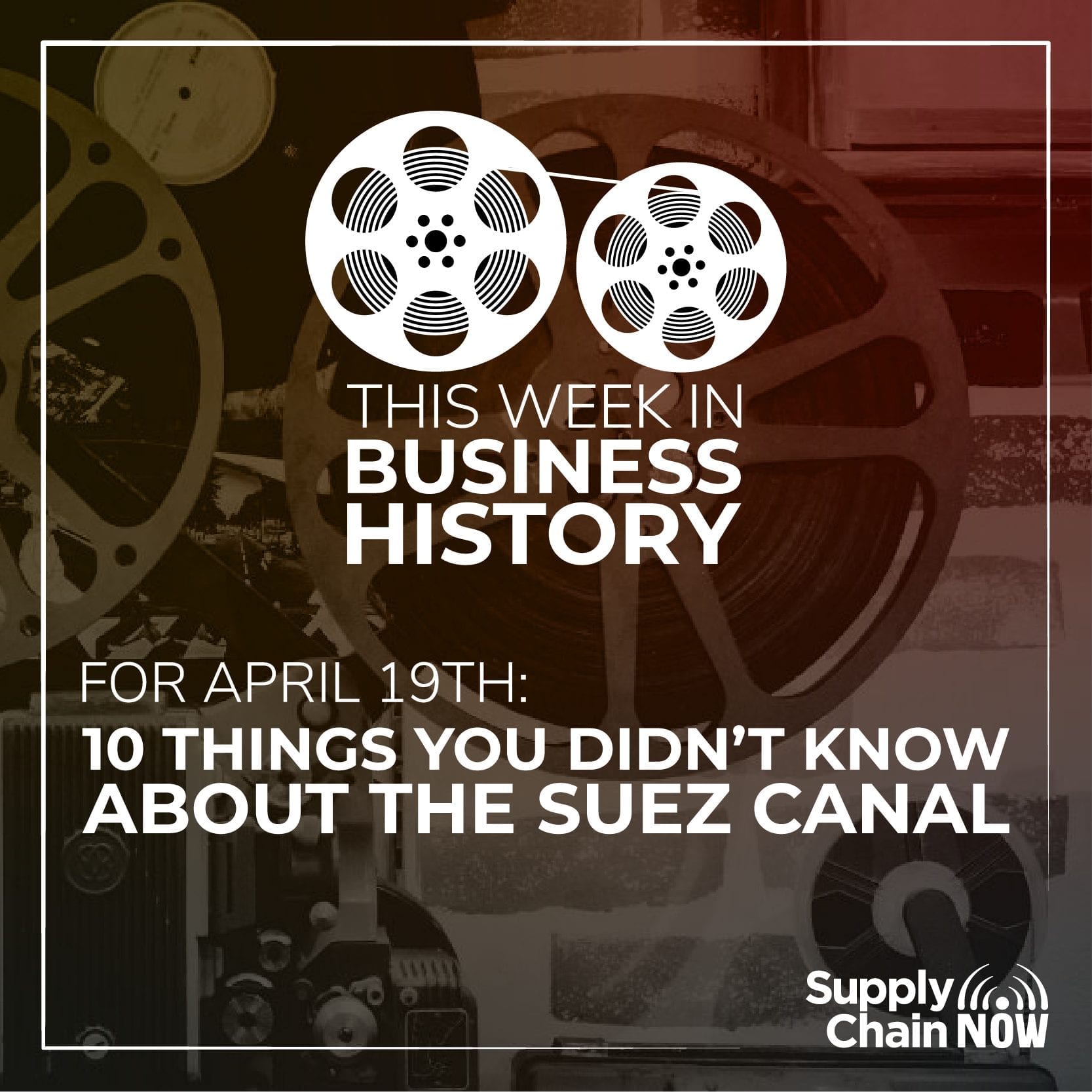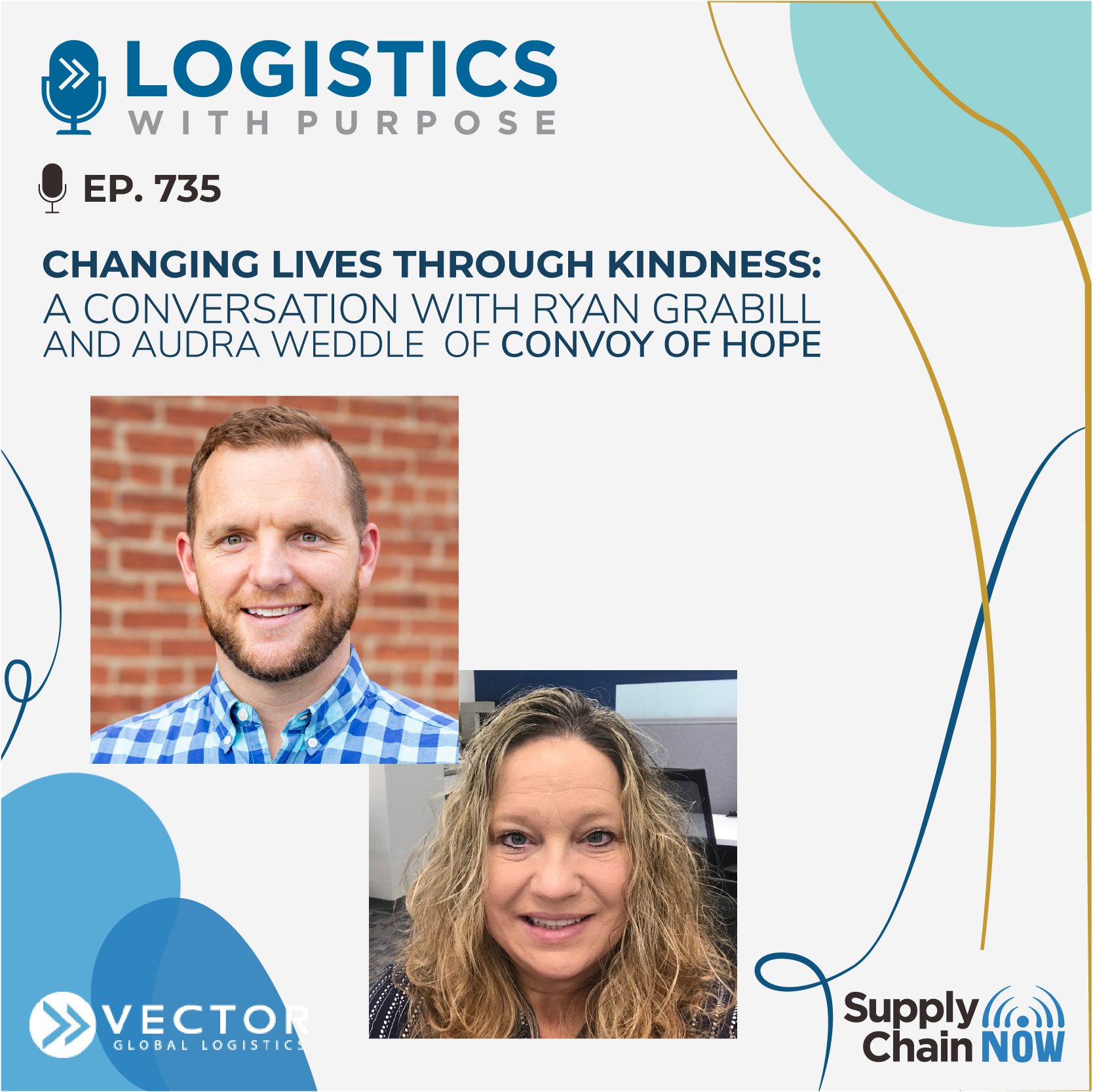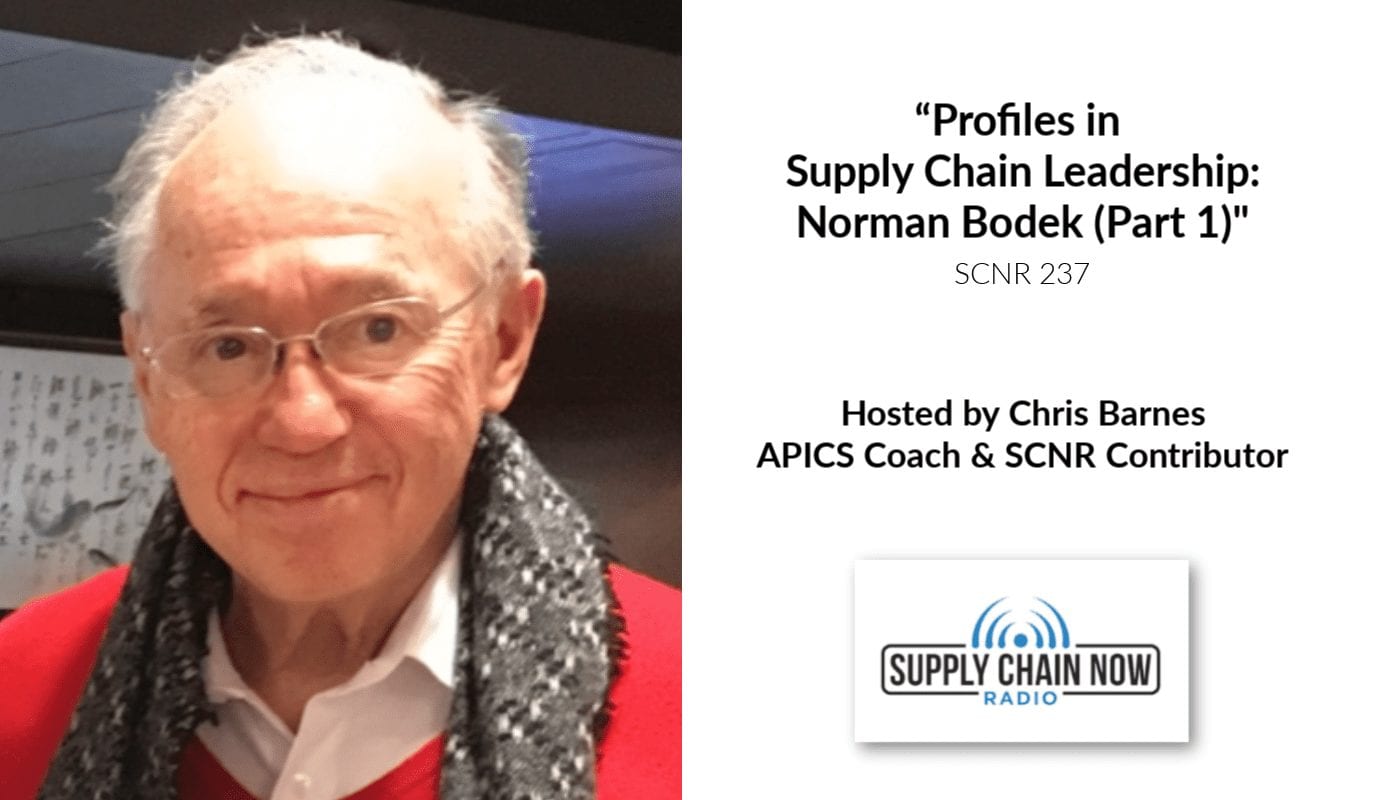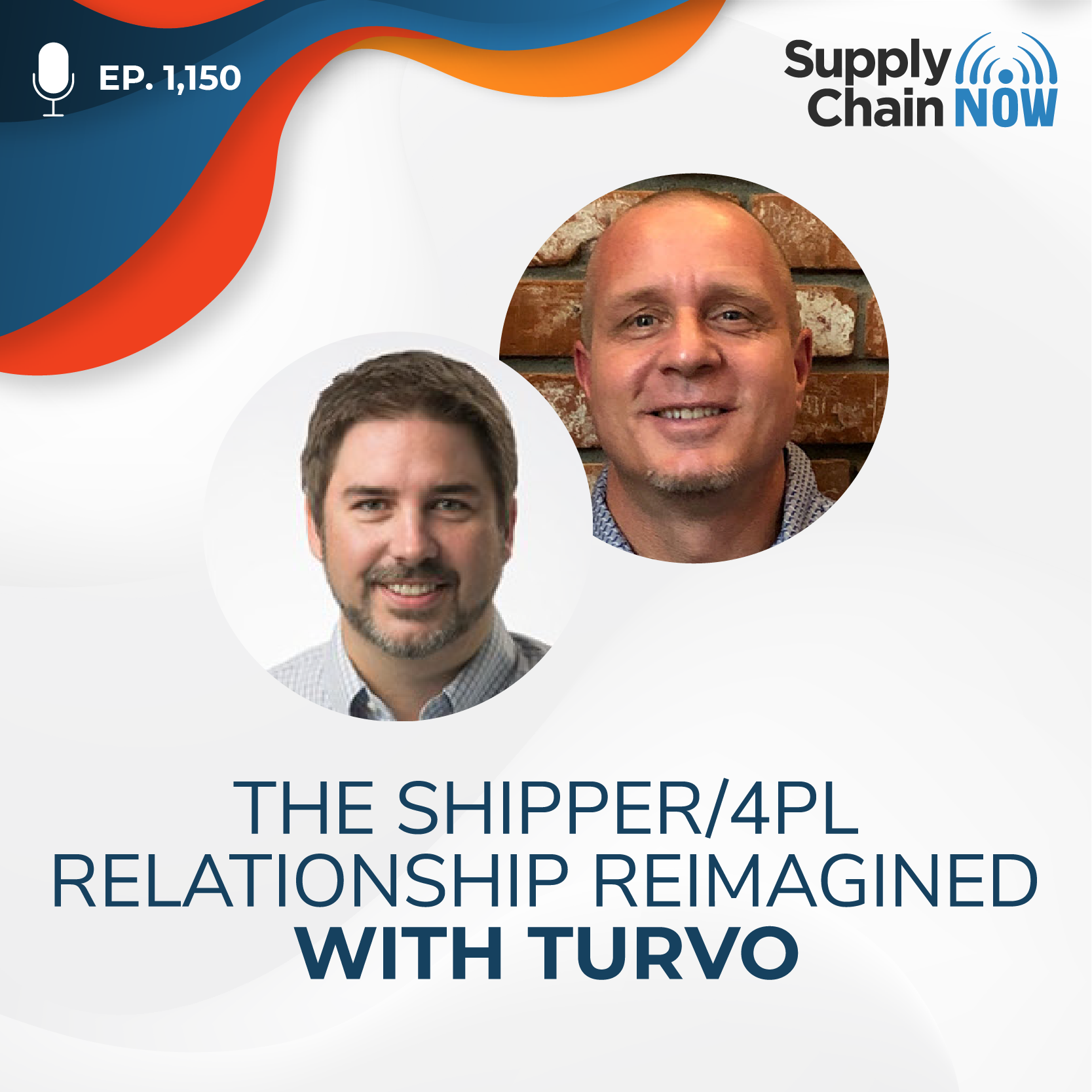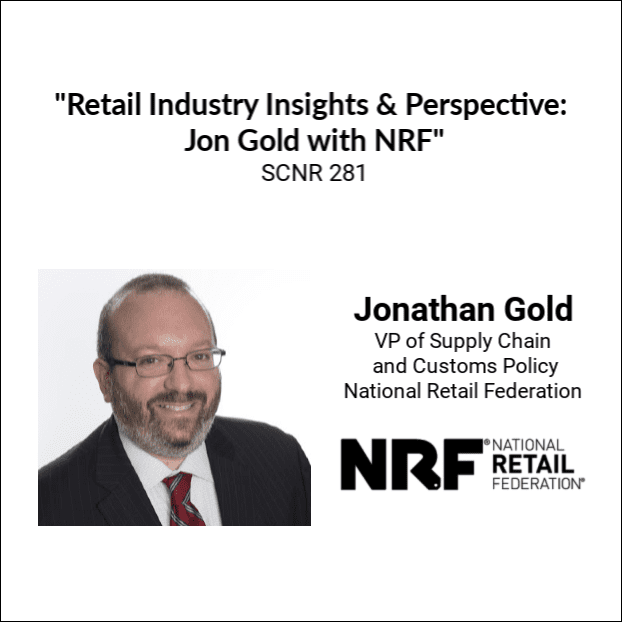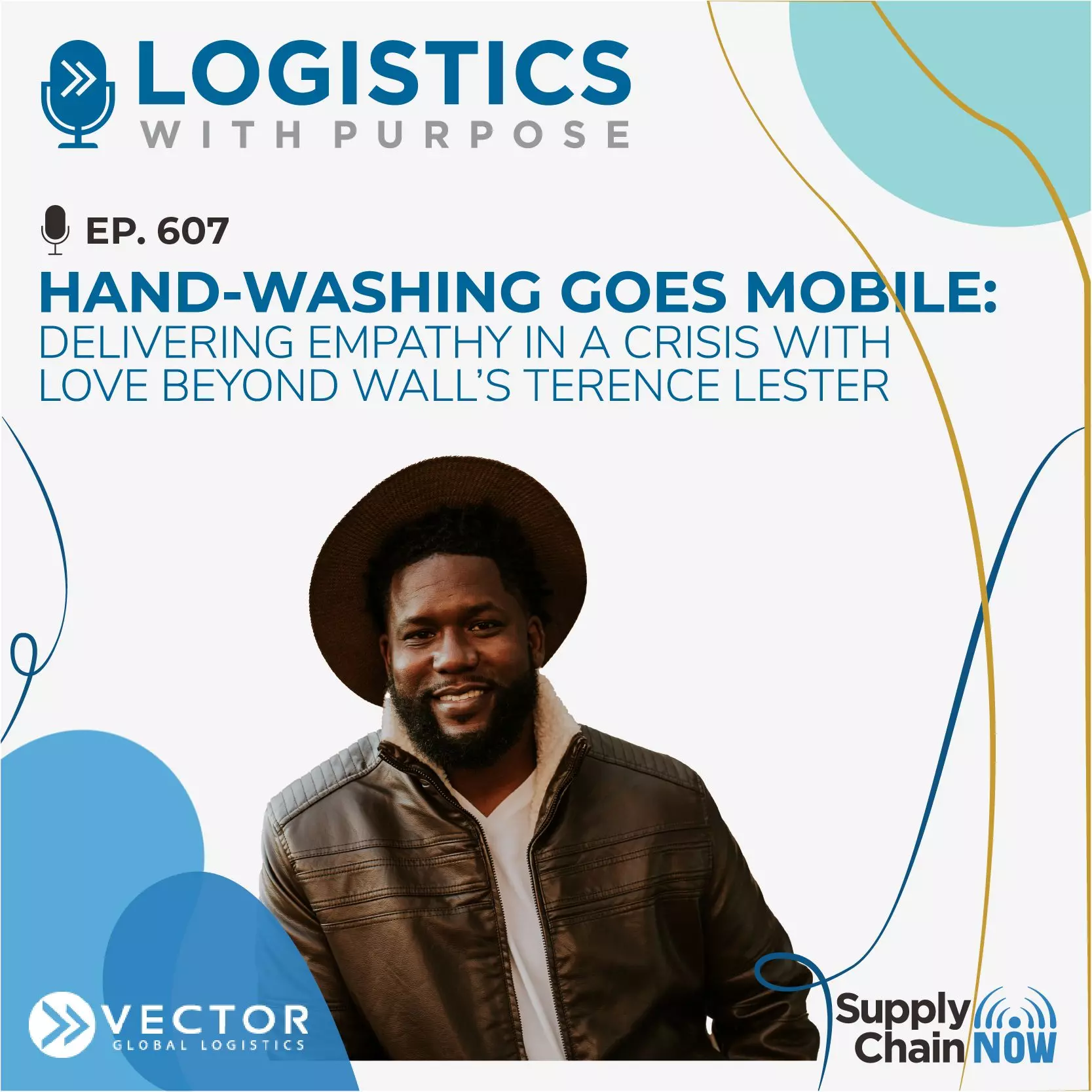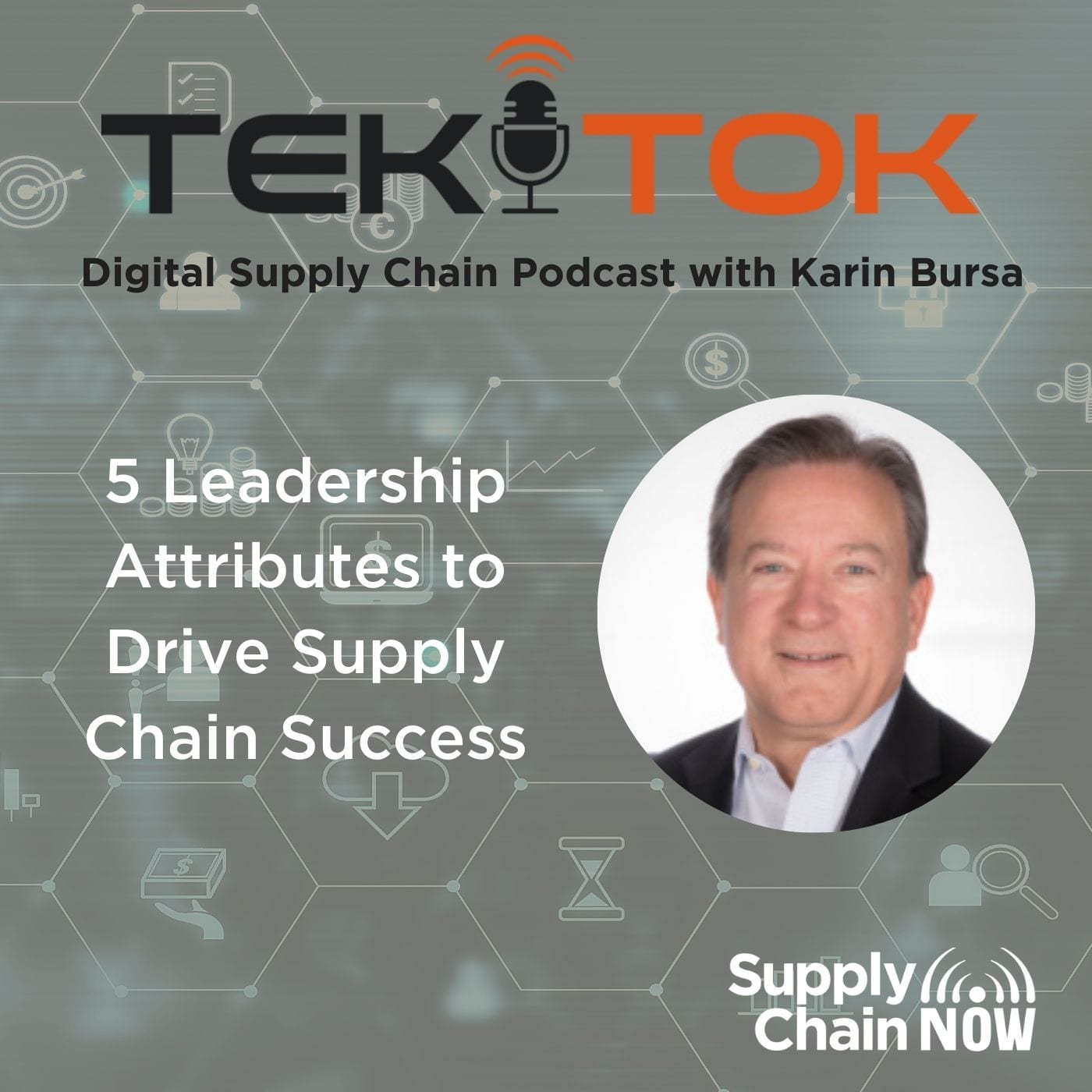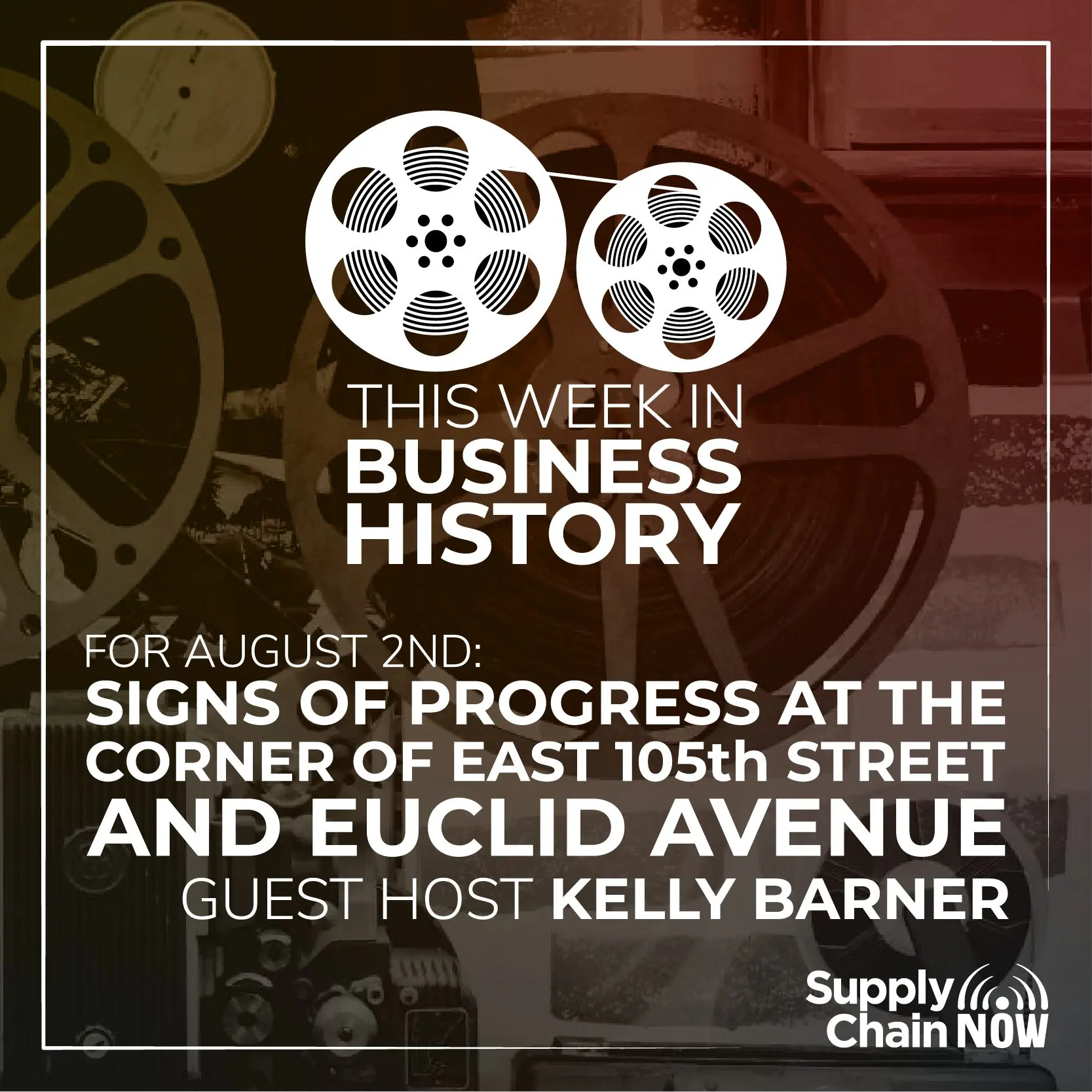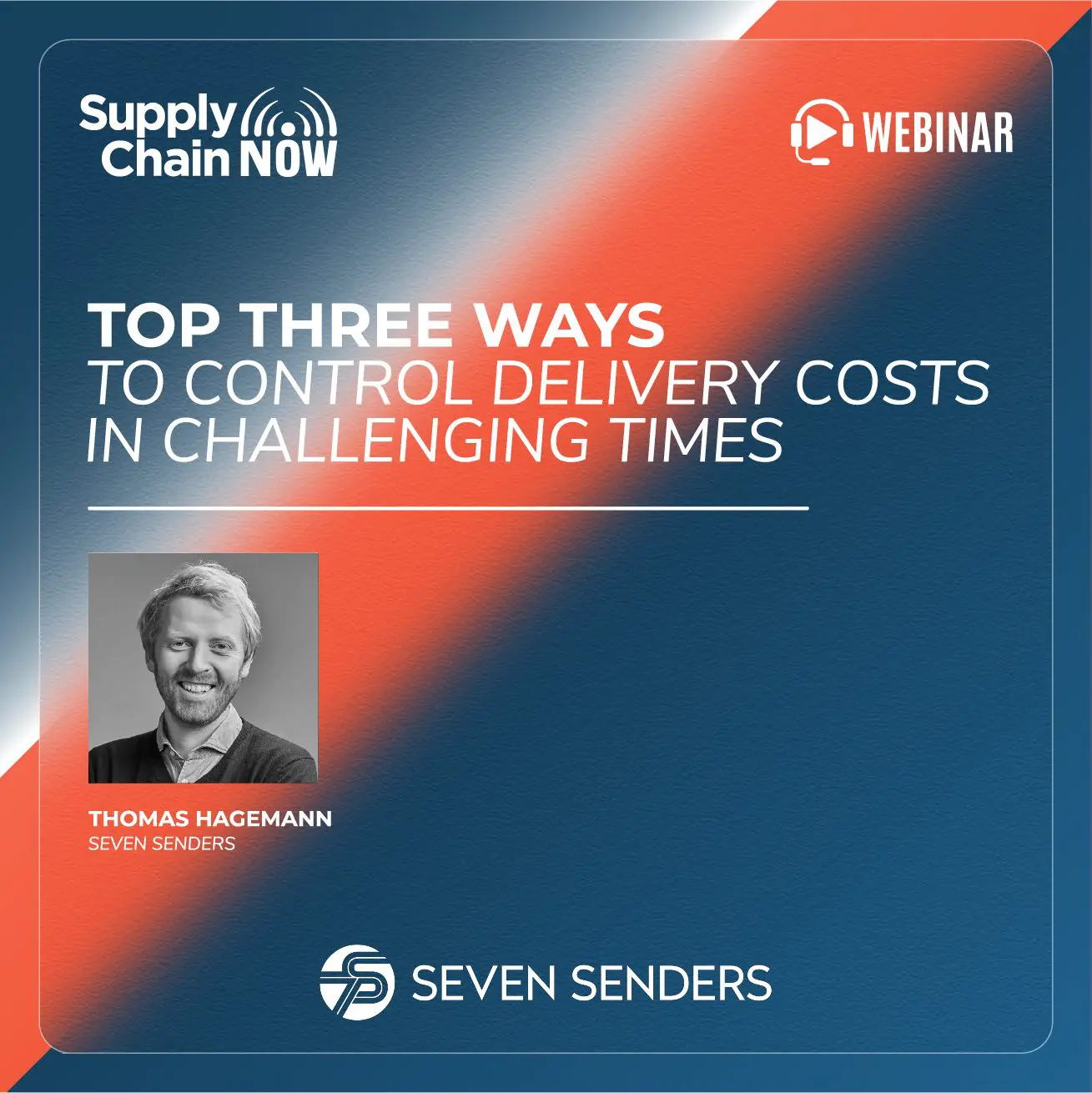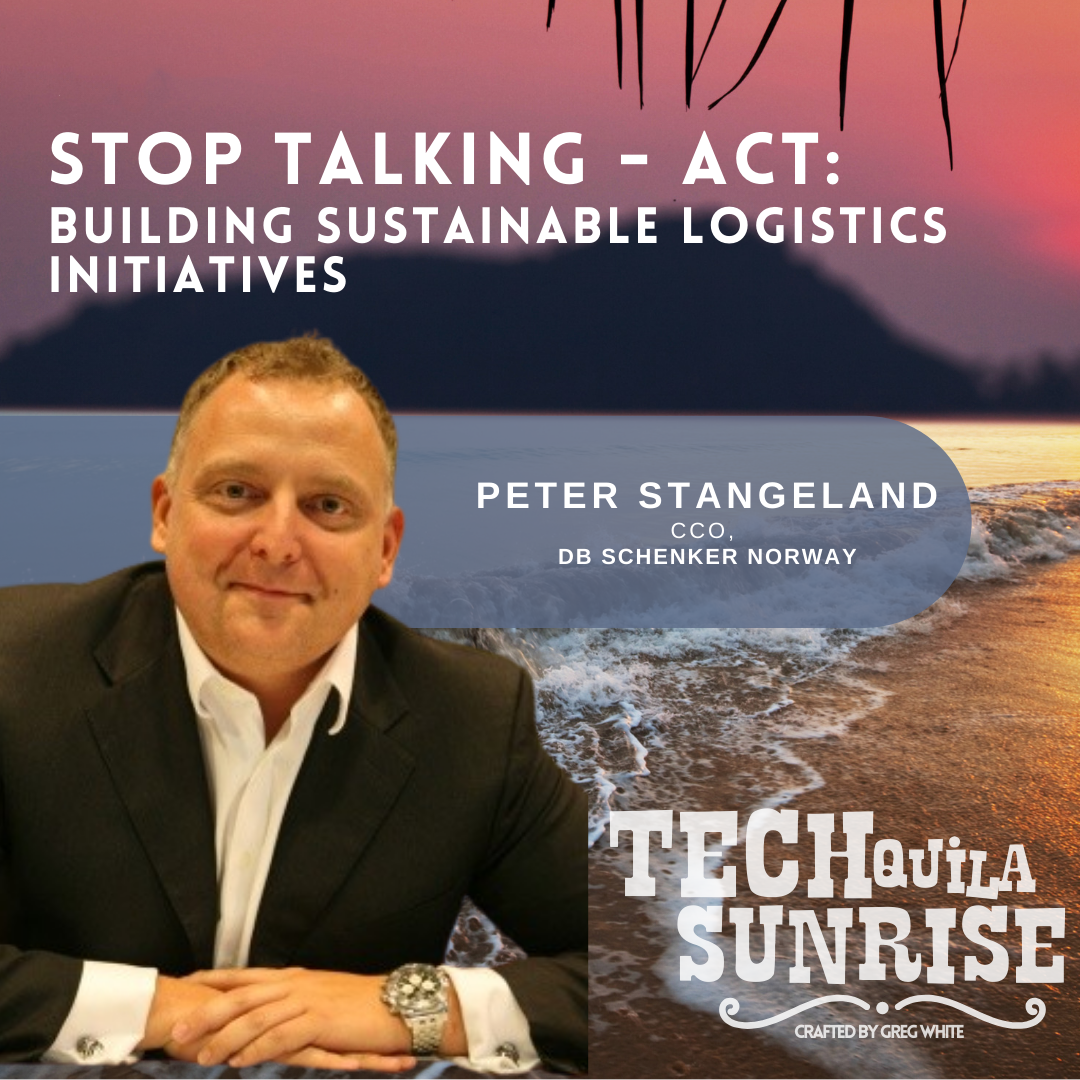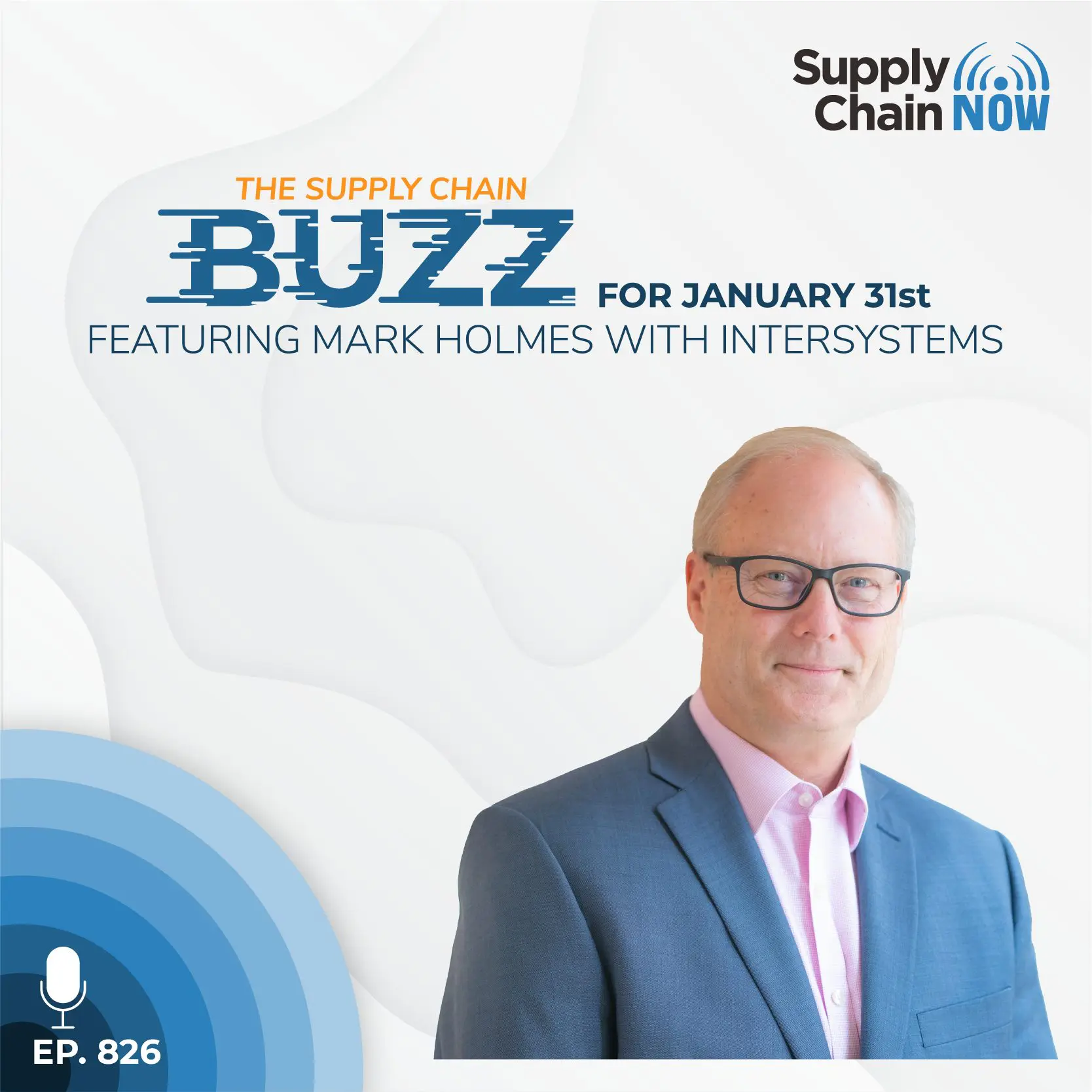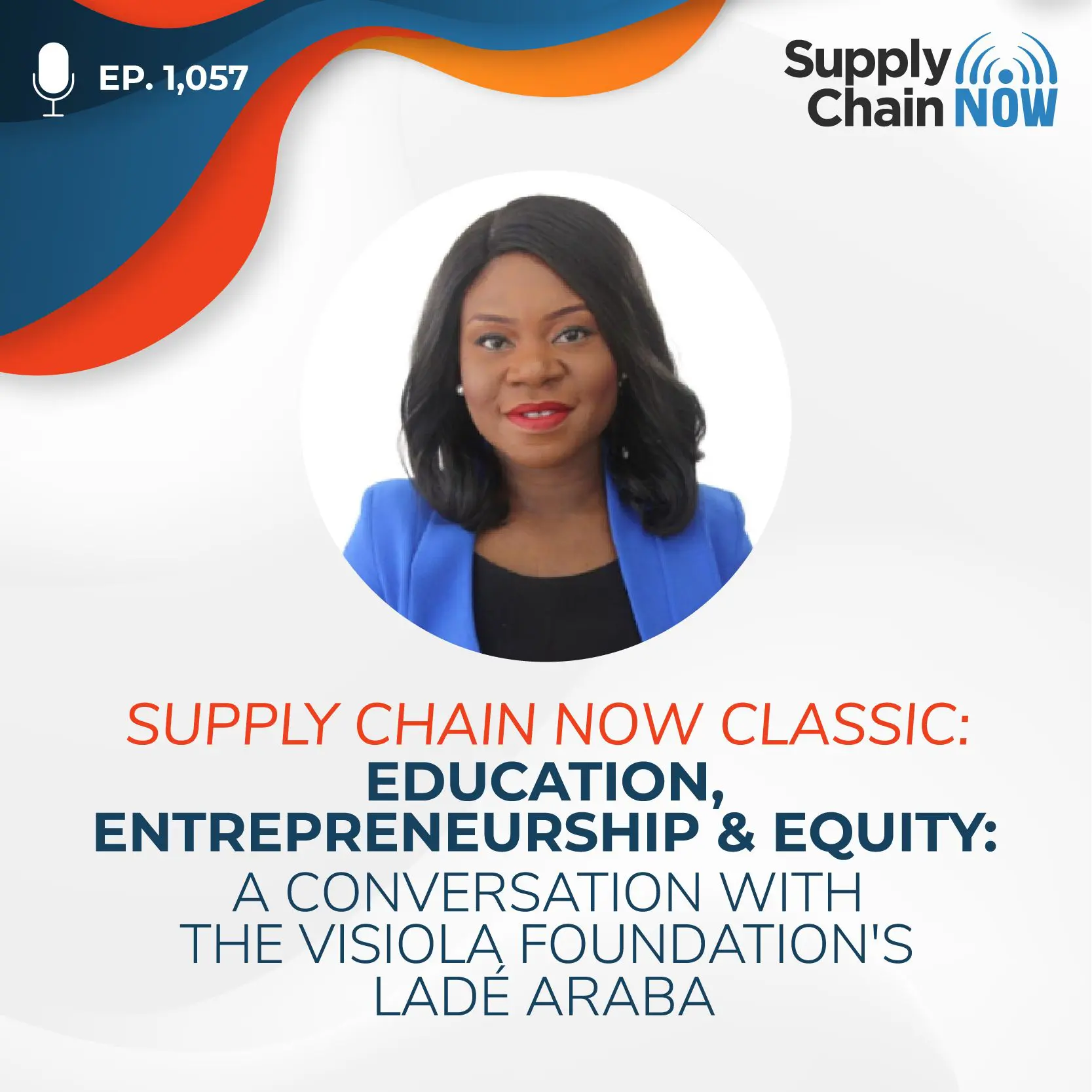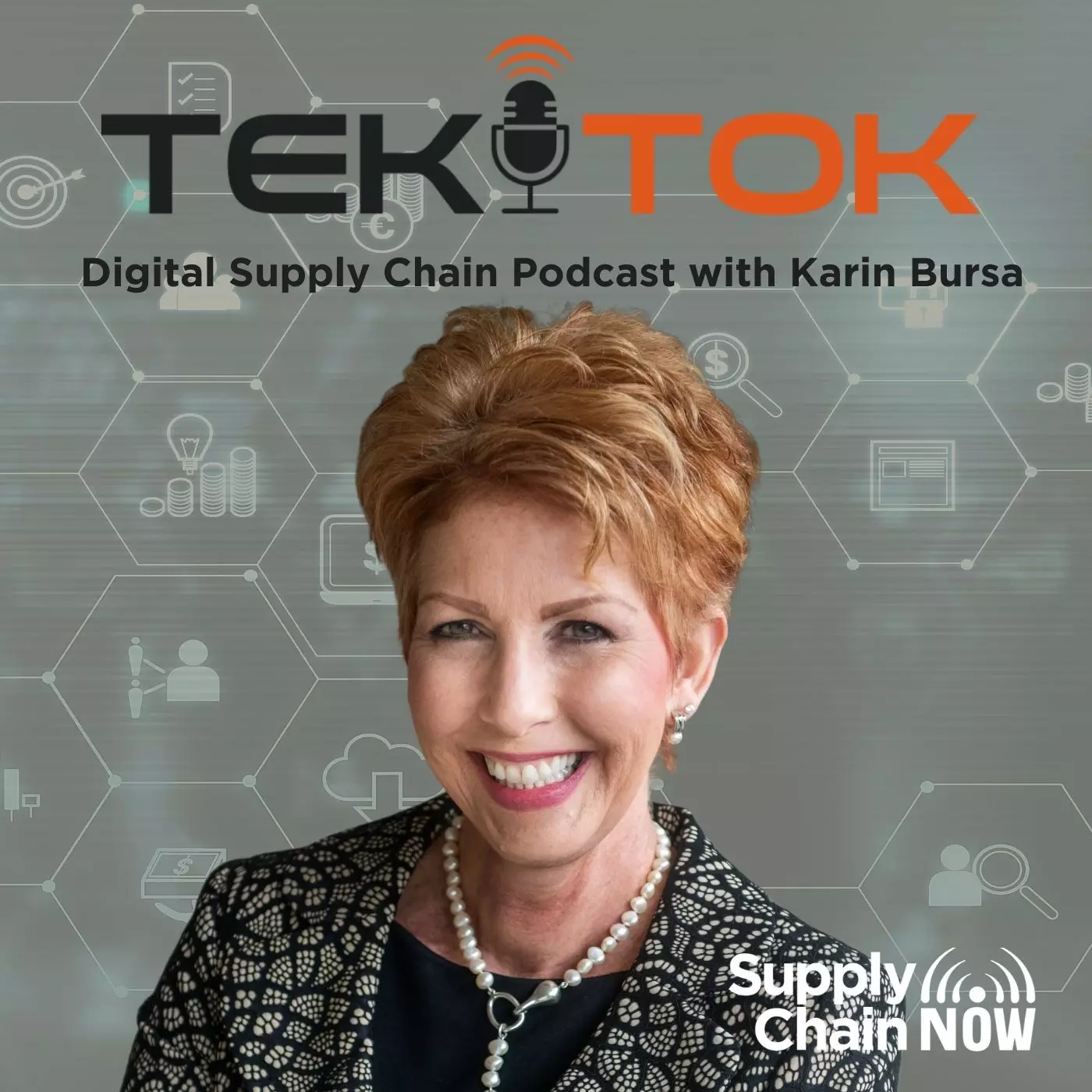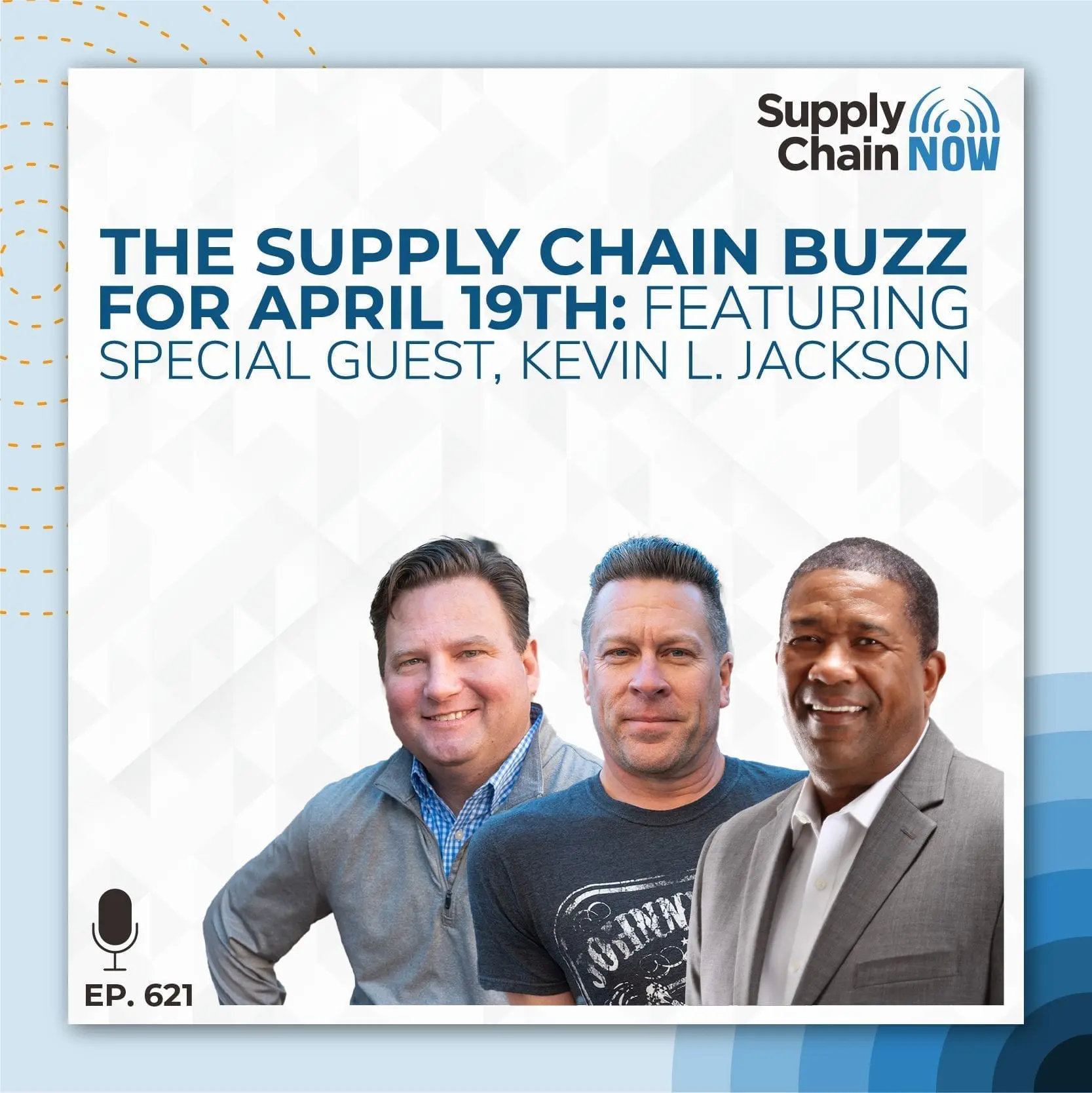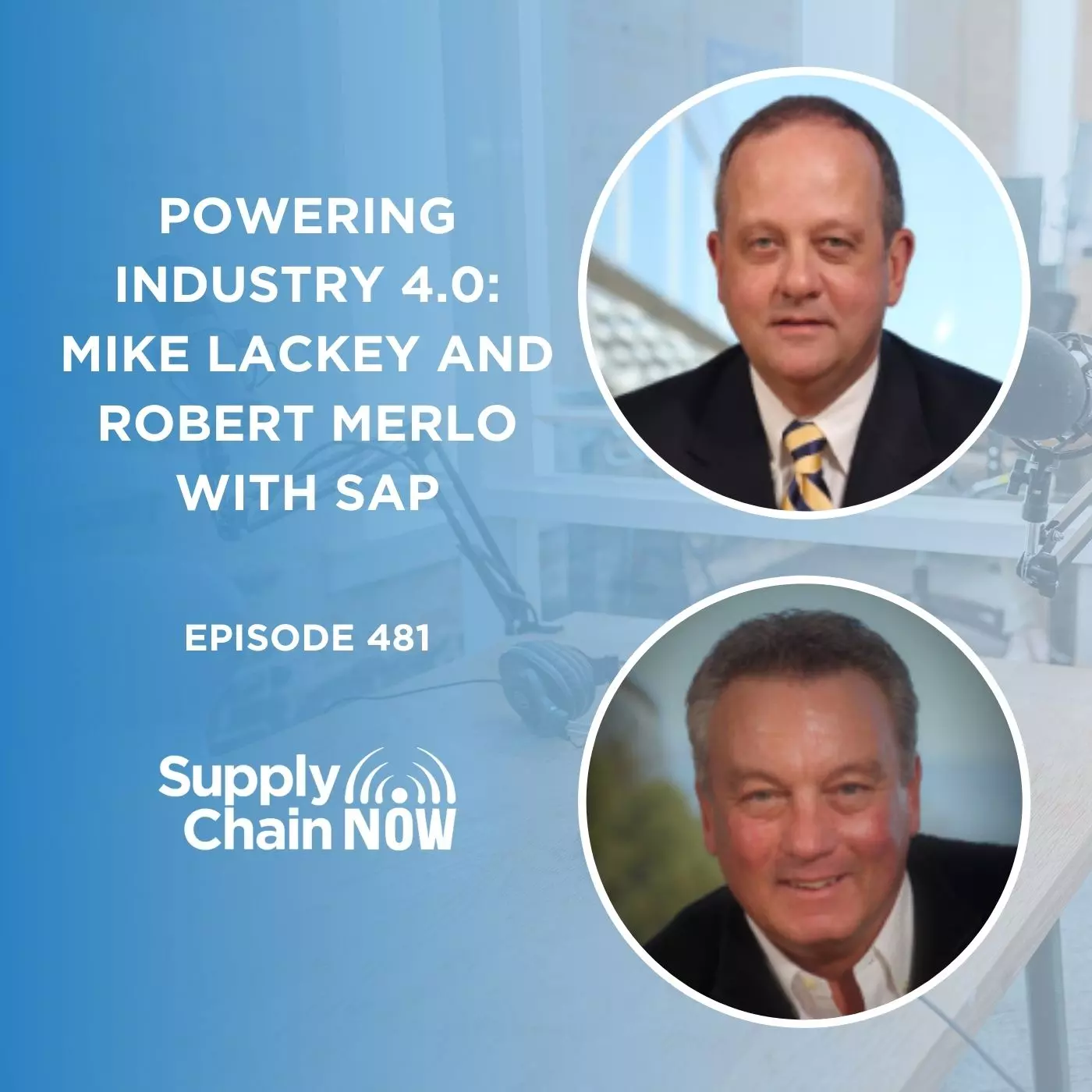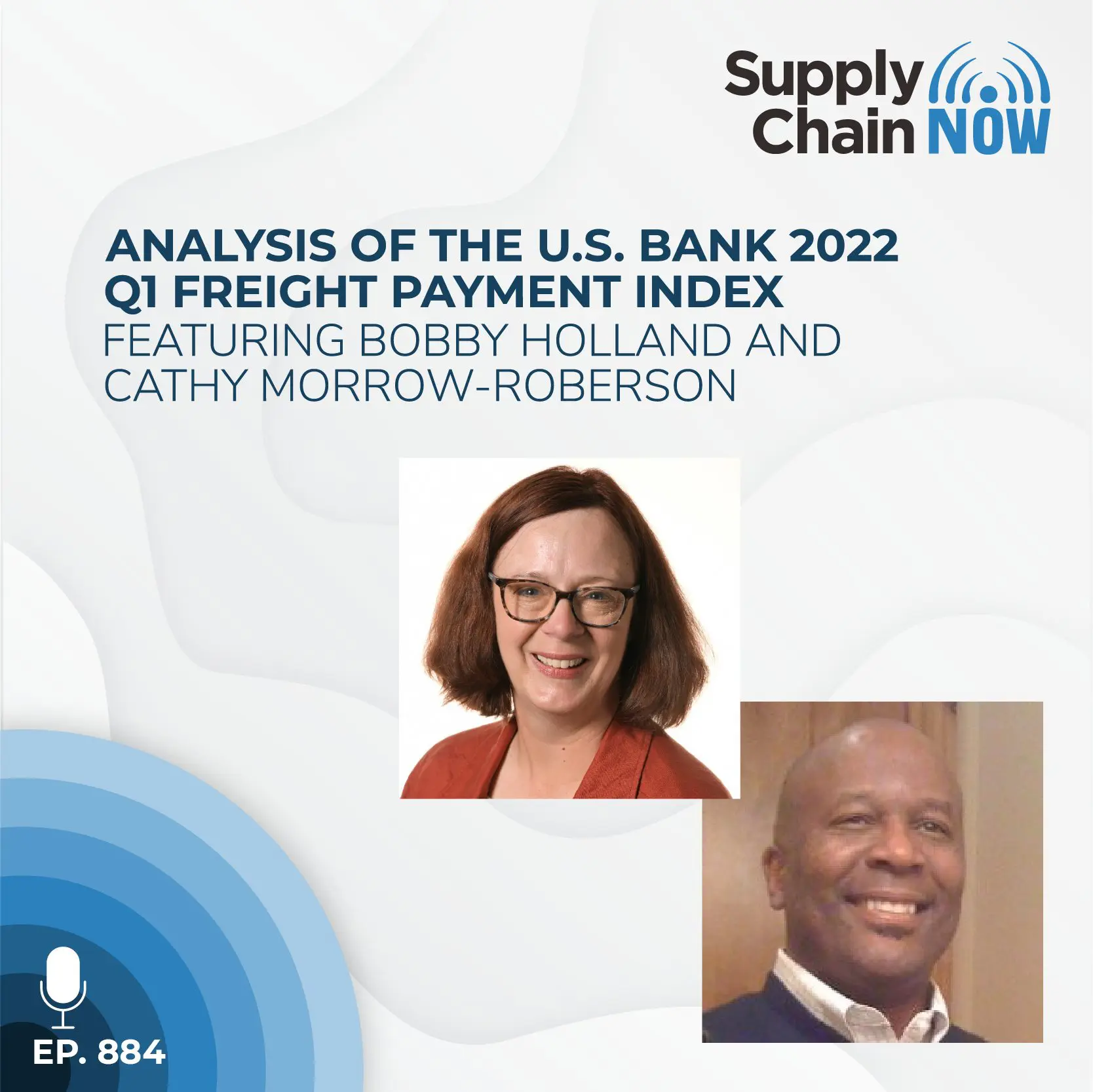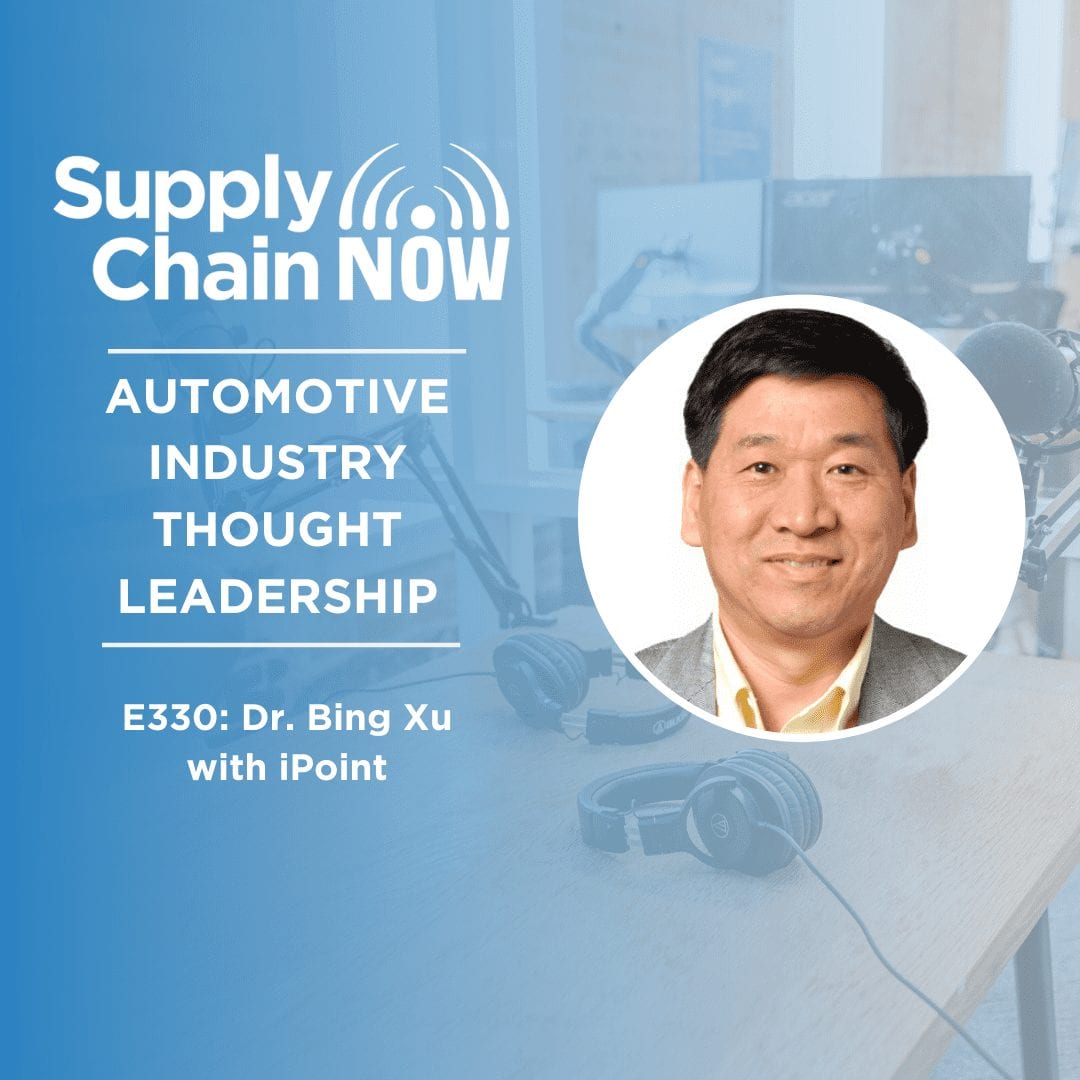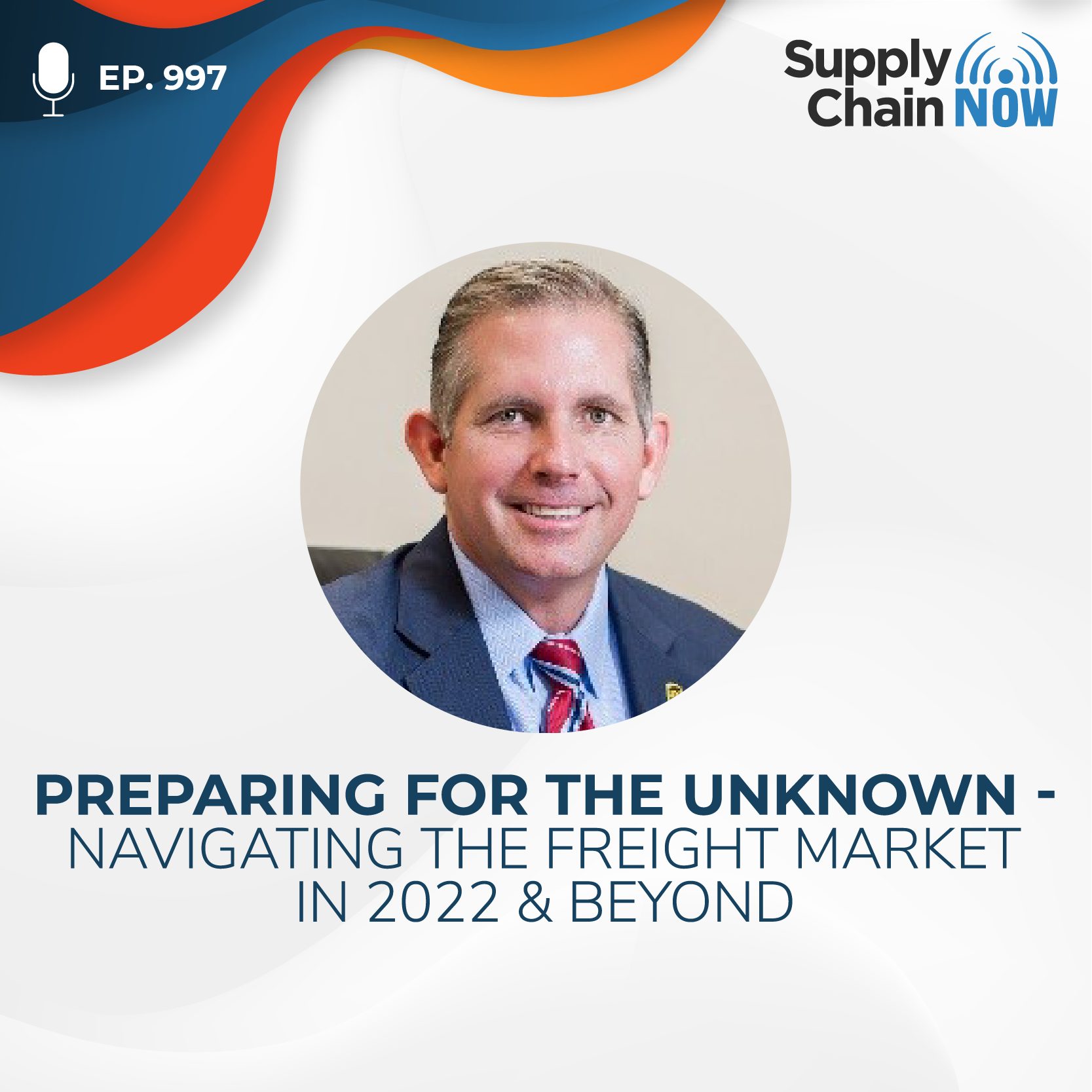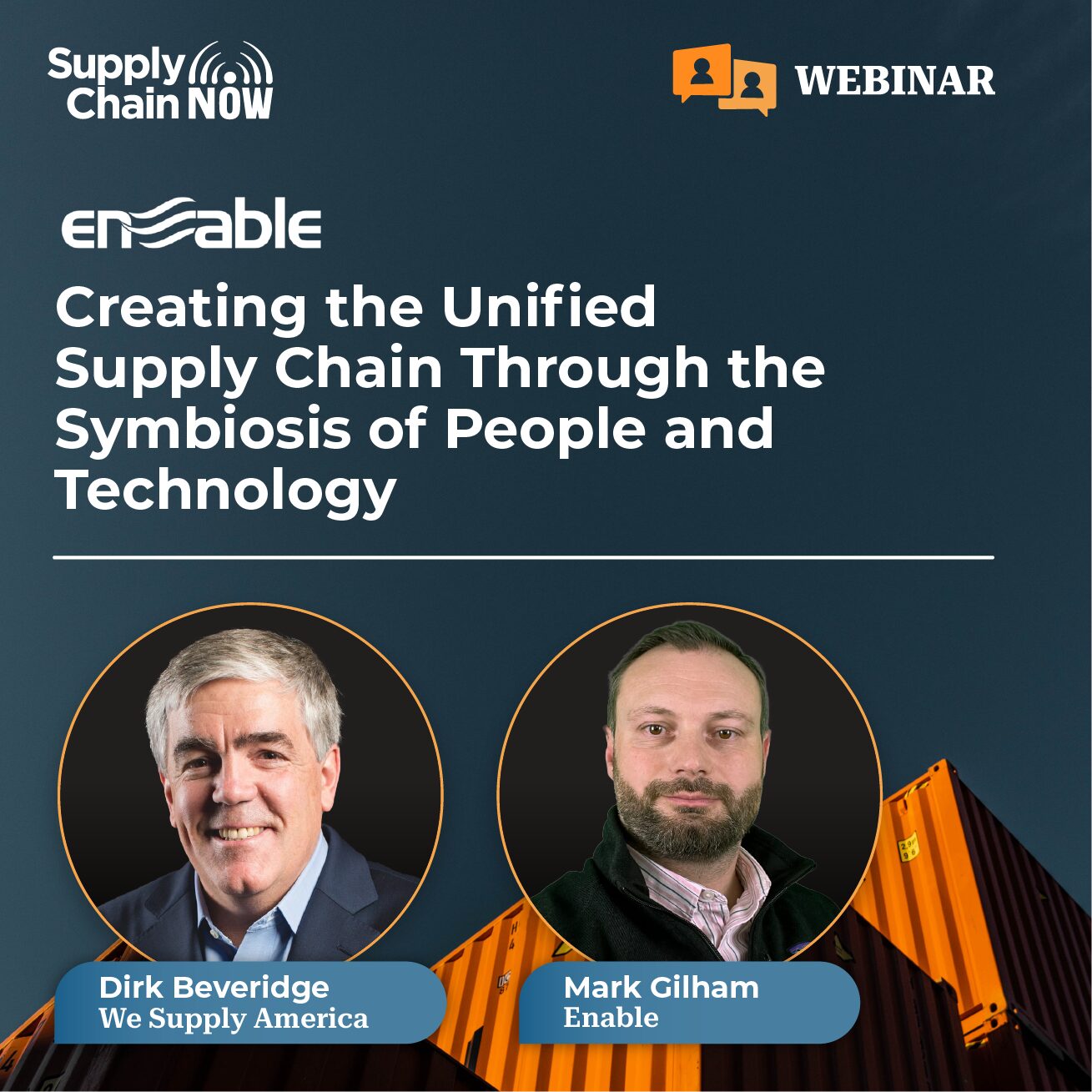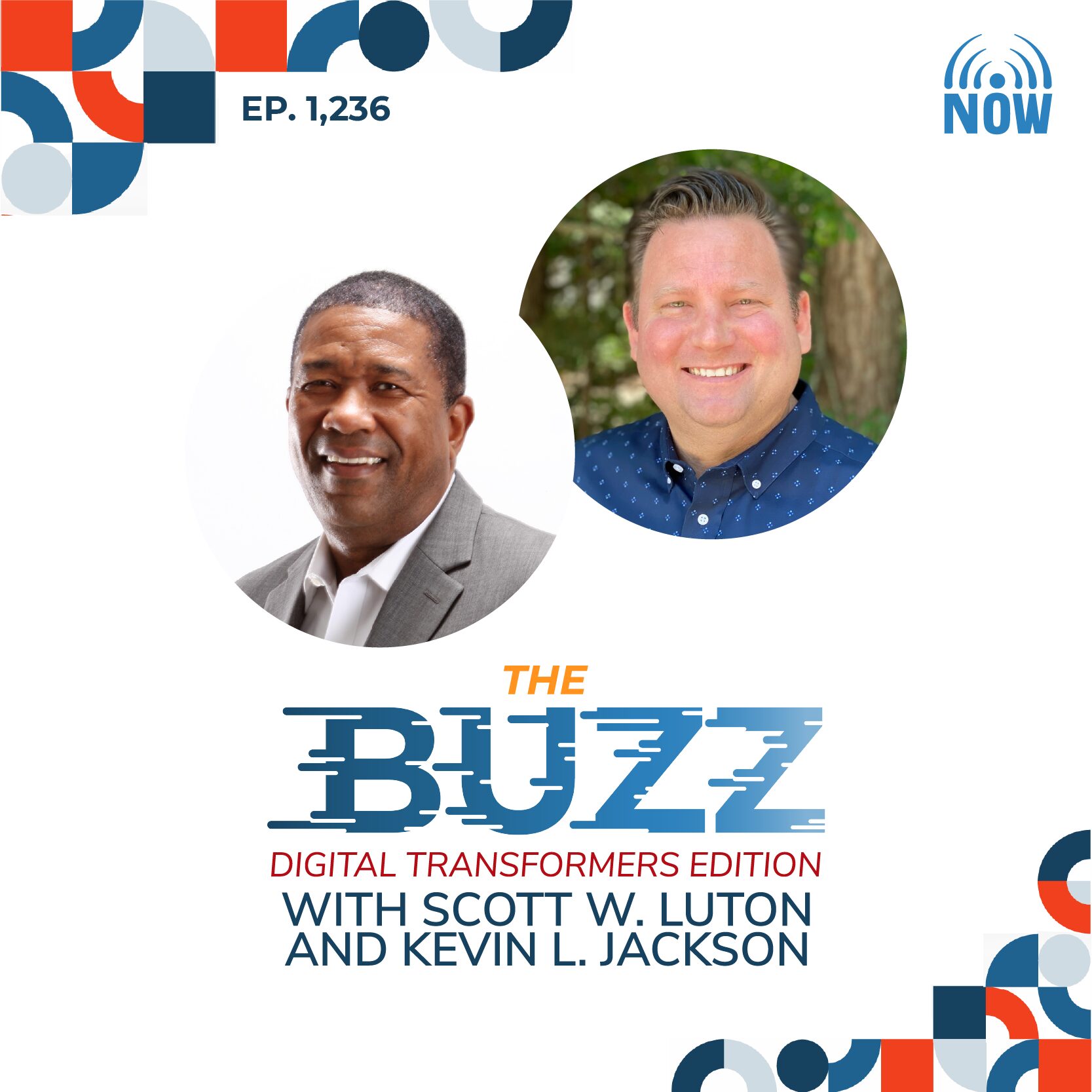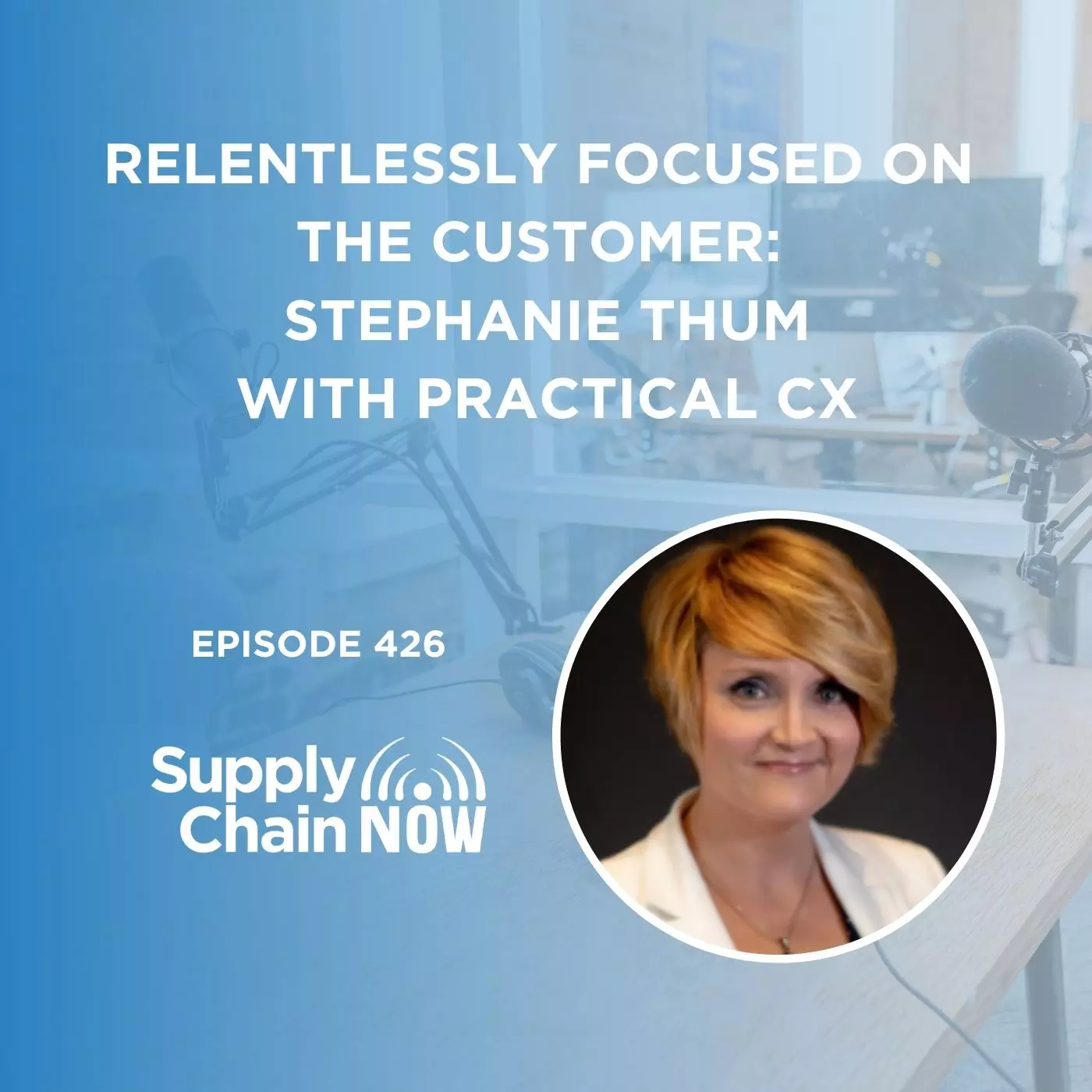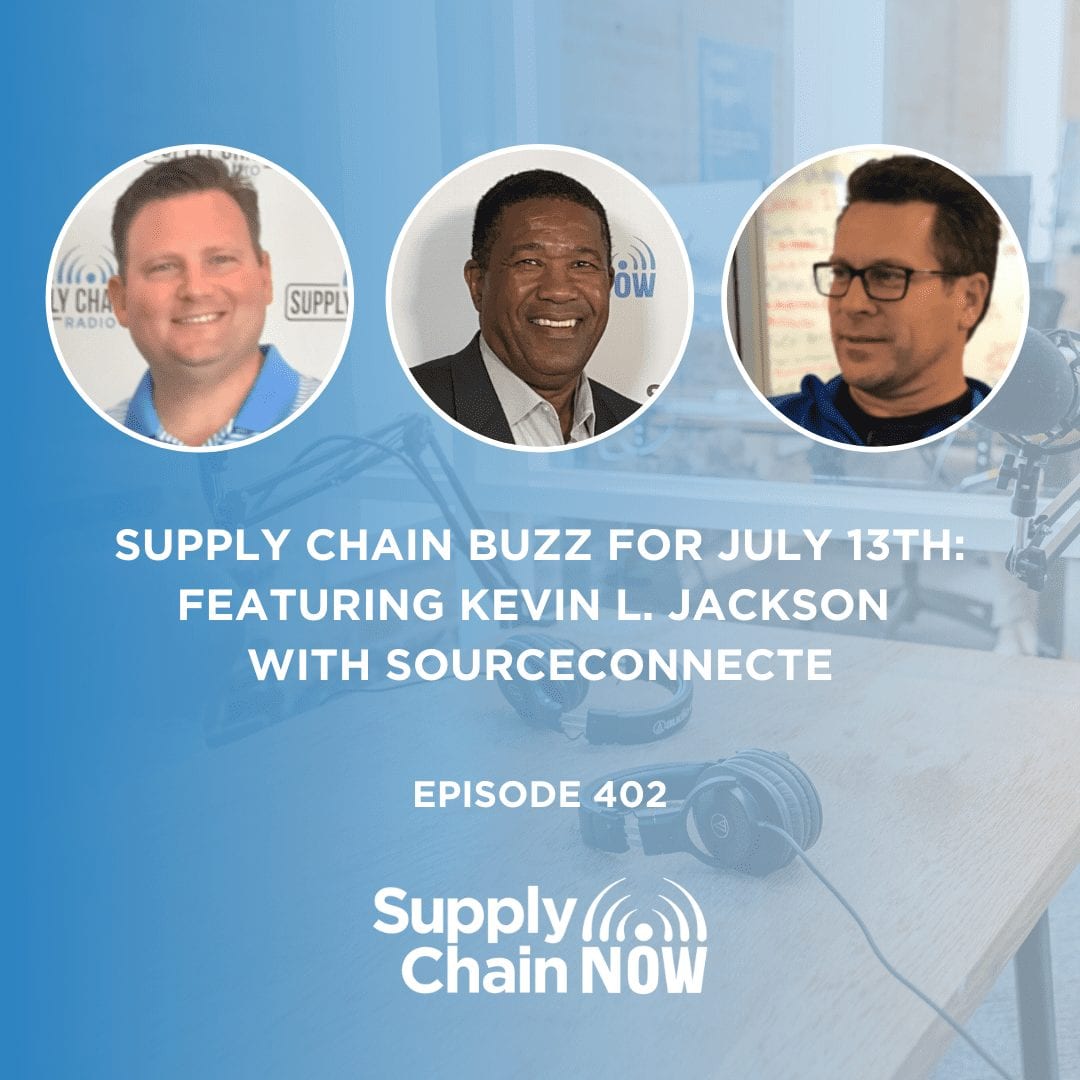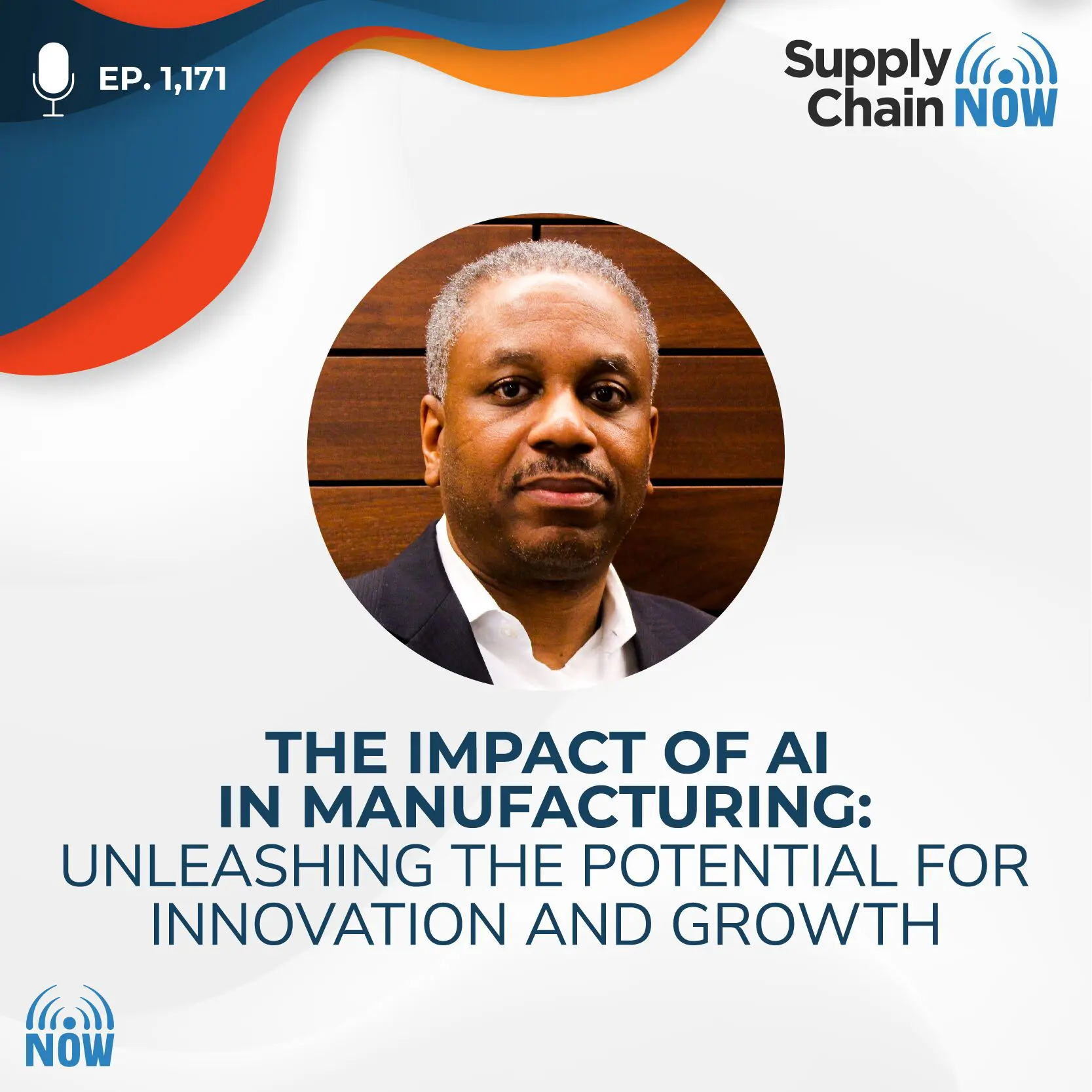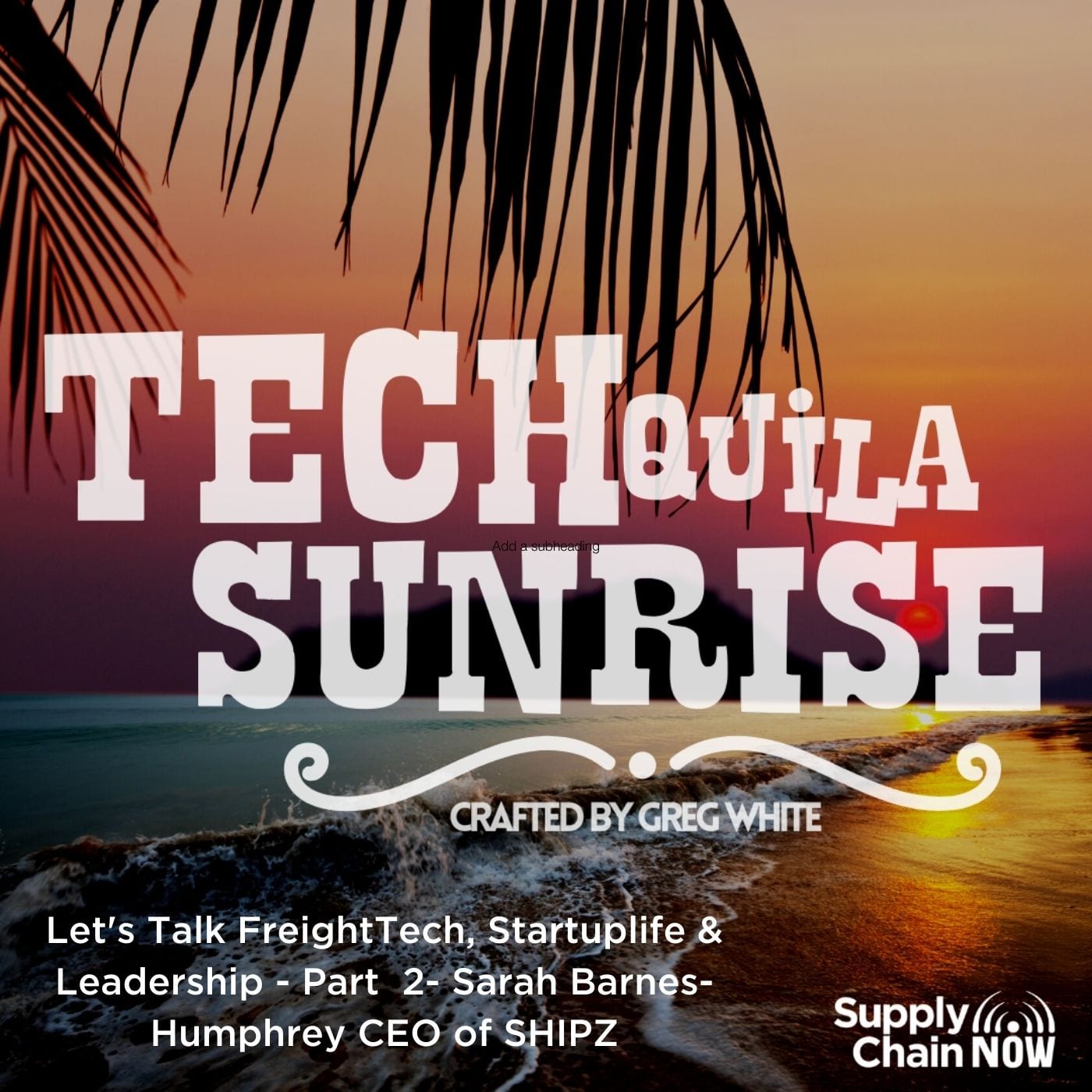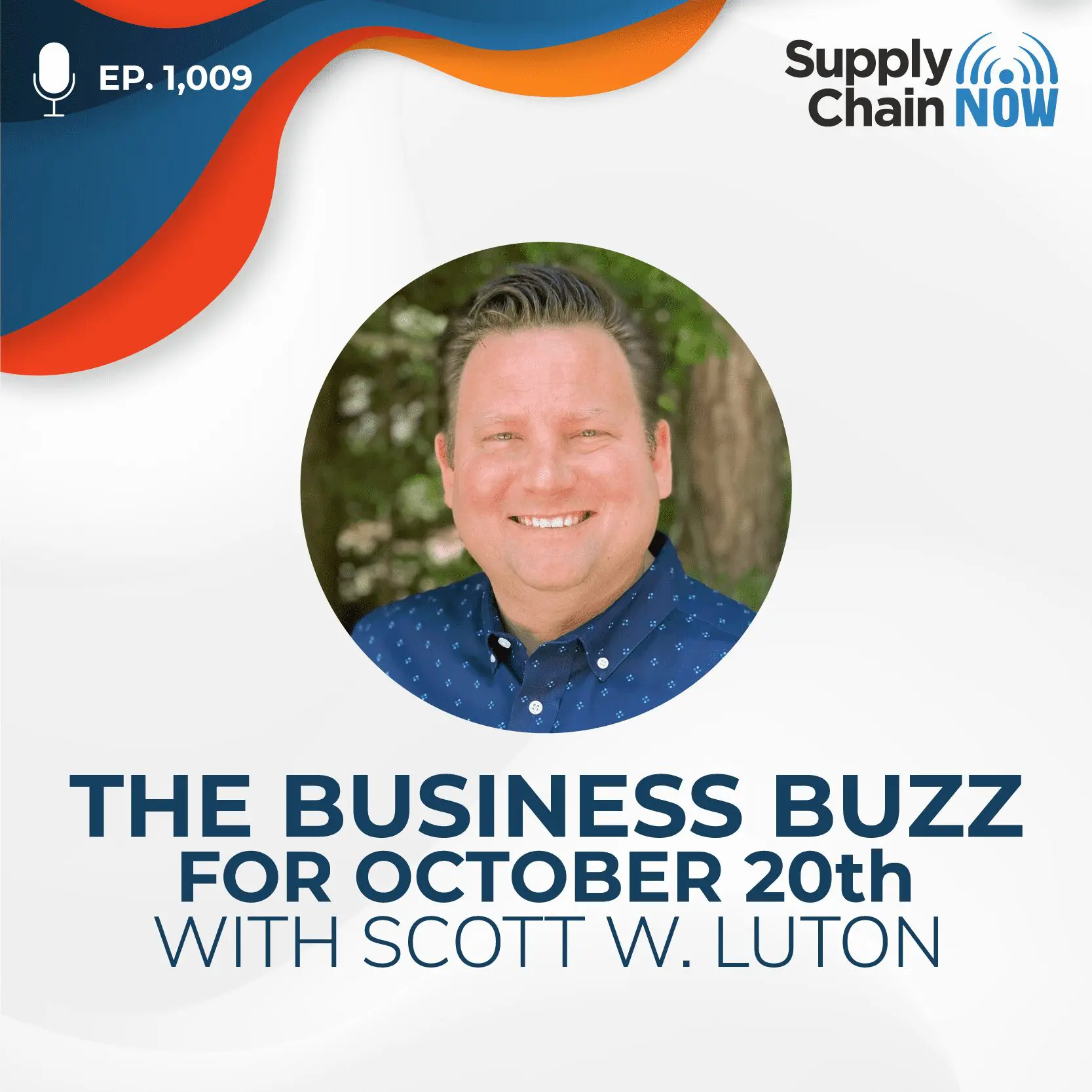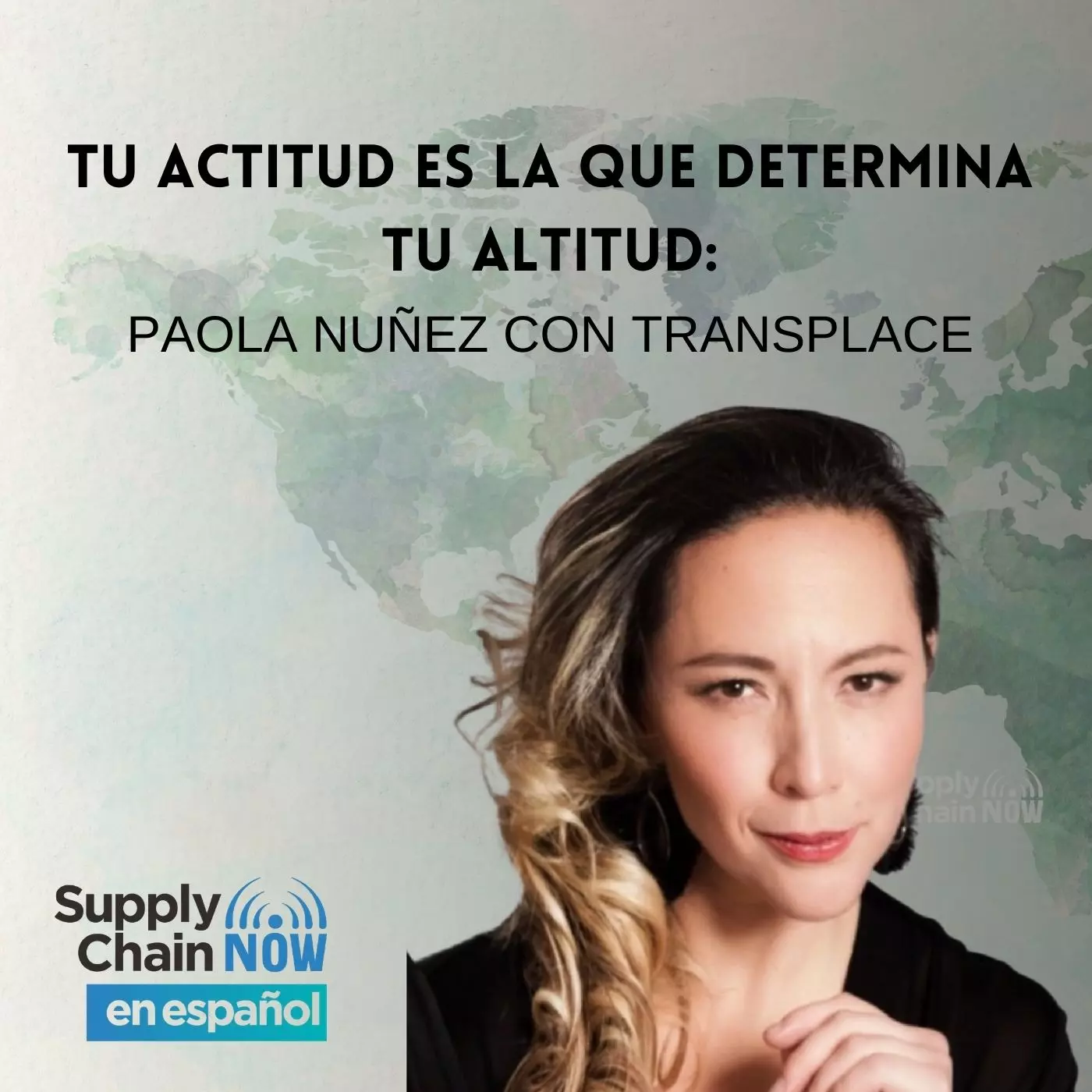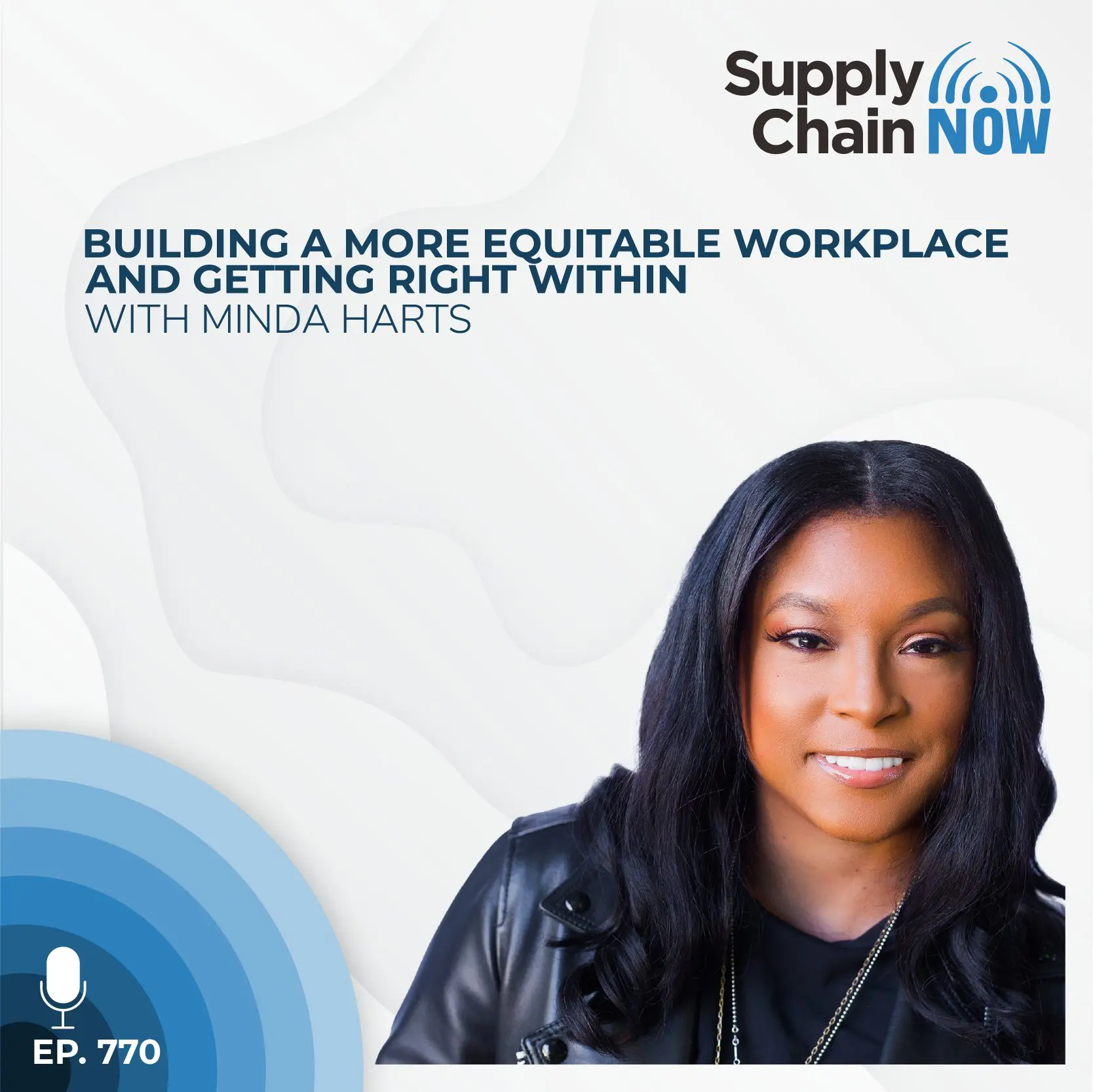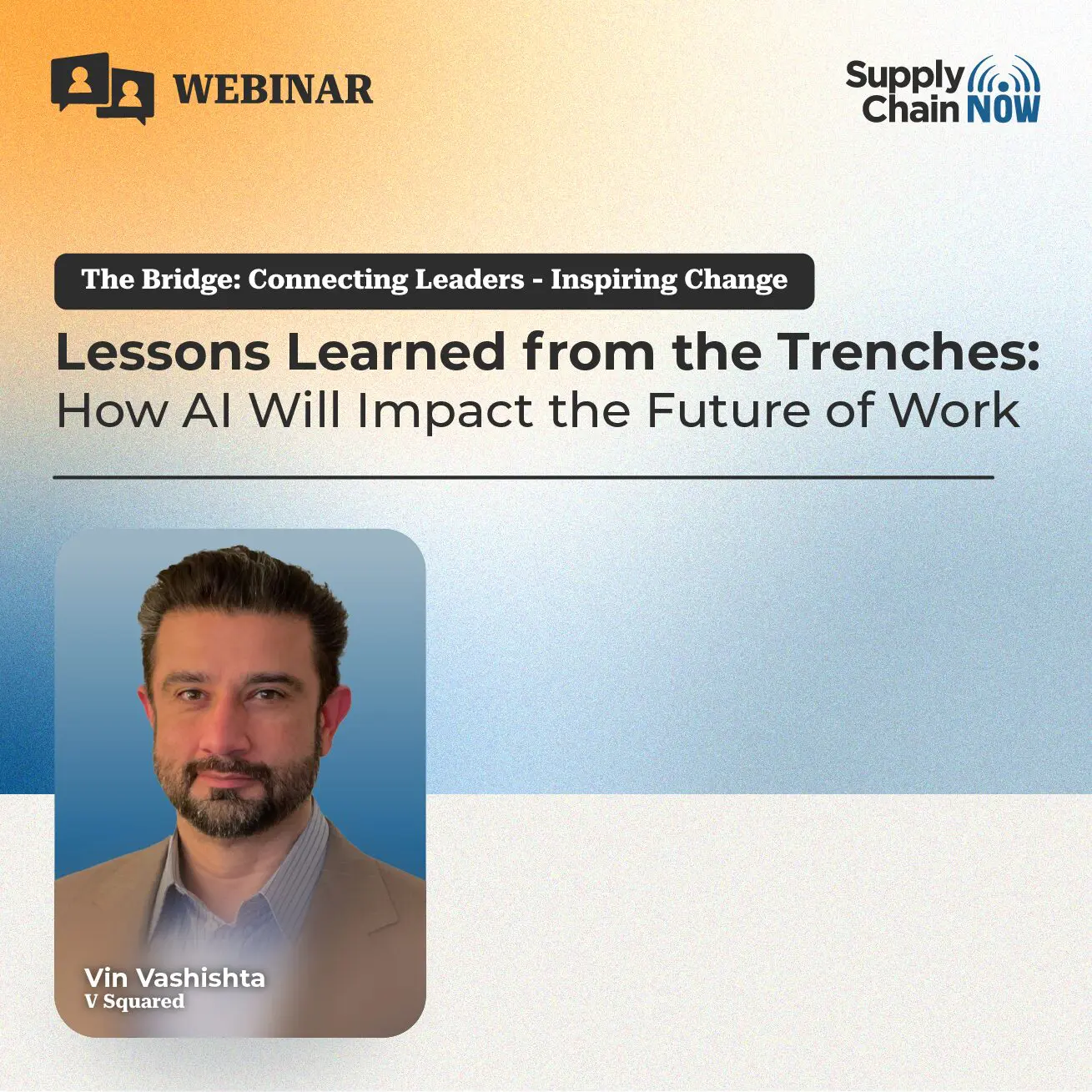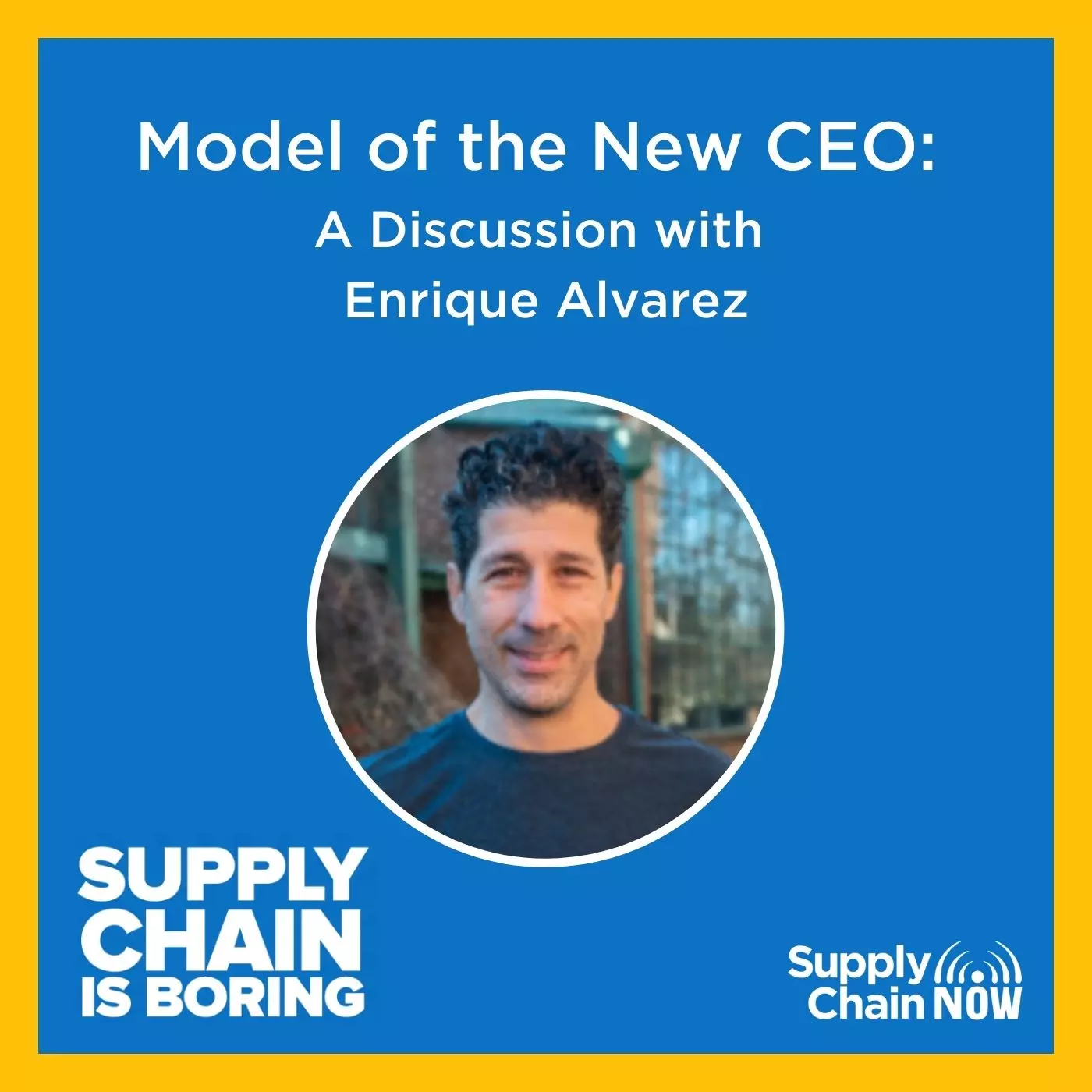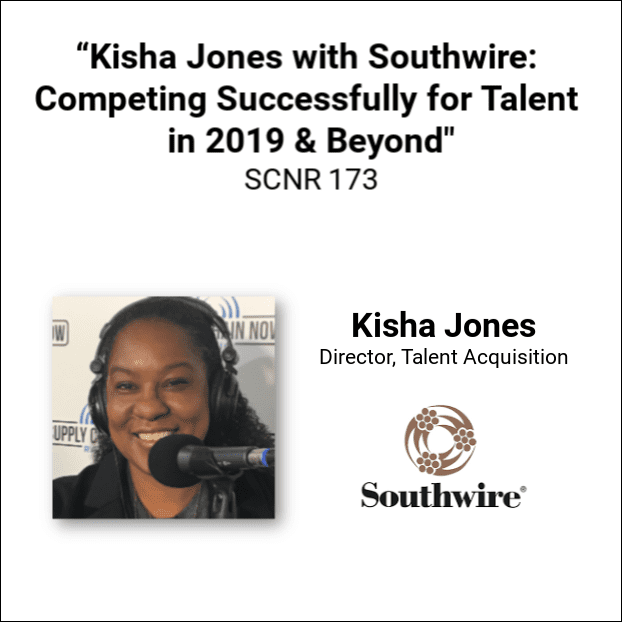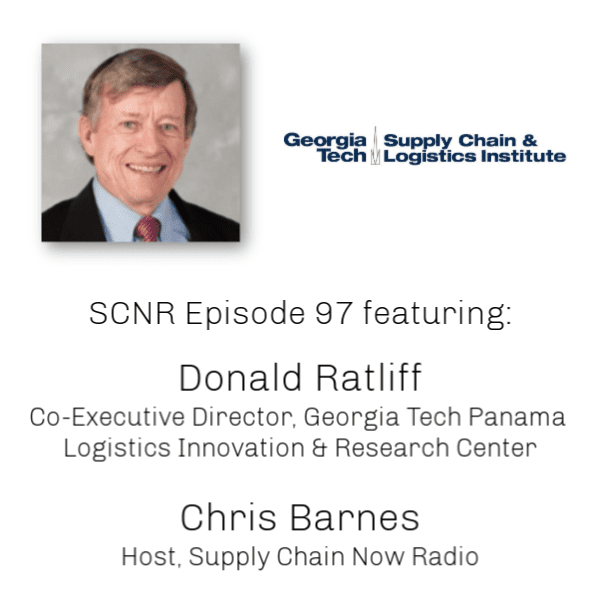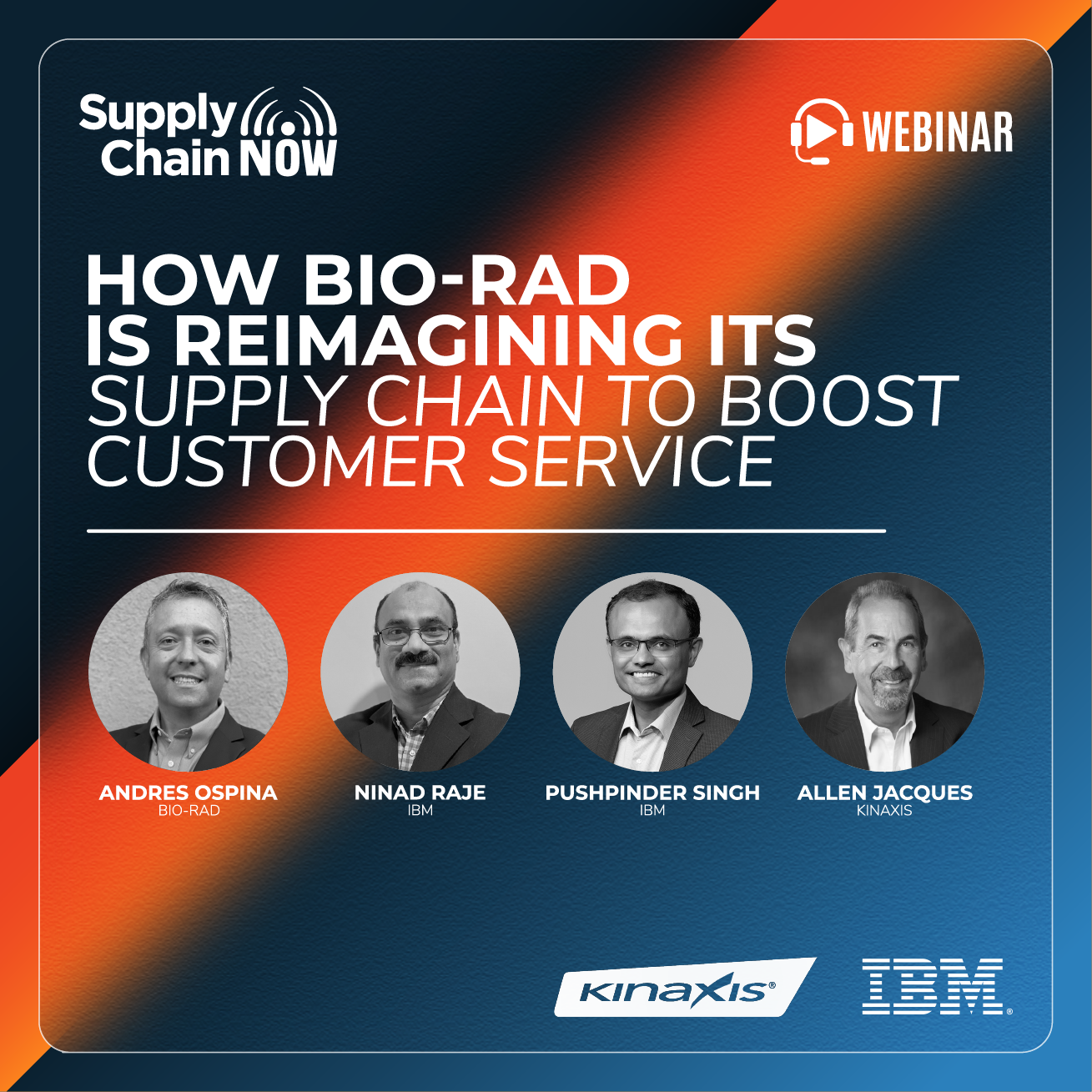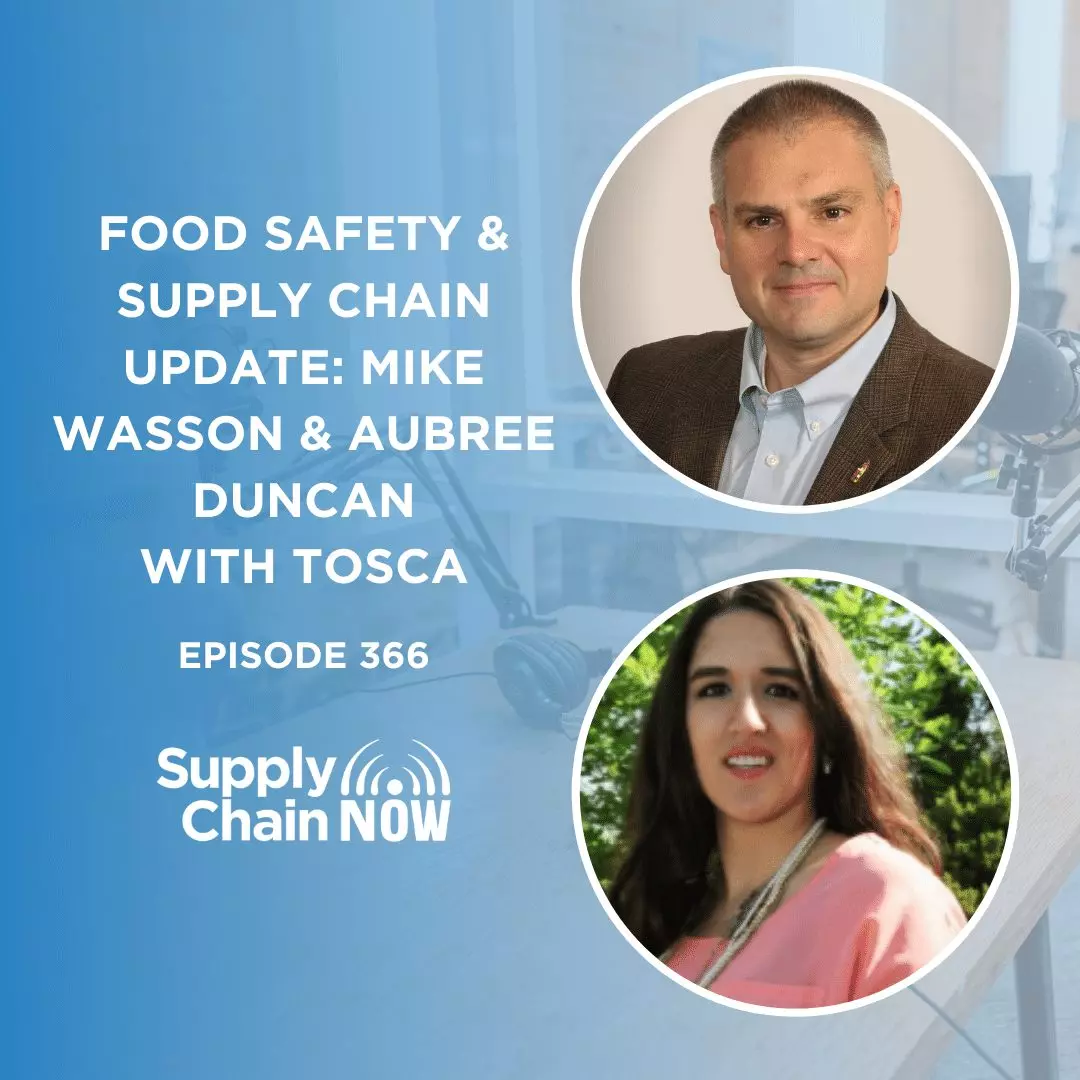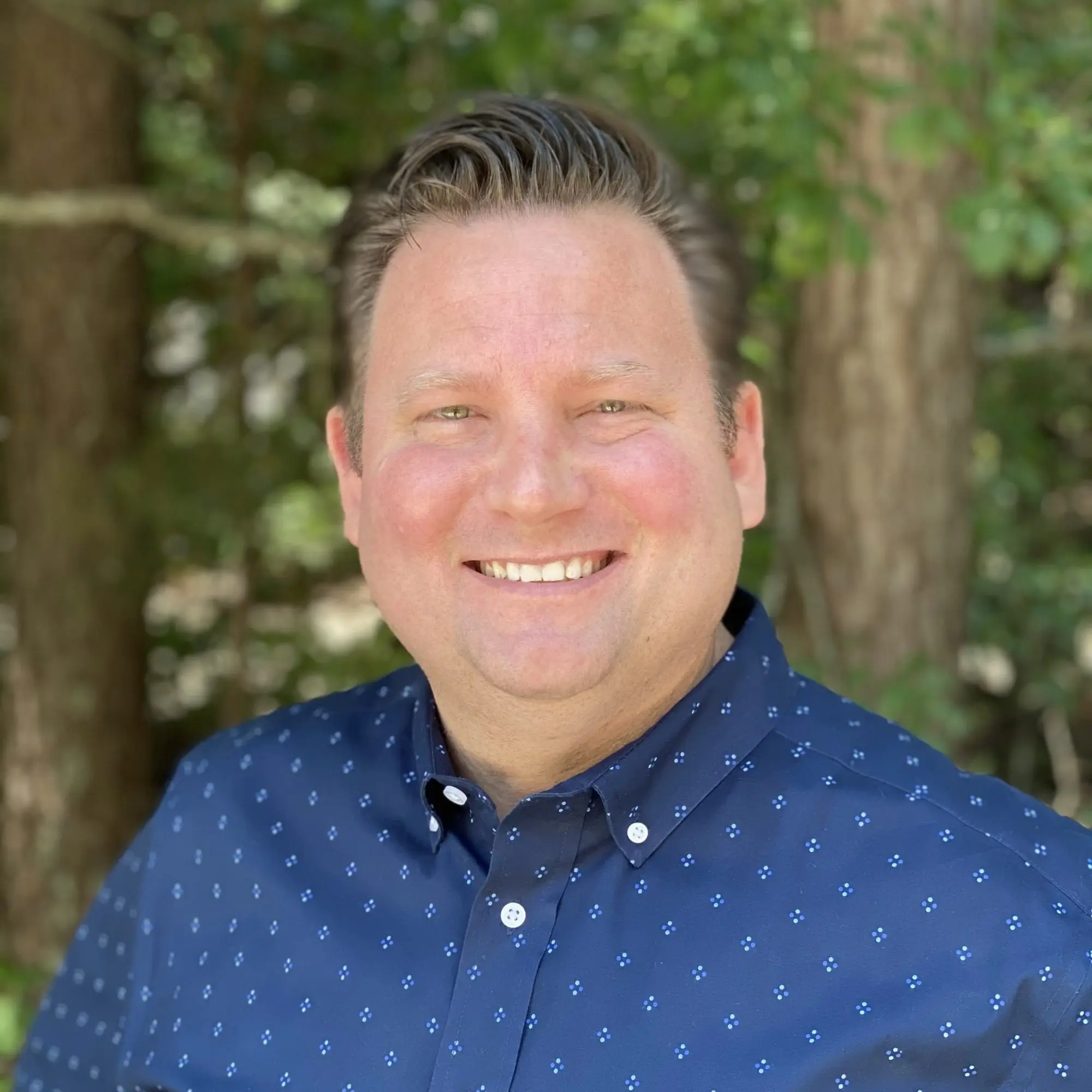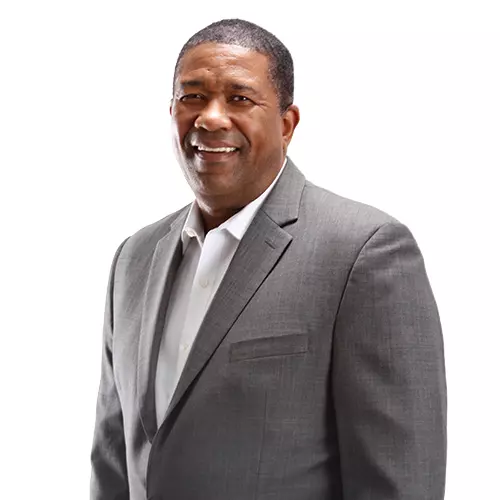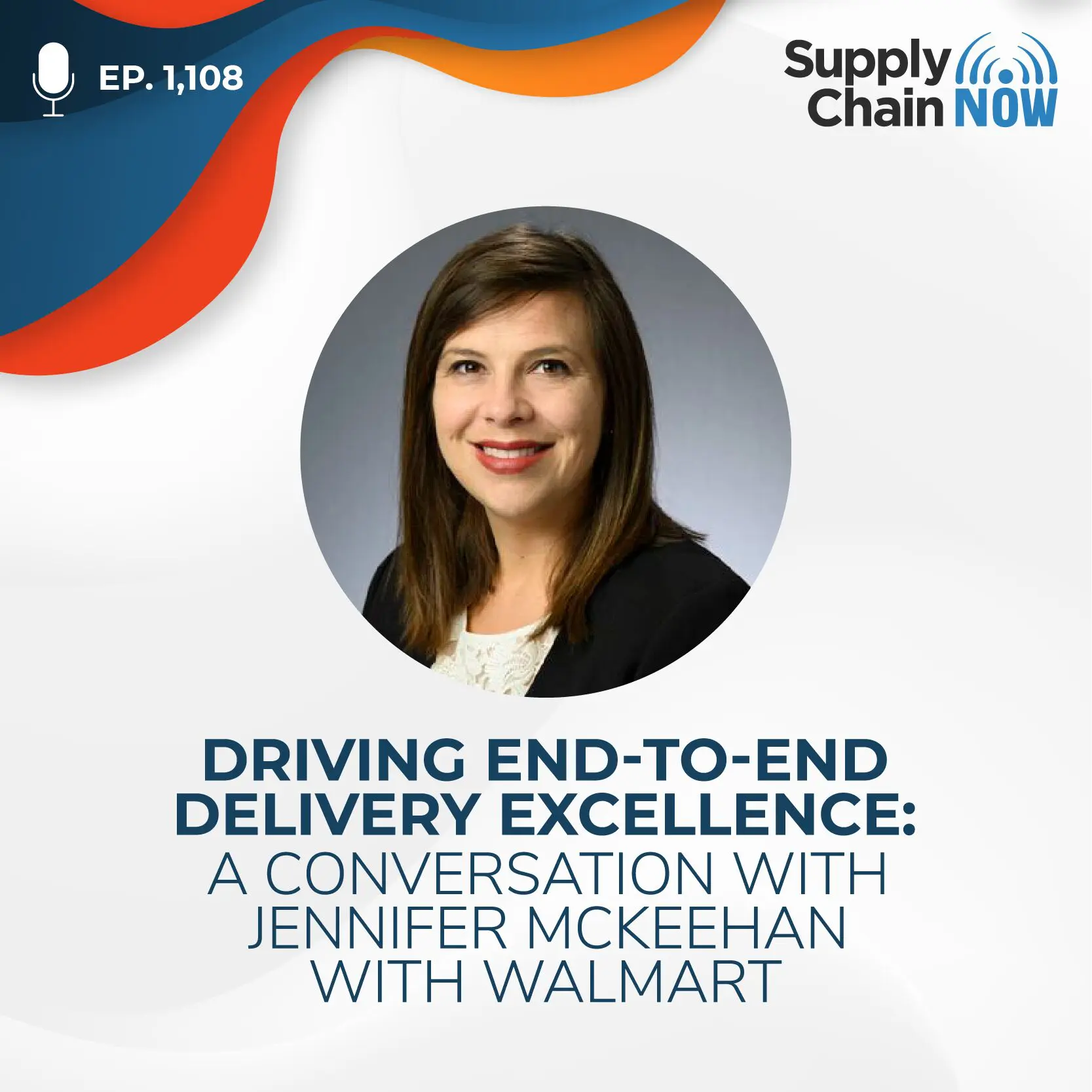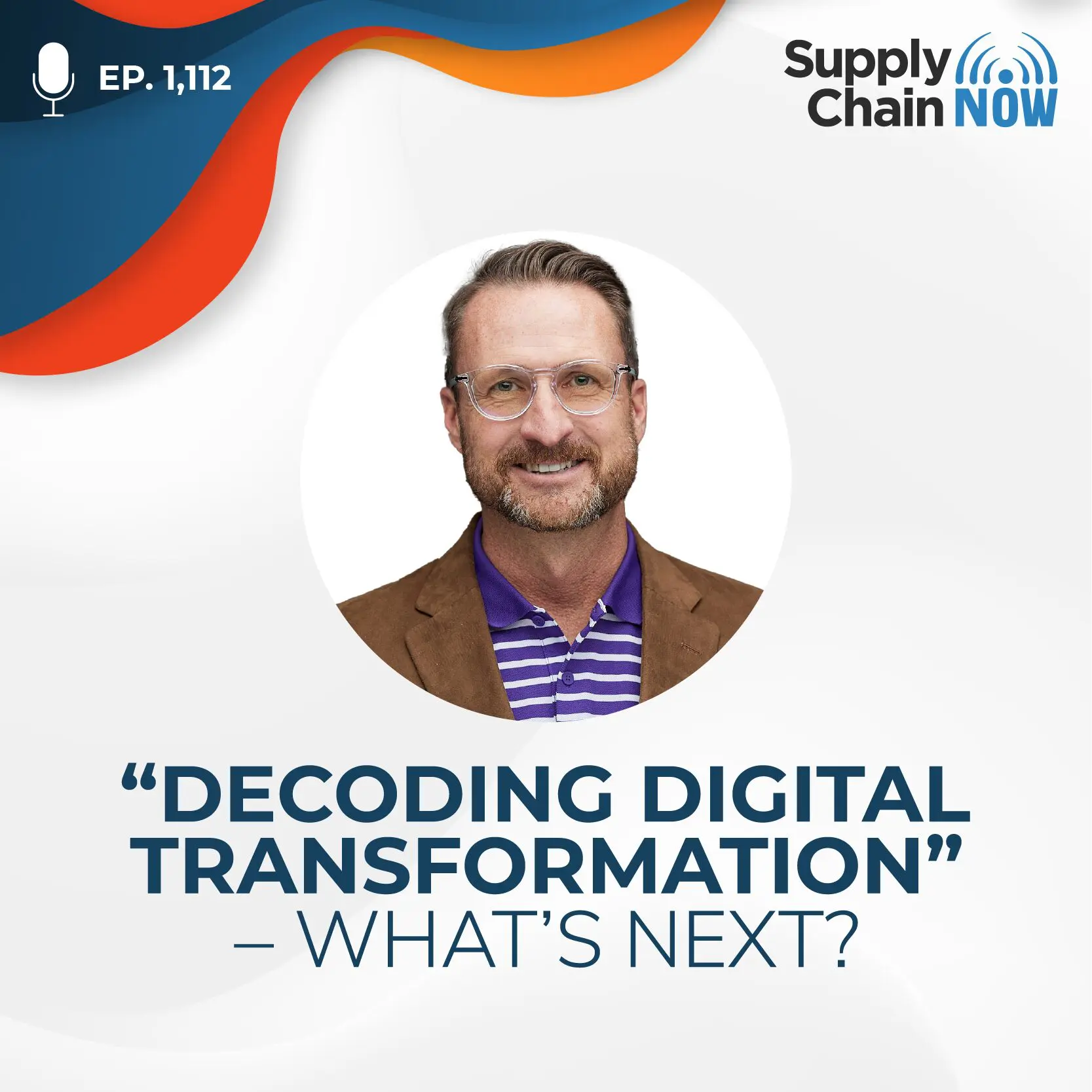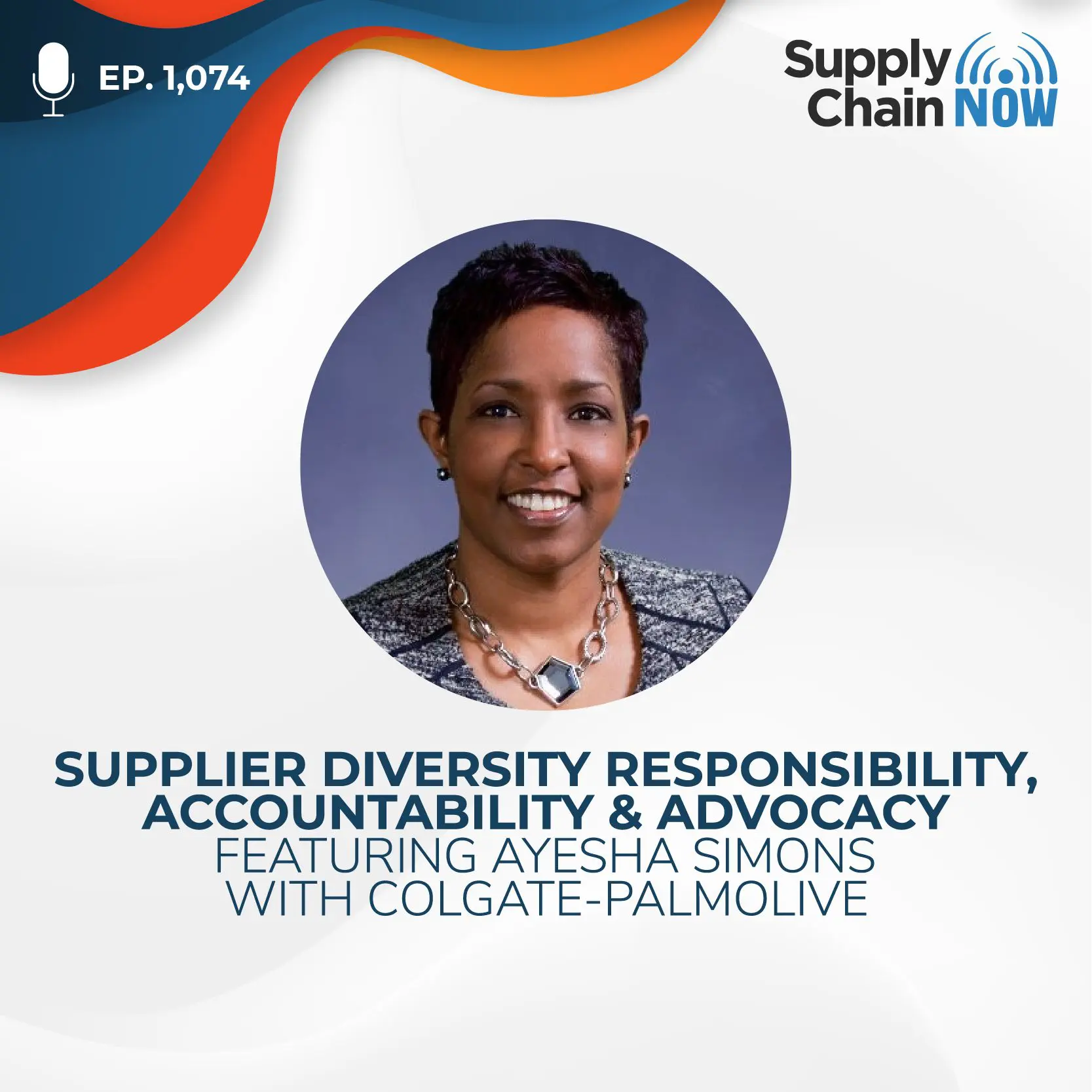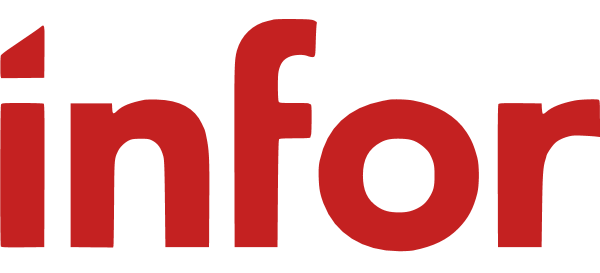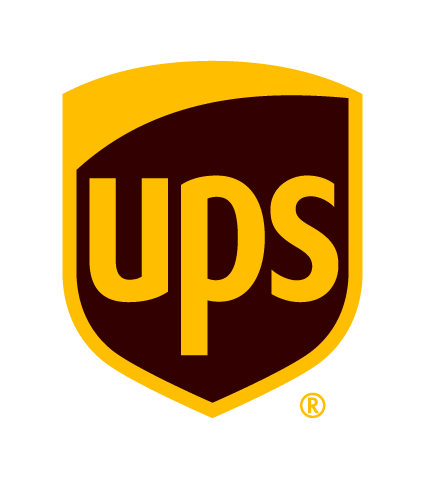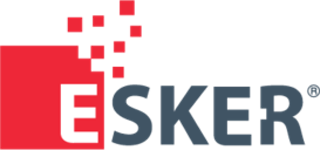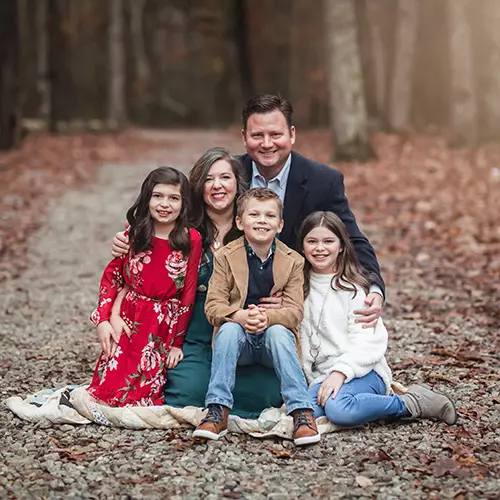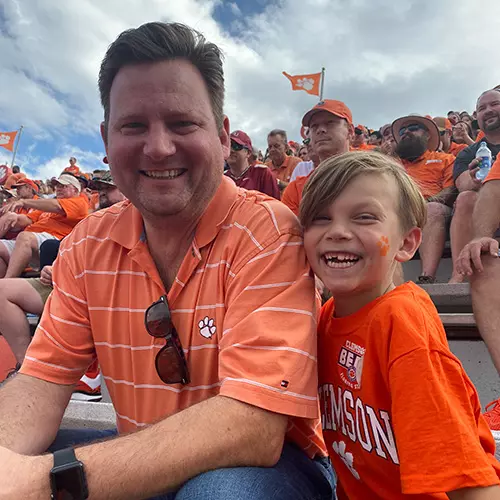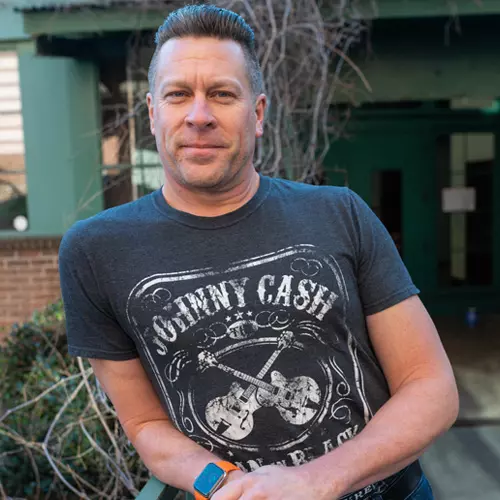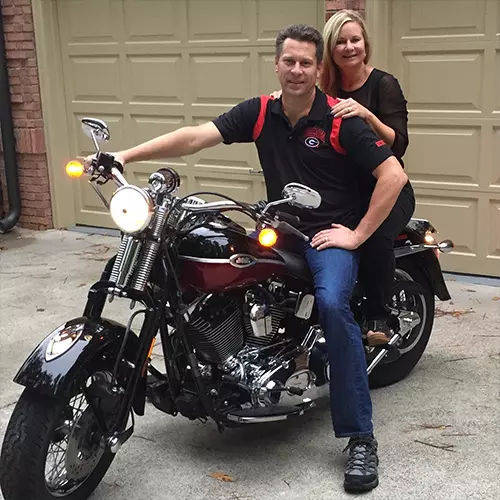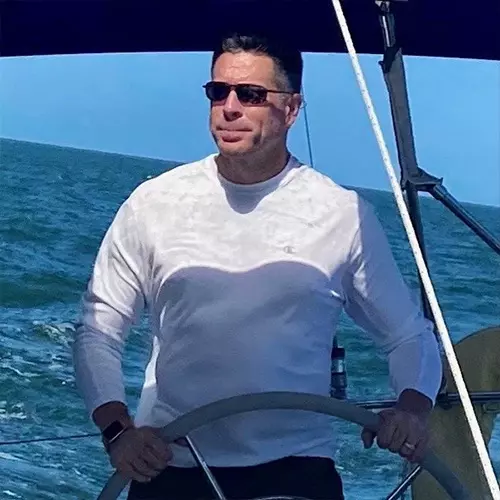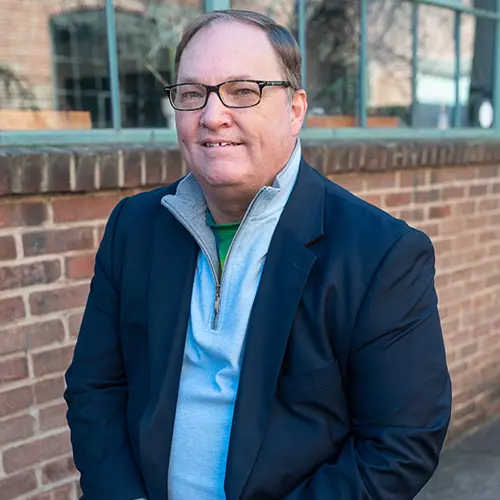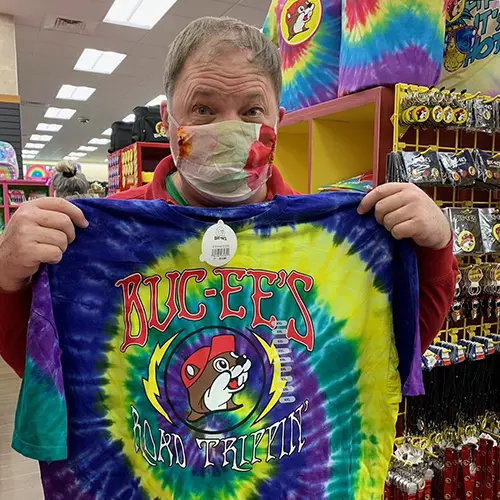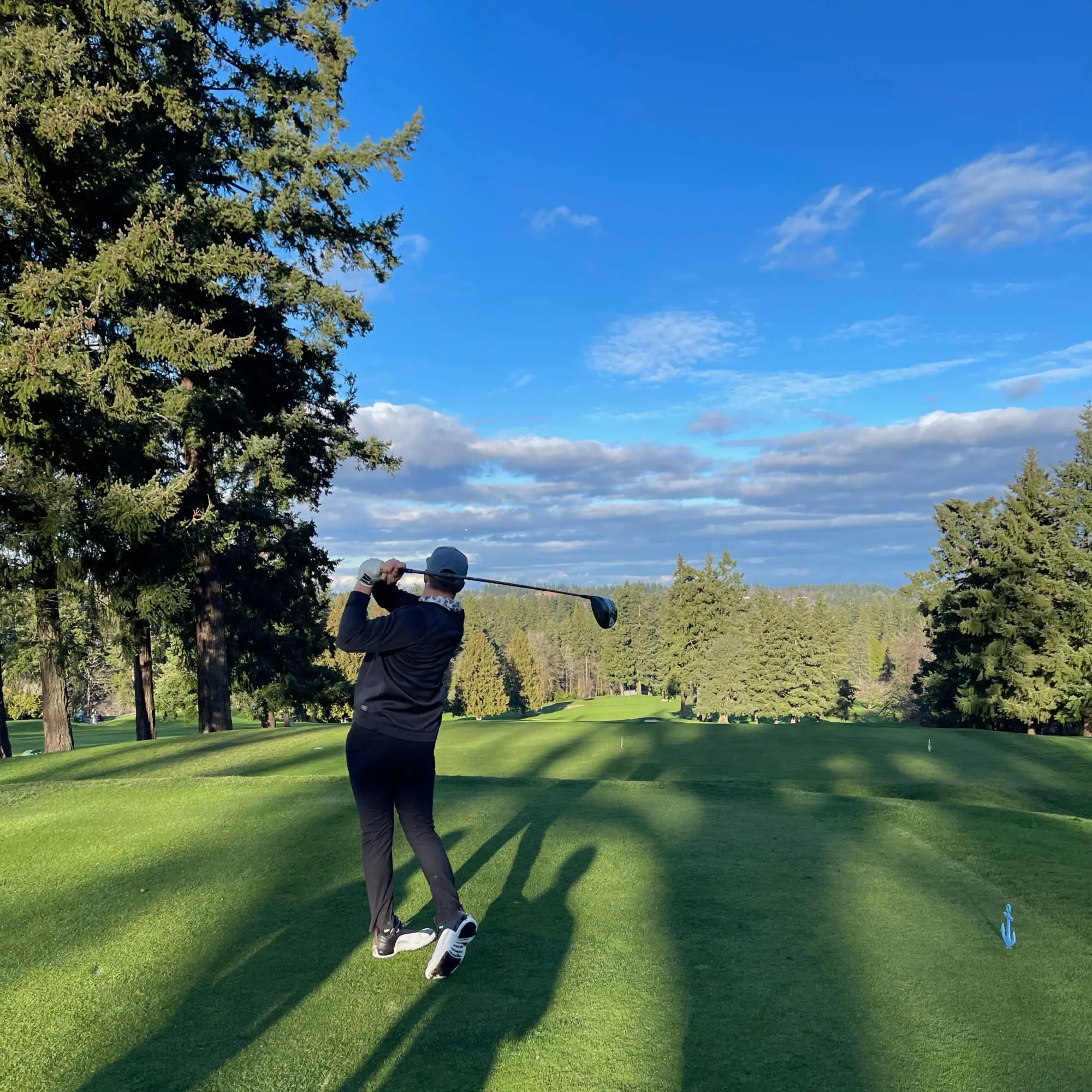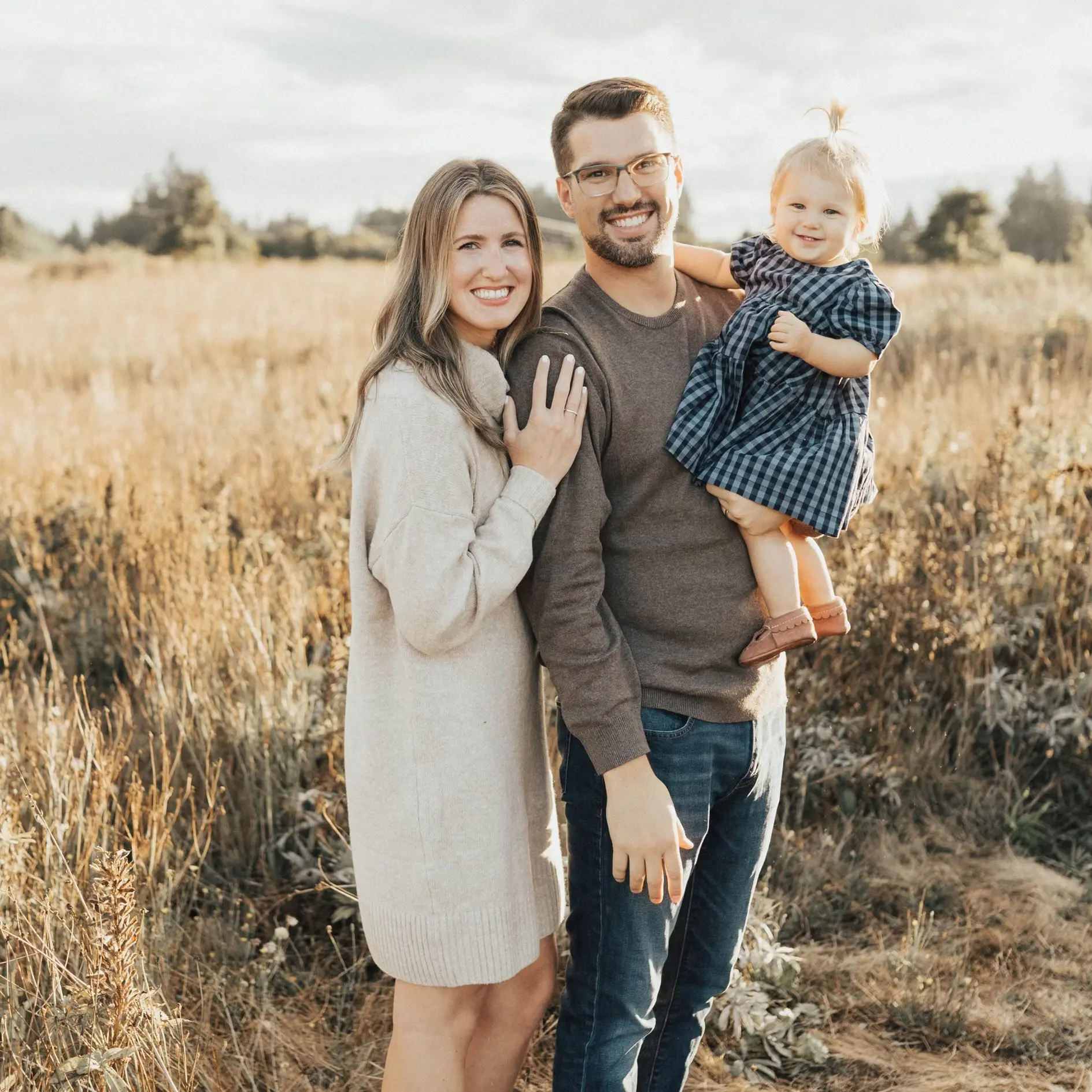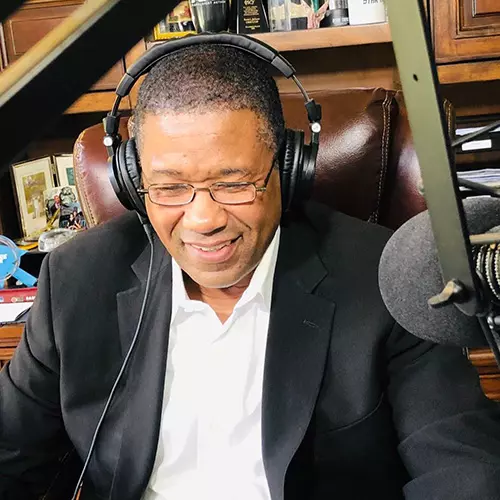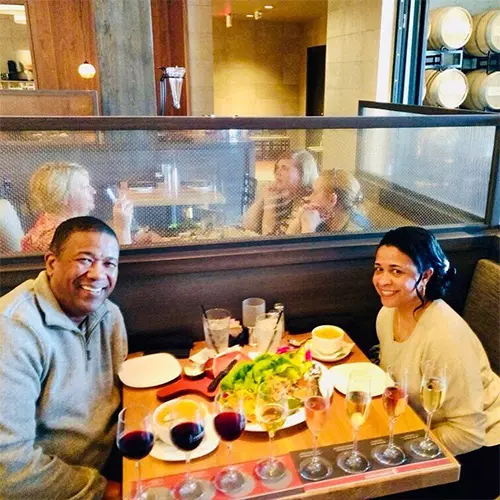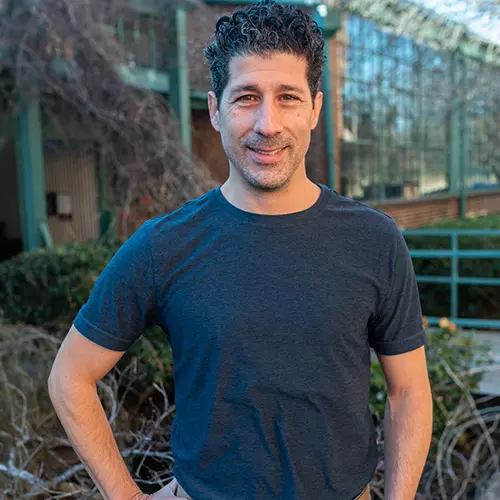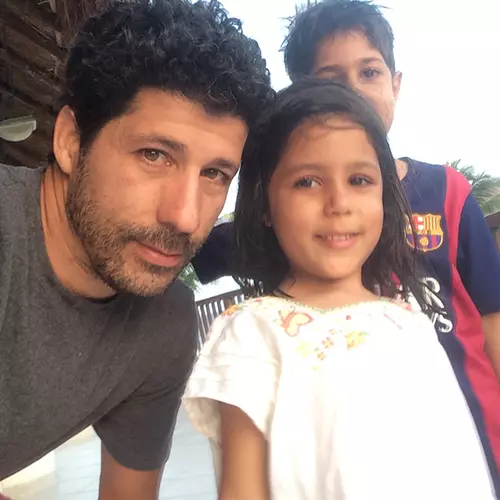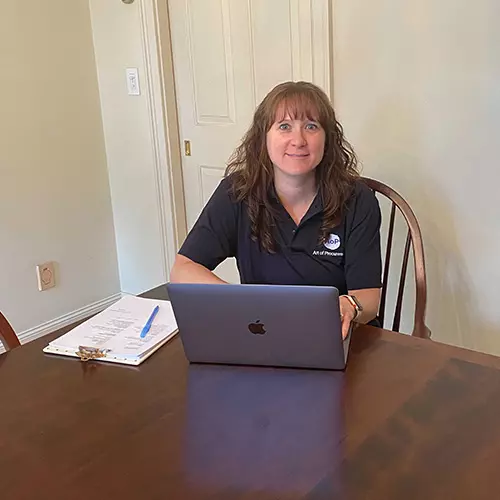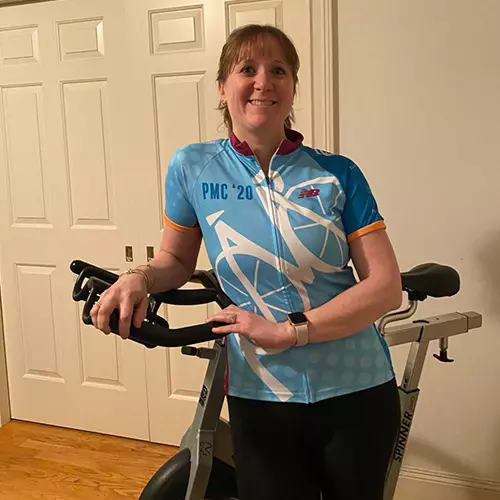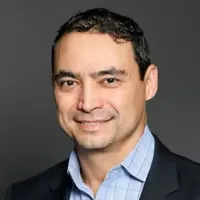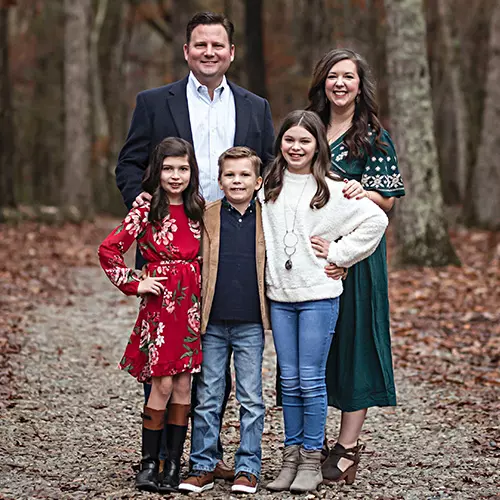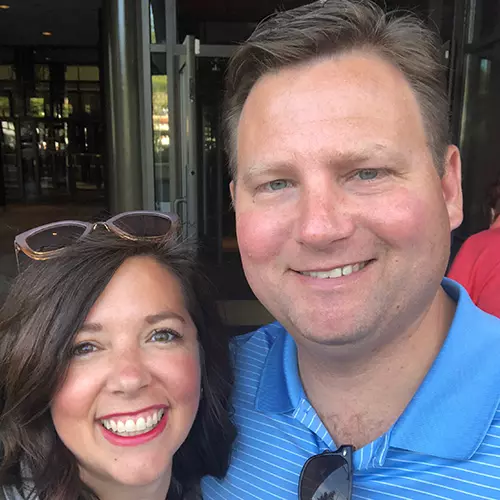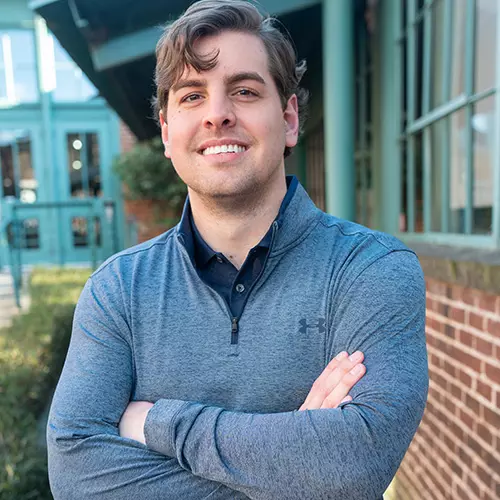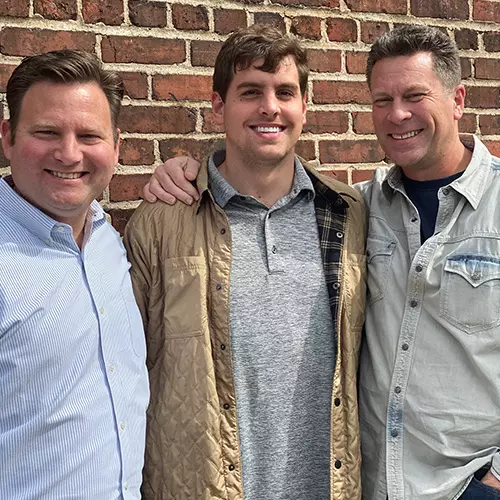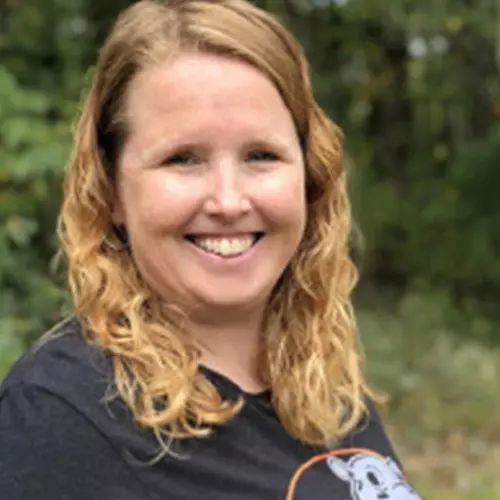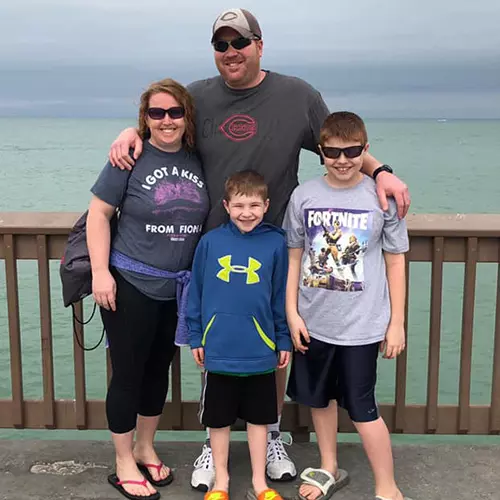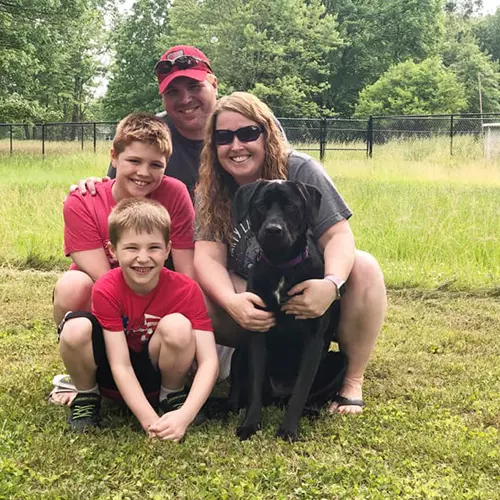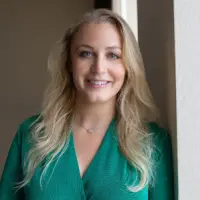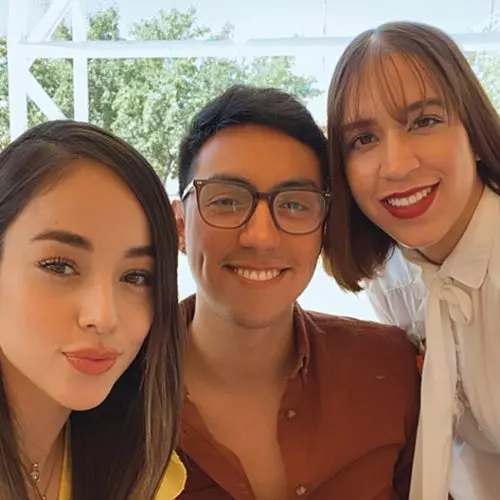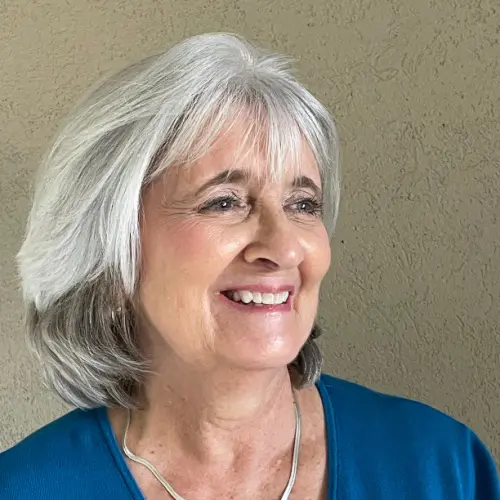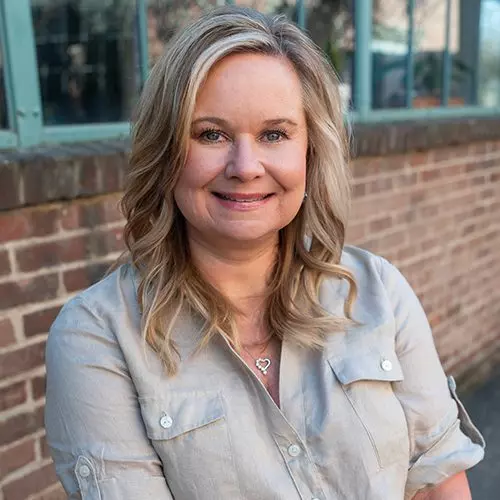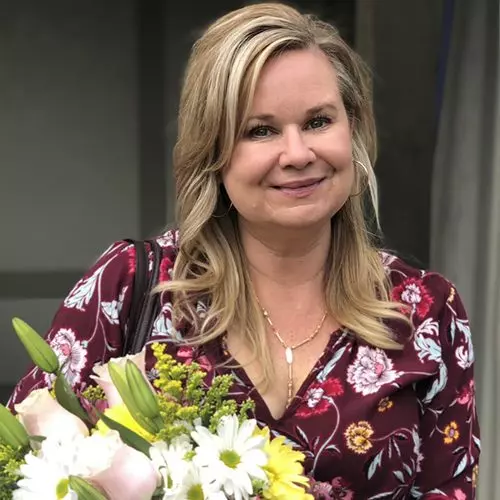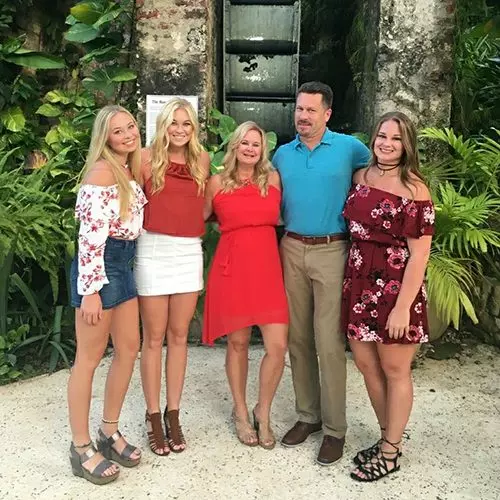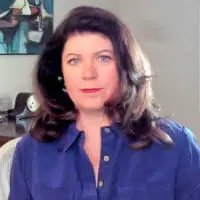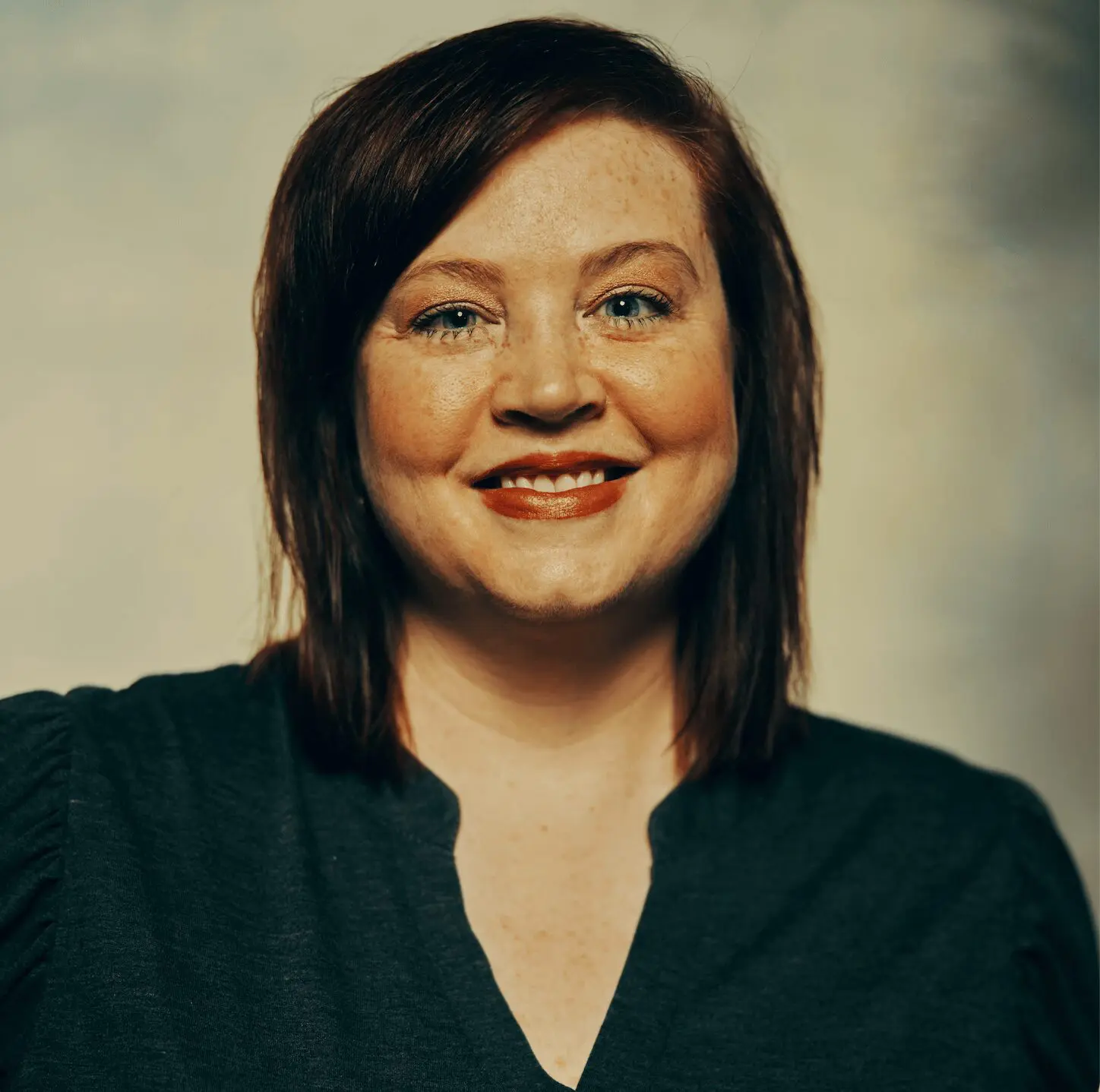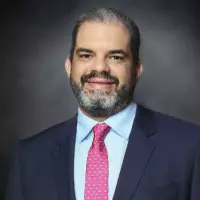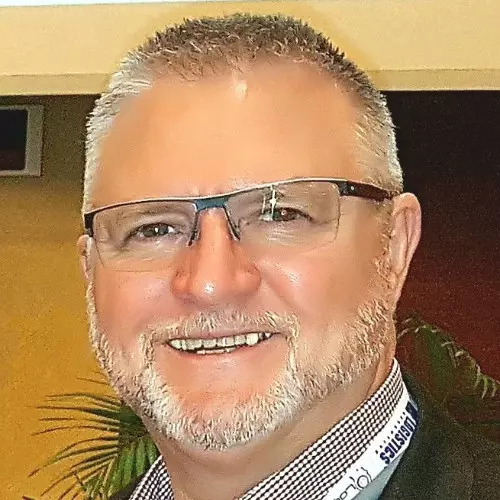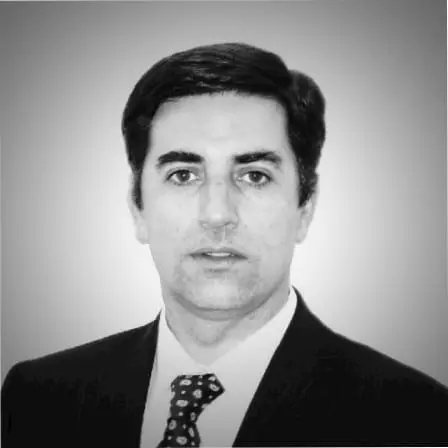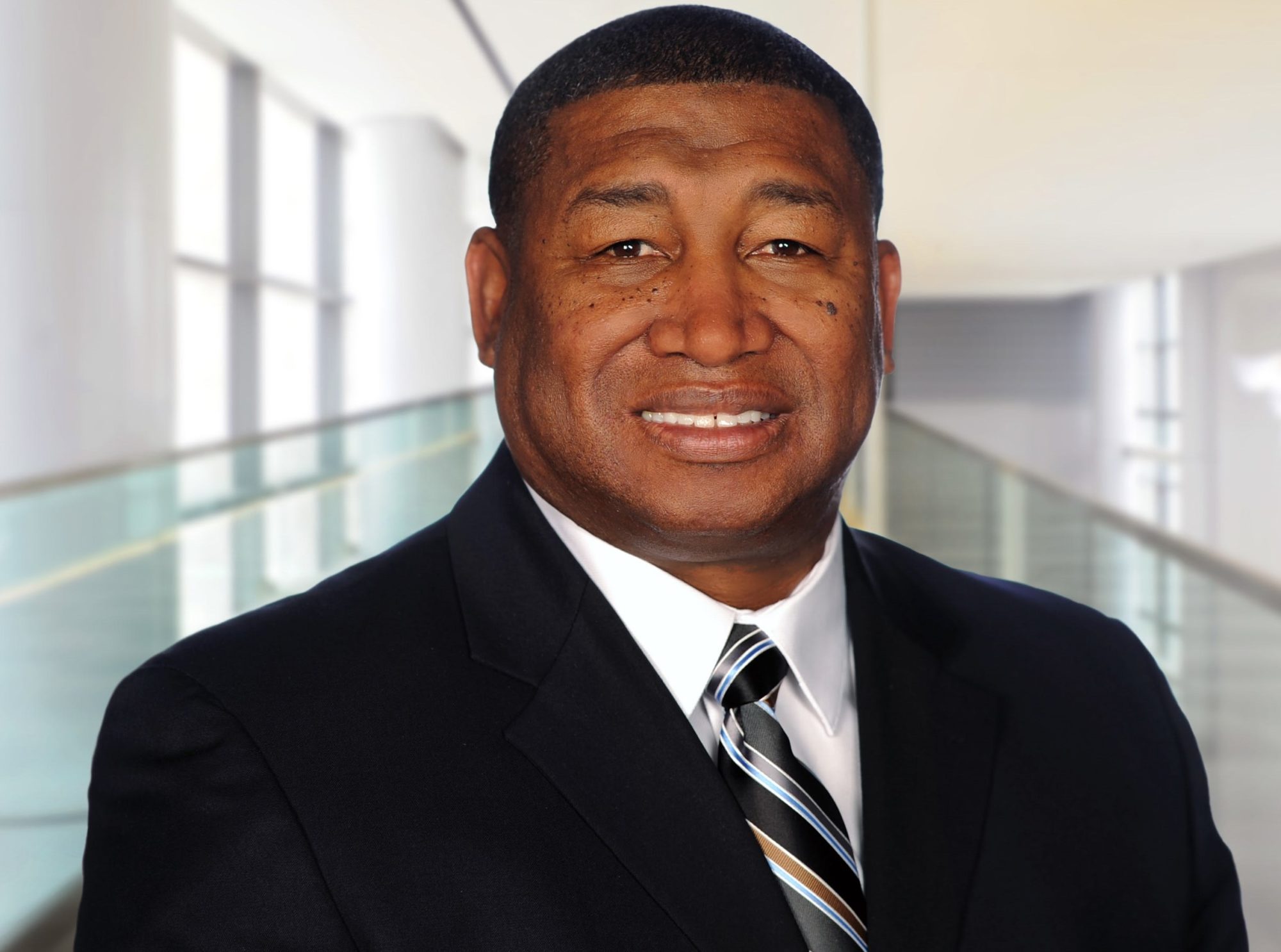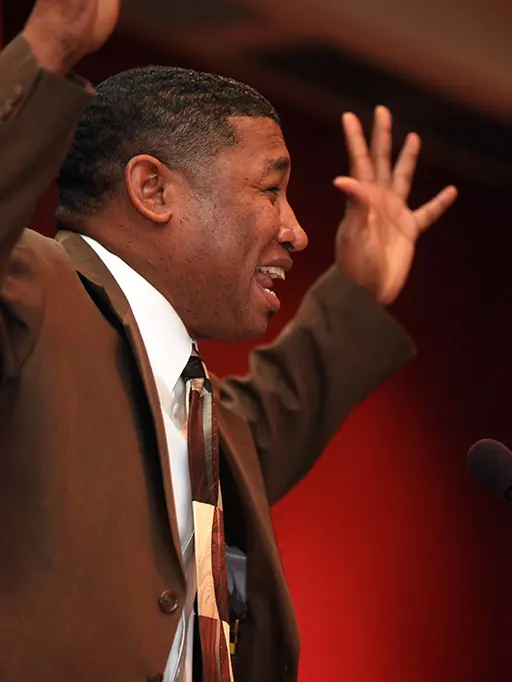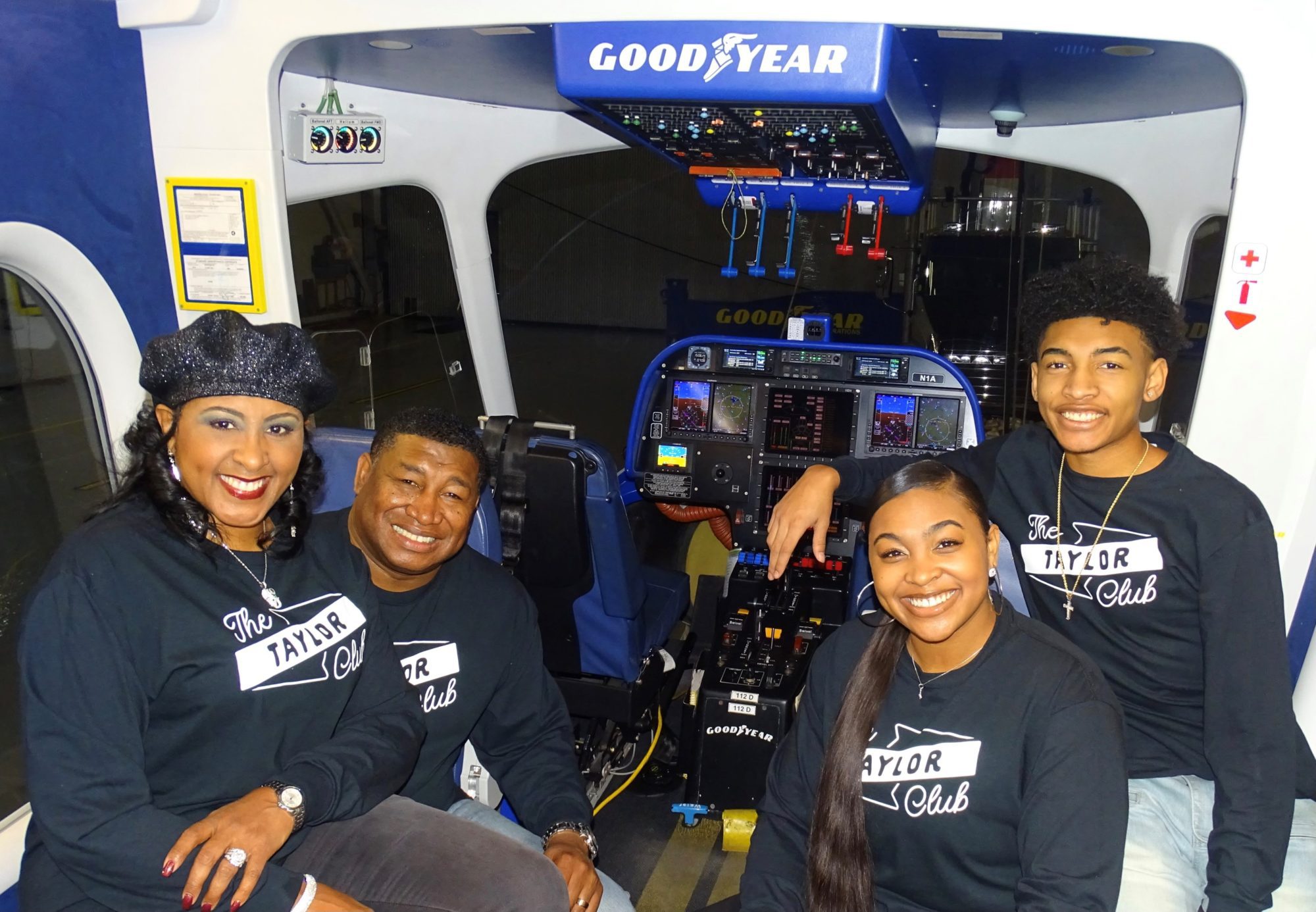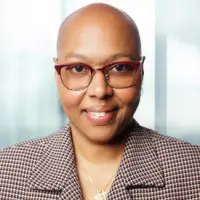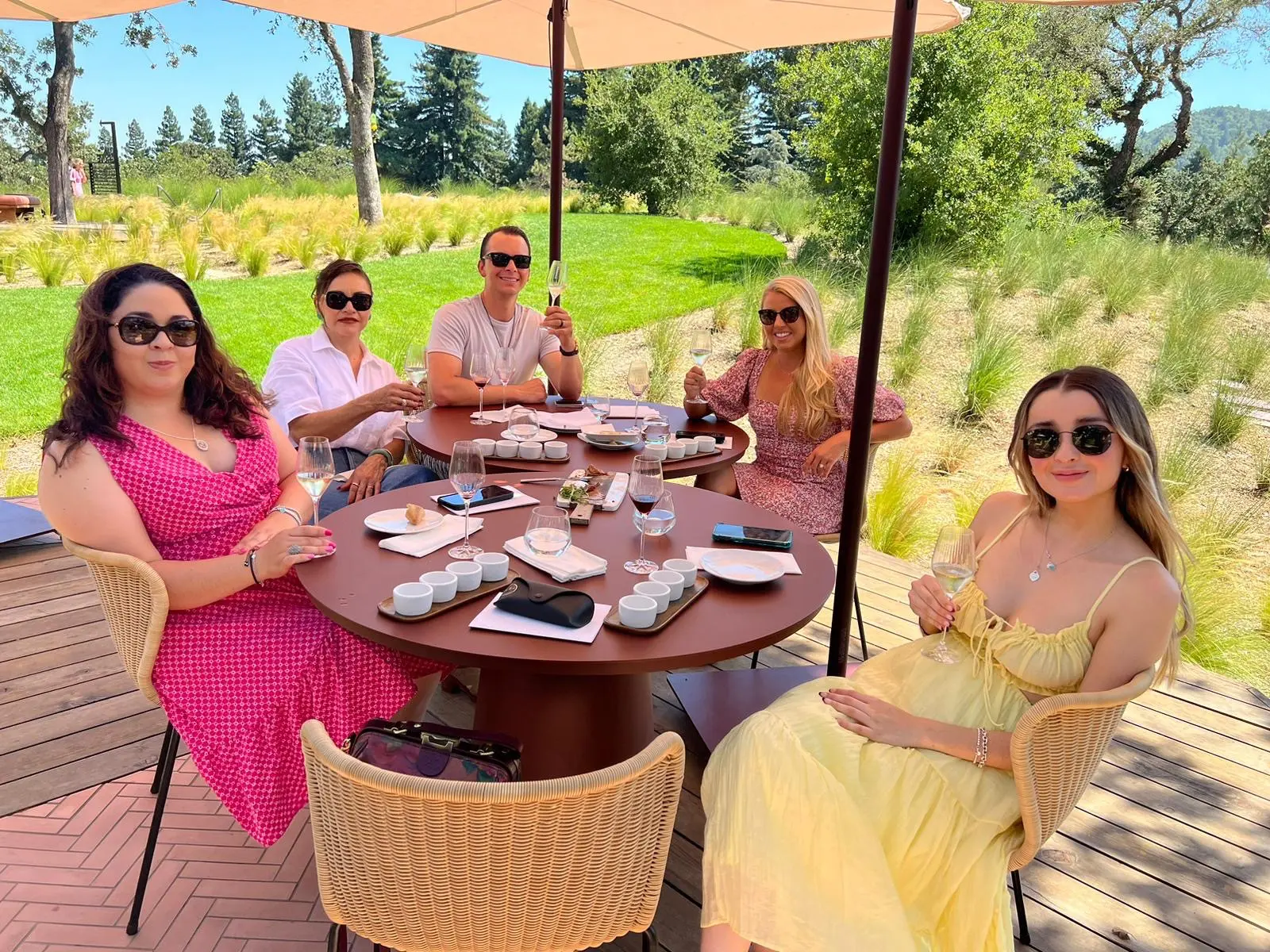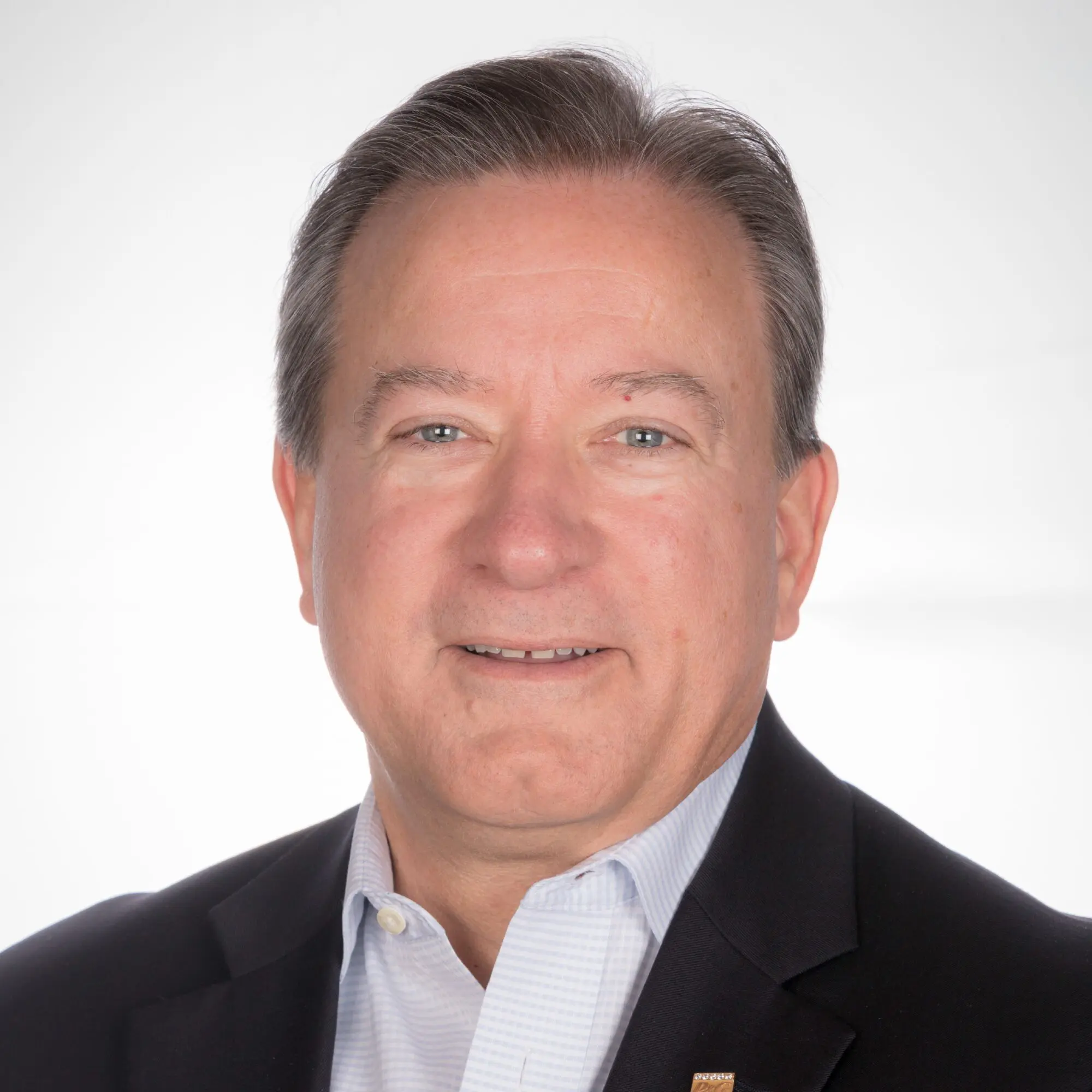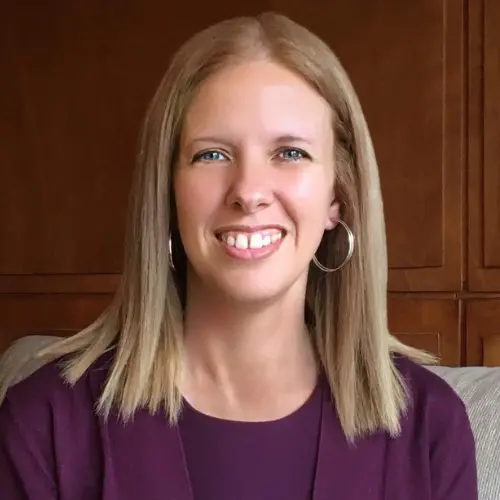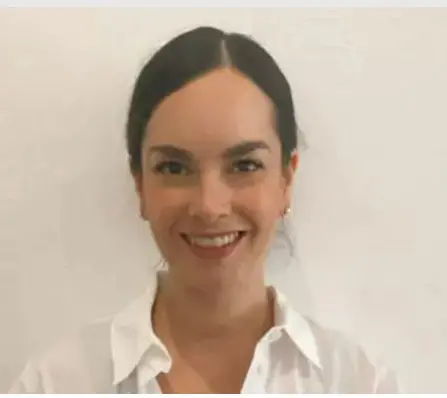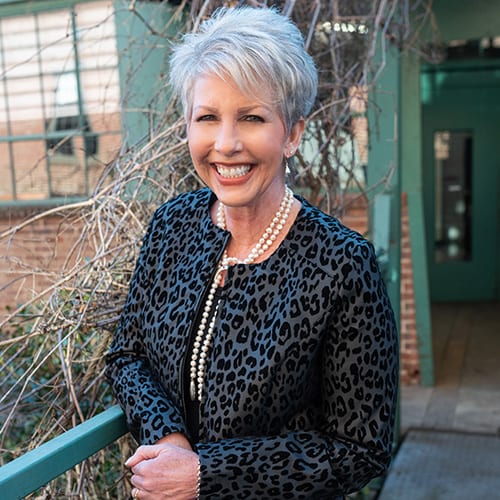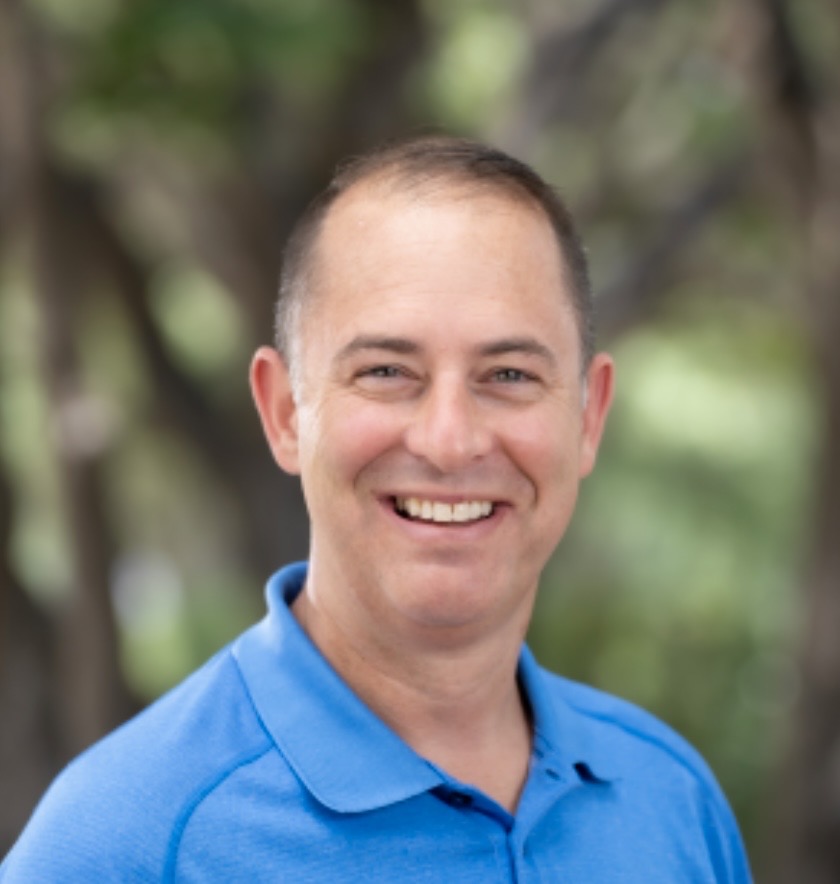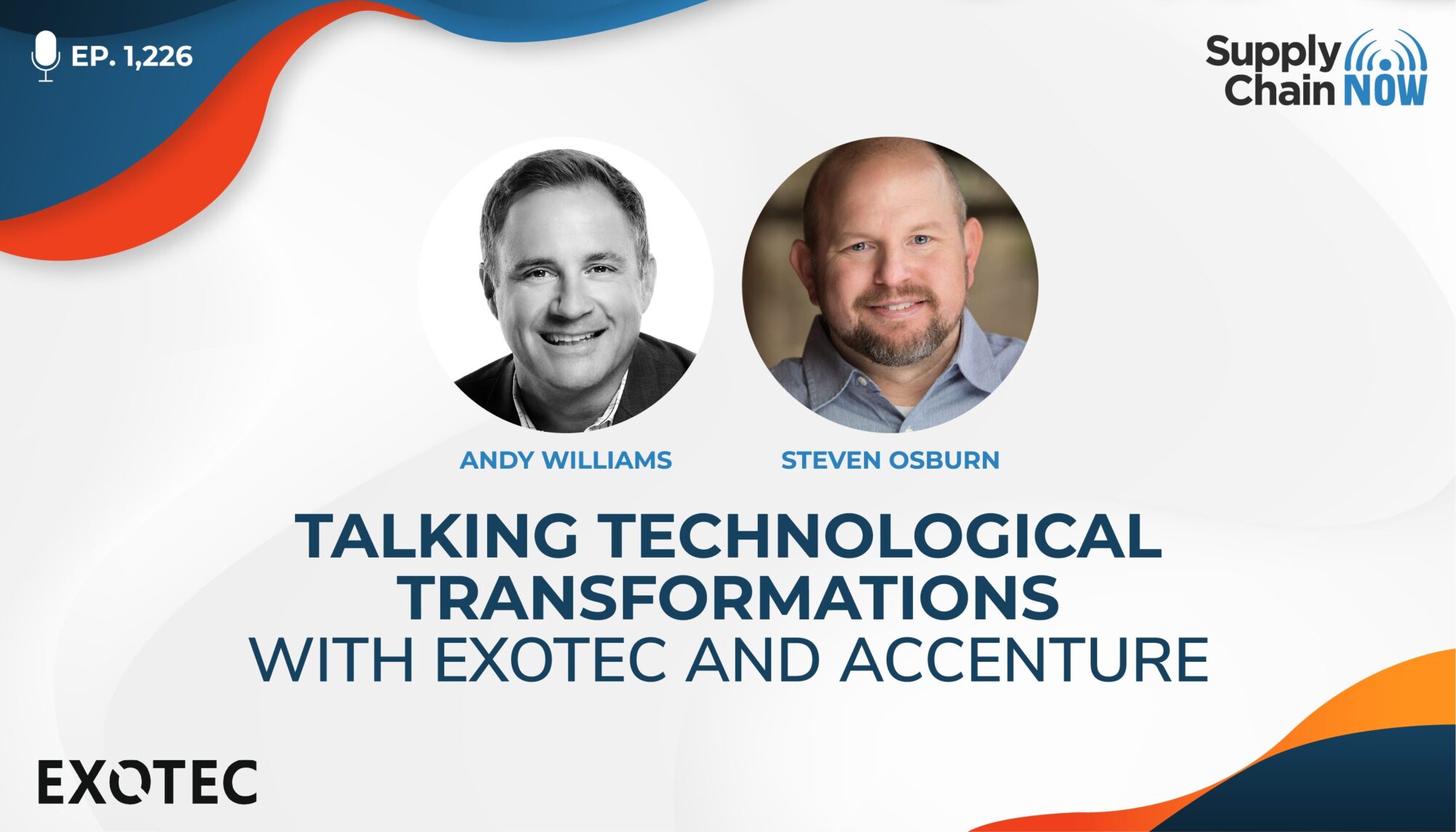
Being able to flex your individual nodes within the supply chain to support all areas of the business is a huge benefit to your responsiveness to the current needs of the business, and I think is absolutely playing a big part in a lot of these ROIs that we're looking at now with our clients.
-Steven Osburn
Episode Summary
Rewind the clock to the turn of the century and the technological landscape within warehousing and logistics was a lot less crowded. Today, companies are often faced with an overwhelming choice of solutions, making it more difficult than ever to determine the right tech stack to invest in.
It is against this backdrop that Andy Williams and Steve Osburn join the Supply Chain Now podcast, the pair holding vast experience in the field of logistics.
As Executive Vice President of Sales for warehouse robotics firm Exotec, Williams draws on two decades of knowledge gained from working in international supply chains and logistics technology. Osburn, meanwhile, brings 25 years of all-round supply chain experience to his role as Managing Director of Accenture’s system automation division. Both experts discuss how their current positions are all about providing answers to complex problems.
For Williams, this involves sitting down with organizations and seeing how Exotec can integrate various robotics and technological solutions, including those from third parties, into their warehousing setups. Osburn also enjoys the challenge of negotiating unique logistics scenarios, helping clients take ideas from concept through to implementation.
Discussions also center around the impact of the pandemic on retail and warehousing, how the need for flexibility rapidly emerged, and how a choreography between software and physical robotics is crucial to the functioning of today’s distribution networks. The ability to do more with less space, the duo agree, has been a dramatic change that has unfolded over the past 15 years.
Other key talking points include:
- The human-automation dynamic.
- Calculating ROI and a cost versus benefit analysis.
- Achieving organization-wide buy-in from the outset of supply chain transformation projects.
Episode Transcript
Intro/Outro (00:03):
Welcome to Supply Chain Now, the voice of global supply chain. Supply Chain Now focuses on the best in the business for our worldwide audience, the people, the technologies, the best practices, and today’s critical issues, the challenges and opportunities. Stay tuned to hear from those making global business happen right here on Supply Chain Now.
Scott Luton (00:32):
Hey. Hey. Good morning, good afternoon, good evening wherever you may be. Scott Luton and Kevin L. Jackson with you here on Supply Chain Now. Welcome to today’s show. Kevin, how are you doing today?
Kevin L. Jackson (00:41):
Hey, I’m doing great. We all made it to the other side. It’s 2024.
Scott Luton (00:47):
By the skin of our teeth perhaps, I don’t know. Now we were talking pre-show, Kevin, and I got to ask you about this. You were telling us pre-show something about whether techs count when you reach out and say Happy New Year or other things to people. What’s your vote there?
Kevin L. Jackson (01:00):
Well, actually nowadays you got to figure out – I have a tally, right? – I see someone, I check it that I said Happy New Year because you never know. But the question is, if you say Happy New Year in an email or a text, do you still have to say it when you either virtually talk to someone or you meet them in real life? Does the text or the email count?
Scott Luton (01:24):
And we’re going to have to defer to the governmental agency that regulates.
Kevin L. Jackson (01:27):
That regulates, yeah.
Scott Luton (01:29):
But, man, if you’re keeping track of all that, I bet you’re using AI in some way, shape, or form to keeping track of all those folks you’re out there talking with. But, Kevin, all of that, be that as it may, we have got an outstanding conversation here today. We’re going to be talking about a big trend impacting global business everywhere, of course that will be automation, but in particular we’re diving deep into the topic of modern innovative warehouse robotics to include how companies are leveraging warehouse robotics these days, what does the ROI look like, and one of my favorite parts here, we’re going to get some expert advice for those leaders out there that are looking to implement warehouse robotics in their own operations. So, all that and a lot more here today. Kevin, are you ready for the show?
Kevin L. Jackson (02:11):
Well, I’m really looking forward to understanding the difference between having warehouse automation with robotics and robotic process automation, which kind of confuse a lot of people. I think this is an important point that we have to talk about.
Scott Luton (02:26):
Kevin, excellent point. And if it confuses technology gurus like the one and only Kevin L. Jackson, I bet it confuses plenty of folks out there, so you’re in the right place here today. All right. So, we’ve got two outstanding feature guests here today, I want to welcome them. Our first guest, Kevin, spent over 25 years working within all areas of the supply chain with a big primary focus on the design and installation of complex automated solutions. I want to welcome in Steven Osburn, Managing Director at Accenture. Steven, how are you doing?
Steven Osburn (02:57):
I’m doing great, Scott.
Scott Luton (02:59):
Wonderful to see you. I’ve enjoyed talking with you already. And the other half of the dynamic duo that we’re talking to here today, joining Steven, our second guest, brings more than 20 years of experience working in international logistics and technology from startups to Fortune 500. He’s been making it happen. I want to welcome in Andy Williams, Executive Vice-President of Sales North America at Exotec. Andy, how are you doing?
Andy Williams (03:21):
Great, Scott. Good to be here today.
Scott Luton (03:23):
Great to talk with you as well. Kevin, I’m excited about what Andy and Steven brings to the table, aren’t you?
Kevin L. Jackson (03:29):
Well, actually, the way automation and robotics are changing every industry, especially in warehousing and distribution, I’ve been looking forward to this for a while.
Scott Luton (03:41):
Me too, my friend. Me too. So, before we get into all that good stuff, see, Kevin is already chomping at the bit to get into the technical and the technological complex part of the conversation. I’m still at let’s get to know Andy and Steven a little better. And I’ve done a little homework, Kevin. Our team’s done a little homework about some of the things that Steven and Andy are up to when they’re not making big things happen across global supply chain. And for you, Andy, we’ve heard one of your passions is fly fishing, especially in places like Wyoming in Alaska. Tell us more about that.
Andy Williams (04:12):
Yeah. Recently I convinced my wife to go to Alaska with me for a few days, two of which included floating on the Kenai River. And she had never done it, but she loved it. It’s just a great way to relax and really unplug and not think about warehouses or robotics for a little bit.
Scott Luton (04:32):
Man, Andy, that is awesome. Kevin, have you ever been to Alaska?
Kevin L. Jackson (04:35):
I’ve been to Alaska. I spent some time up in Adak when I was in Shemya out on the chain, not in, I guess, the mainland Alaska.
Scott Luton (04:45):
Okay. All right.
Kevin L. Jackson (04:46):
It’s really a unique environment, unique culture. I learned a lot while I was there.
Scott Luton (04:52):
Okay. Well, I’m behind the times. I hadn’t been to Alaska yet. We’re going this summer with one part of my family. So, Andy and Kevin, we’ll all exchange stories. How’s that sound?
Andy Williams (05:02):
Perfect.
Kevin L. Jackson (05:02):
I’ll say, my father did a cruise up in Alaska. He loved it, you know, looking at the icebergs and the blue ice. He said it was just amazing.
Scott Luton (05:11):
Well, you’re going to have to show me some of those pictures. I bet you got 137 PowerPoint slides maybe from that cruise. But that’s kind of what we’re going to be doing. And before I flip over to Steven, Andy, one more question, what is your biggest prized catch in all your fly fishing experiences?
Andy Williams (05:28):
That’s a great question. I would say that it was actually on this past Alaska trip, I caught about a 12 or 14 pound rainbow trout.
Scott Luton (05:39):
Man, okay. You got to be taking your vitamins to reel that thing in.
Kevin L. Jackson (05:42):
Yeah. I hope it wasn’t a catch and release.
Andy Williams (05:46):
It was. It was. It is.
Kevin L. Jackson (05:48):
Oh, God. I love trout.
Scott Luton (05:49):
But you took a picture, right? You took a picture. So it happened. You got proof.
Andy Williams (05:53):
We have evidence, correct. Yes.
Scott Luton (05:55):
All right. Steven, we’ve got to bring you into the conversation because y’all got something in common, because when you’re not out making things happen across global business, anything with a boat gets your attention. That’s where you spend some time especially, Steven, surfing with the kids. Tell us more about that.
Steven Osburn (06:10):
So, I grew up on the water and once we moved to Atlanta, I felt a little landlocked, so quickly convinced my wife we needed to get some lake time. Since then, we’ve had a boat. I’ve raised my kids surfing. We go out to Lake Oconee all the time. And it’s become my happy place and I look like a good dad because it’s also my kids’ happy place. So, it’s been great.
Scott Luton (06:32):
Hey, a twofer. I like it, Steven. And, Kevin, you shared pre-show one of your favorite things to do on a boat, a catamaran, I think as you put it, is taking the snooze. Is that right?
Kevin L. Jackson (06:43):
Yes. Just laying on a catamaran in the middle of the lake and just relaxing and letting the world go away, it just drifts away.
Scott Luton (06:53):
Oh, I love it. I love it, man. I love it. All right. As much as I would love to dive into more stories, really between all three of y’all because there’s a lot more there, we got to get to work. We got a lot to get into, especially in the warehouse robotics space. So, I want to start with giving some context to our global audience. So, Andy, with that in mind, tell us a more about what Exotec does.
Andy Williams (07:13):
Exotec was founded around seven years ago, and we’re a warehouse robotics company. We’re active globally. We design and manufacture some of the key components of our solutions that we offer. And that’s really what we are at the end of the day is a solutions provider. So, we also integrate other robotics third-party equipment into our solutions. And in some cases, there may be partner companies that integrate our technology and that’s kind of how we go to market.
Scott Luton (07:43):
And mapping all that stuff out and getting it integrated and all playing nice in the sandbox, is that one of your favorite components of what you do, Andy?
Andy Williams (07:51):
It absolutely is. I still really enjoy just sitting down with customers and trying to solve problems and utilizing this great creative team we have here to solve some really impactful and meaningful challenges that our customers have.
Scott Luton (08:07):
Well said. Meaningful and impactful, Kevin, my brain goes to consequential, which is a term we’ve used dozens of times on some of our shows together, Kevin, right?
Kevin L. Jackson (08:16):
Yeah, absolutely. What I find though is when it comes to technology, a lot of people just want to spend money on the brightest object out there. So, when they actually do it, it doesn’t change their operations. It’s not consequential, as you said. So, I like that focus on being meaningful and impactful.
Scott Luton (08:39):
That’s right. And driving outcomes. And speaking of, Steven, you’ve spent your career driving big outcomes. A lot of folks probably listening, “Oh, I know Accenture.” But, Steven, tell us about what you do in your role there.
Steven Osburn (08:50):
So, I head up our distribution automation group. Within that group, we do everything from design to full implementation of automated solutions. When our clients have a challenge, if there are solutions in the market that will solve that challenge, we can help them find the right solution and put that solution in. If solutions don’t exist, we can help them create something customized to kind of fill the gaps where it may not be an industry-wide problem, it may be a client-specific problem. And our goal is to really help them take it from concept all the way through to full implementation. So, we work with them throughout both on the hardware side and the software side.
Scott Luton (09:31):
Kevin, if I had a headache, what Steven just shared there makes it just dissipate, because I need help with selection, I need help with implementation, and maybe even some aftercare. Kevin, your thoughts?
Kevin L. Jackson (09:39):
Well, first of all, the distribution space has gone through just tremendous changes over the last few years as the whole process of buying and distributing in a global basis has gone through fix and changes. And one thing I wanted to sort of pull the string on there with you, Steven, though, is specifically around the warehouse space that actually has changed as we’ve gone into e-commerce and the need to make sure that you could have electronic connectivity with your audience and be able to track across the entire supply chain.
Scott Luton (10:19):
Where’s my stuff, Kevin, right?
Kevin L. Jackson (10:21):
Yeah. Where’s my stuff? So, what are some of the observations or trends that you have found interesting in the last year or so as we’ve come out of the pandemic?
Steven Osburn (10:31):
I’ll go a little pre-pandemic first. I grew up in retail, so retail went through this transformation a while ago, the first DCI design was back in 2002 and it was an e-commerce DC. Then, retail kind of went through that omnichannel shift. All of that focused on getting the inventory. Over time, it focused on getting the inventory closer to the customer and handling smaller orders instead of full cases going to DCs and stores and you were doing the individual packages going to customers. I think the rest of the industries have kind of caught up with that. So, now at Accenture, it’s less retail focused and more kind of across all our clients. And we’re seeing the same transformation that retail started 15, 20 years ago. We’re seeing all industries having to deal with that same problem. Because at the end of the day, every executive is typically also a customer of some of these companies that have really gotten it right, the information push, all of that. So, people have expected they want to know where their stuff is.
Kevin L. Jackson (11:39):
So, the whole idea of pick and pack has really changed. So, Andy, what have you seen?
Andy Williams (11:46):
Yeah, I think coming out of the pandemic – I mean, during the pandemic, there was obviously an extreme focus on e-commerce, maybe it even got a little overheated. So, e-commerce is still, I think, a big driver for things. We still have this incredible labor shortage that’s out there as a tailwind for the whole market, and that continues to drive these projects forward. And I think the other thing, I kind of would agree with Steve there, new industries, I mean you think about history and retail went through their wave, but we had maybe this pure play e-commerce wave that went through. And now you see automotive with this kind of aging supply chain legacy and beverage companies and other industries really modernizing their supply chains now as well.
Scott Luton (12:32):
You know, sort of picking up on that, I was reading here, Kevin, recently about the labor shortage, of course, which is impacting so many businesses, whether you’re in warehouse or manufacturing or many other aspects. And one of the ways – of course, we’ve talked about it, Kevin, I don’t know hundreds of times – is leveraging outcomes driven automation to help the talent gap that we’re all experiencing. Big companies like Kimberly-Clark, I think they had 30 warehouse robots prior to the pandemic. Now, they have over 300 across their North American footprint that’s helping that big company get around labor challenges. Kevin, it’s a refrain. It’s been around for years now, huh?
Kevin L. Jackson (13:11):
I think it’s an important aspect, but it’s also a lot of people are afraid of this transition because all they hear is that you’re getting rid of my job and a robot is taking over. One of the things I’ve really noticed though is that people are being transitioned to jobs that people do much better that robots can’t do. And I think that’s really the important concept that has to be hammered in across every industry.
Scott Luton (13:43):
Well said, Kevin, and that’s such a great segue. I bet Andy and Steven both have plenty to talk about when it comes to the collaboration opportunities that will empower the human element, but also allow organizations to take full advantage of the automation opportunities out there. So, let’s talk about it, the rise of automation, the tidal wave of automation. This isn’t anything new. It’s been around for years and years. We’re seeing some great advancements and a lot more innovation. And so, when it comes to automation in warehouses, let’s talk a little more about that.
Scott Luton (14:14):
So, Andy, you touched on a couple of topics that are really fueling warehouse leaders to embrace automation more and more, of course labor being one of them, what else are you seeing out there that’s really driving this tidal wave of practical automation is what I’ll call it.
Andy Williams (14:27):
Great question. If you look at the evolution of warehouse technology, I refer to it as fixed automation and then kind of robotics automation inside the warehouse. And there’s a significant difference in what that means and how flexible the system can be. And what it started to reveal over the past five years is that entirely new capabilities can be unlocked in the supply chain. And the savviest leaders out there are taking advantage of it and saying I no longer need a retail wholesale and e-commerce warehouse. I can potentially do those together in one facility. Or, I can achieve some new functionalities that I didn’t know were possible, like arranging things inside a box differently or onto a pallet differently providing transportation savings in the supply chain. And I might be able to do all of that in just a quarter of the footprint that I could even ten years ago.
Andy Williams (15:30):
And so, having all of that power and then being able to move it closer to the customer or closer to a manufacturing site where I can have a reduced level of inventory in the building can have a really massive impact on the SLAs that you have internally, your customers, and of course your costs. So, I think the equation for ROI evaluation has changed a little bit, and it includes some thinking that’s around differentiating the business and gaining customers, increasing market share. It’s a way to outmaneuver your competition.
Scott Luton (16:04):
All right. Andy, I feel like I just earned a mini-MBA with your last response. I was trying to fast and furiously keep up. And, Kevin, I’m going to get Steven to weigh in and then I’m going to get your thoughts too. But, Steven, beyond the labor shortage, we know that’s one of the big reasons that is driving automation, but some of the things Andy was talking about, the agility gains, of course heightened service abilities, profitability, gaining market share, all of that’s fueling leaders to embrace more automation in their warehouses. Steven, what would you add to that?
Steven Osburn (16:34):
Yeah. I think Andy touched on it. I’ll go a little deeper on just that flexibility concept. I think what COVID taught us was if I have a purpose-built DC that is handling full cases, getting them to the store, and all of a sudden my volume shifts to e-commerce, that DC is not really that helpful to me. Whereas, if I can build out my network so I have flexible nodes within the supply chain, that when I need that full case volume, I can support it, but when I need the piece pick volume, I can support that as well. Being able o kind of flex your individual nodes to support all areas of the business is a huge benefit to your responsiveness to the current needs of the business, and I think is absolutely playing a big part in a lot of these ROIs that we’re looking at now with our clients.
Scott Luton (17:28):
Steven, excellent point. And if we’ve learned anything coming out of the pandemic, man, we’ve always valued flexibility, but goodness gracious, haven’t we doubled down on the importance of flexibility in our organization since the pandemic? And then, secondly, I know I mentioned earlier big companies taking advantage of automation, I bet one of the things we’re going to talk about here in a little bit is how companies of all sizes are really looking at automation opportunities in new ways. Kevin, you heard Andy and Steven talk about what’s fueling automation in our warehouses. What else would you add there, Kevin?
Kevin L. Jackson (18:00):
Well, first of all, when I hear them, I think about physical robotics, the little things running around the DC floor moving pallets here or picking and packing. But just to play a little buzzword bingo here, what about RPA or Robotic Process Automation? Because that’s more along the lines of software so it’s not physical robotics, it’s like software robotics. How do these things work together or do they compliment or do they compete?
Scott Luton (18:37):
If I can, Kevin, this is an excellent question. I’m just going to roll that into what I was going to ask Andy and Steven next. And, Andy, you kind of prefaced it a few minutes ago about legacy automation versus robotics versus some of the things that Kevin’s talking about. Tell us more about comparing and contrasting between that and RPA and any shifts that you’re seeing out there in the industry, Andy.
Andy Williams (18:57):
Yeah. Rewind the clock, and if I wanted to do a purpose built warehouse and to automate it and make it as efficient as possible, then I would have to use some really heavy machinery and a lot of steel to do it. And it would be a very highly engineered, very specific design to solve that problem. And as we kind of alluded to here, all we know when we do those designs, they’re based upon a whole list of assumptions and prognostications five, ten years in the future and we know that they’re always wrong. And so, that really has led to the rise of these flexible robotic solutions. And I think that’s probably the biggest trend. I mean, if you look at the data in terms of all of the projects that are being done more and more, it’s only accelerating any type of automation project that’s being done featuring more and more robotics.
Andy Williams (19:47):
So, generally, Kevin, to answer your question, we are talking about physical robots at the end of the day. Now, that’s not to understate the importance of the software, because the software is the orchestration for all of the movements. It interfaces to the website, the order management system, the ERP, all of that flows down and eventually manifests itself in these physical movements. So, the software stack above the actual robotics is incredibly important. And many of those software modules do feature some sort of robotics process automation. But, generally, I kind of think of them as two different things. I don’t know about you, Steve.
Scott Luton (20:42):
Well, Steven, let’s get them way in here. Two-part question, Steven, just to repackage it as our listeners are following along, legacy automation versus robotics and then speak more to how Andy views RPA kind of fit into the mix.
Steven Osburn (20:56):
Okay. So, I’ll start with the first one, although the second one I’m chomping at a bit to get to. I’ll start with the first question. I think there’s a mix of solutions in the market right now where I think clients have to look at. Earlier, Kevin mentioned the shiny new toy. And shiny new toys, a lot of those sit kind of in that robotics section. But the shiny new toy is really not that useful unless it’s solving your business problems. So, you start with the business problems, you figure out what’s the level of solution, whether it be robotics, whether it be traditional automation that solves for that. So, it’s really kind of got to be a packaged solution or it’s got to be a solution that encompasses all of the problems of the business that addresses all of that. Normally, it’s not a one or the other. It’s how do the two fit together?
Steven Osburn (21:44):
And then, that’s where I think Andy mentioned the software. Kevin has the question about RPA. I think the software is really a key component of it, and you’ve got really two levels of software that we’re talking about. You’ve got the software that makes all of that automation work together. So, as Andy said, you need something that makes the robots work, but you also need something that brings all of the automation that sits outside of the robotics. You need something that pulls all that together. So, that’s a key component of software. The other side is, earlier I mentioned where sometimes we have to fill the gap, and that is in that process automation where there may not be a specific solution out there that puts the right information in their hands and helps them make the right decision quickly. But when you have a $100 million, 250 million worth of automation in a warehouse, the delays in those decisions can be really costly. So, it makes sense to put a solution in that helps people, gives them the right information, helps them make the right decisions. And once you’ve built those solutions, you can start automating parts of that decision making process to get the best use out of all that automation that you put in.
Scott Luton (23:02):
Kevin, your response to what Andy and Steven have been speaking to kind of your question and then some.
Kevin L. Jackson (23:08):
No, absolutely. It’s well said. I mean, it’s a choreography, I think, between the physical robotics and the software-based robotic process automation. But you also have to put in there that interface between the RPA and the customer, the RPA and the robots. So, it’s really a choreography, I believe, that is critical in all of this in order to be consequential.
Scott Luton (23:34):
Yes. Gosh. I feel like I’m the only person here without a PhD in Advanced Technology and Mathematics as I hear three of y’all talking about these solutions. But I like your point though, Steven, about that shiny object syndrome, because in this beautiful world of technology that so many companies are using it really effectively to empower their human element, which we’re real passionate about, still business leaders, all of us, maybe all four of us guilty here, can see something really cool and then try to find a solution for this really cool technology. It happens. It’s part of us being human, right?
Scott Luton (24:05):
Okay. So, we’re going to keep zeroing in a little bit further talking more warehouse robotics because there’s no shortage of really cool stuff going on there. So, when we talk about – and, Steven, I’m going to continue down this path with you here – the current state of warehouse robotics and the changes in industry that these innovative approaches are driving, what are some of your thoughts there, Steven?
Steven Osburn (24:26):
So, if you look at the solutions that are available now, earlier I talked about us filling the gaps, there’s not a lot of gaps when you look at the automated solutions on the market. There’s about to be a big material handling show coming up, you can walk that floor and you can see a hundred different solutions that are out there that are kind of robust throughout the industry, you can see a hundred emerging technology solutions. I think what people really need to focus on is, again, I go back to what’s the business need that they need to solve for, and then who are the companies that are out there that have done it before, they really have a solid track record of good implementations. Because especially in the robotics world where you have a lot of really purpose-built systems, you shouldn’t be out there creating version 1.0 of a solution that handles piece picking because there’s some great solutions in the market that handle piece picking. So, I think robotics has basically solved a lot of the problems people need to solve. You just got to find the right application for it.
Scott Luton (25:32):
So, before I get Andy to talk about that, Steven, I want to encourage you to preach a little bit louder for the folks in the back. Kevin, you and me and Greg have talked a lot about this, about if you’re going to go down that treacherous path of building your own, gosh, you better have really done your homework, Steven, because it can be a little bit more than moving mountains.
Steven Osburn (25:52):
Absolutely. So, I grew up in retail in the early 2000s where almost everything, even my early days building a warehouse management system, you were building it from scratch almost all the time. The good news is we’ve moved way beyond that. So, there’s tons of solutions in the market. The bad news is figuring out which one is right for you is a process.
Scott Luton (26:14):
Well, the good news is we’re going to touch on that in a moment as we get towards the latter part of our interview here today to get some of your suggestions there. Andy, Steven was talking about kind of the current state of warehouse robotics, some of the change the industry is really driving. And, also, what I heard him touch on is the need to conduct the selection part of the whole process. That’s as timeless as plenty of other things out in industry. But, gosh, maybe that need has gotten more urgent with all the plethora of options out there. Andy, speak about the current state, maybe, of what we’re talking about here when it comes to warehouse robotics.
Andy Williams (26:50):
Yeah. I kind of echo some of these sentiments. I think about it from a customer’s standpoint. It’s a little bit overwhelming. I wake up every day and have for years understanding all these markets and emerging technologies, but it’s difficult to separate the wheat from the chaff, and also to determine is this actually going to solve my real problem. Now, having said that, I think maybe seven, eight years ago, a lot of warehouse robotics companies started. I think a few have begun to mature and pull away. And we’ve seen some really thoughtful focuses on creating a product, which is important. Because when you’re coming in and need to have really highly reliable performance knowing that this software has been deployed many times before and that this exact same system has been successful, eases implementation, takes a lot of the anxiety out of the equation, and it puts a little bit less of a burden on you, yourself, to be an expert. All of that to say, I think software just keeps on taking on more and more importance. And I would encourage anyone out there that is having difficulty assessing the market or understanding their problem or finding the right solution, get some help. There are a lot of experts out there and it’s well worth the time and money to get some assistance and understanding how to put it all together.
Scott Luton (28:19):
Good stuff, Andy. Go out, do your homework, find some trusted experts. And if you’re going to build your own, know what you’re biting off. As beautiful of a thing with all these great options, all this expertise, but it just makes our job of making decisions harder, maybe, I don’t know. Let’s talk about this current generation of robotics because we’re seeing a lot of evolution there. So, Steven, I’ll start with you. When you think of the innovations that we’re seeing in this current generation of robotics, not what we saw five years ago, maybe, what are you seeing there?
Steven Osburn (28:48):
I think Andy alluded to it a little bit earlier, but it is the packaged solutions. So, there’s a lot more solutions in the market now that do a really good job of kind of creating a product that does almost the same thing in each warehouse. So, if you go back ten years ago and I’m taking you on a DC tour, we go into a DC and I’ll constantly be saying, “You’re not going to be doing this. Picture this a little bit differently.” If you go on a tour like that today, you got to be a little bit worried because today the partners that you select, hopefully they’ve done this 10, 15, a thousand times and they’re able to take you to places that have solved the core part of your solution the same way in the past as they’re proposing that they do with you. Which, there may be some outlying cases where there may be some outlying challenges you have in your business that are unique, but you want that core part of the solution to be something that’s tried and true, which is really, I think, that’s the biggest advancement that we’ve seen as these companies have kind of productized their core solution. It takes away the risk. It takes away the implementation time. It makes it kind of a smoother ride to get to final solution.
Scott Luton (30:09):
I like it. We are looking for a smoother ride. And I like how you kind of talked about it, kind of phrased it with a DC tour mind. Those distribution center tours better look a lot different than they did look ten years ago. Otherwise, we’re sitting on our hands. Andy, same question to you, talk about this current generation of robotics and where you’re seeing innovations bring the most value.
Andy Williams (30:30):
The thing that stands out to me the most, if I would rewind the clock 15 years ago, I think about how we’d try to solve these problems and design the systems. A lot of times we’d end up doing this system that still required a lot of people a massive building and it was extremely expensive. And if I look at basically solving that same problem now, you can do it in such a smaller space with a lot fewer people and comparatively a lot lower investment level as well, and also do that in a flexible way that guards against these uncertain times that are ahead of us in the future. So, quite simply, I think that the performance per square foot, if you want to think about it just quite simply, has changed dramatically and it just takes a little bit of a difference there. And then, we can have our DC maybe ten miles north of Atlanta as opposed to 50 miles south of Atlanta, that might make a big, big difference to what we could offer our customers.
Scott Luton (31:31):
Oh, I love it. And, again, flexibility is one of the themes we’re talking about. Now, Kevin, my hunch is you’ve got a question about managing change.
Kevin L. Jackson (31:40):
Oh, well, yeah. Absolutely. Because change is constant, right? No matter what you’re doing, it’s going to change as you move forward. And in fact, ten years ago, I would think that the DCs would be full of people wearing exoskeletons instead of little boxes running around on wheels. So, how does a manager deal with change as we’re moving forward? Is it either people or robots or is it merging? Steve?
Steven Osburn (32:14):
Yeah. So, I would say the way that companies implement this, the way that successful companies implement this, they’ve got to be really careful because it’s not an engineering project. It’s not an IT project. There are huge engineering components. There are huge IT components. But it is a change project. You’re transforming the way that you perform work within the DC. You’ve got to bring your people along for that journey. So, the earlier you get those people involved, the more often they’re involved throughout the project, the better the solution is going to be. Because at the end of the day, every solution that Andy and I implement together or separate, we’re not the smartest people on that customer’s business. That customer is the people on the floor who’ve been picking the orders are. So, you’ve got to get your people involved early and often and keep them involved throughout.
Kevin L. Jackson (33:09):
Yeah, it sounds like Steven’s talking about the WIFM.
Steven Osburn (33:14):
Yes.
Scott Luton (33:15):
Yes. What’s in it for me, right, Kevin? We love our acronyms around here. That’s one of my favorites. All right. So, Andy, managing change, the human element, what are some of your thoughts there, Andy?
Andy Williams (33:27):
Yeah. These initiatives are big changes, and I think it’s important to take a kind of 360 degree perspective when you’re thinking about potentially implementing warehouse robotics. What does that mean? Well, it impacts and touches all these different areas of the business. For example, my purchasing department, they may have been used to doing things a certain way before and maybe that doesn’t make as much sense now. It could be a little bit different. The IT flows are all very connected together, and so I need to make sure that my IT group is onboard from kind of day one. I’ve got cybersecurity issues that probably weren’t as big of a deal five years ago that are now extremely important. So, getting all your stakeholders together early on and kind of brainstorming and thinking through how it’s going to impact everybody, what it means that we could do a little bit differently is very, very important.
Andy Williams (34:28):
As to the people aspect, you can also look at it that these robotics are increasing productivity. They’re empowering people to do more and in more ergonomic way, an easier way. And that’s not a bad thing. That’s a good thing. That’s a very good message. And I think it’s important to have a system together with people can just shift. Steve mentioned from retail to e-commerce, but volumes can fluctuate wildly, so have it designed from the beginning to be able to accommodate a very wide range of scenarios. So, come at it from that being one of your design requirements, say, I’m not trying to hit a bullseye. I want to cover this broad range of what if scenarios. And then that way, we’re safeguarded against these external supply chain disruptions or whatever there may be that we don’t know about in the future.
Scott Luton (35:17):
All right. Kevin, I got a checklist of everything Andy just shared there. I bet several of his responses kind of made your ears perk up. Your thoughts before we move into some stories.
Kevin L. Jackson (35:27):
Well, actually, I really liked the way he was focusing on outcomes because that’s where the rubber meets the road. So, I was wondering, could you maybe share some of the stories warehouse robotics really drove supply chain transformation?
Andy Williams (35:47):
Absolutely. One story that comes to mind is for a large apparel retailer that about five years ago started to realize that they could do things much differently if they adopted robotics technology. And their approach was a very smart one. They said, “Hey, if we took our supply chain now, just a current snapshot of it, and then we have this robotics technology that we really like, what if we kind of remapped it out, redid it based upon that technology, what would it mean?” After doing that, they said, “Hey, how do we make every one of the systems exactly the same and make sure that all of the software is identical for all of them?” And they were able to do that, and I think that was 15 warehouses, again, been able to have a tremendous impact to not only their bottom line, but were able to combine their retail and e-commerce operations, realize productivity enhancements maybe 400 percent compared to what they were doing. There are really impactful stories out there and there are many others like it.
Scott Luton (36:50):
Four hundred percent, man. Kevin, talk about outcomes, 400 percent. And it sounds like as they take the solution and apply it warehouse by warehouse, there’s a friend of mine that used to say saving the world one warehouse at a time. And it sounds like that’s exactly what this apparel company is doing, Andy. And if I’m not mistaken, as I was doing some homework around Exotec, I mean, from apparel, like you’re talking about, to F&B, medical devices, retail, you name it, it sounds like y’all have worked really across the board in all kinds of sectors. Is that right, Andy?
Andy Williams (37:18):
It is. Yeah. We’ve touched seemingly every industry, I’d say, at this point. We had the advantage when we created our core technology. It was done with a lot of these characteristics in mind, like flexibility. How do we have the broadest range of applicability? How many different carton types or tote types or load units can we handle? And it was from day one set designed around what’s the broadest use case we can make and how can we be as flexible as possible for all these industries and not have these different bespoke elements of the system that would lead us down the project path because we really want to stay as a product company. That’s our goal.
Scott Luton (37:59):
And then, Kevin, I’m going to get you to weigh in after Steven’s comments here. Steven, I bet you’re chomping on a bit because you, in particular, Steven, strike me as a bottom line individual. And if we’re not getting the benefits we need to get, we’re going to have a conversation. Steven, correct me if I’m wrong, and also talk to some of the case studies out there that you may be seeing warehouse automation really move the needle like Andy’s talking about.
Steven Osburn (38:23):
So, I would say what’s changed over the last couple of years when you look at the business case and the benefits case for these things, labor has always been a component. I think now people are realizing that it’s not just a cost component, it’s a business continuity component. So, the case studies or looking back on some of our clients that have been on this journey for the last five plus years, one of the big benefits that they’re getting out of this is that they can do more with less. As Andy said earlier, they can do more within the same footprint. Some of the things that they’re finding though is it’s not just within the four walls of the DC, Andy mentioned kind of getting the rest of the business involved. So, transforming your network to figure out if I can adjust buying patterns and I have this node at the front of my supply chain that is really fast and nimble and can handle all the business that I can throw at it, my buyers can buy less inventory. Well, that needs to be a part of the business case. I don’t need as much of an HR staff to support these buildings because turnover is less and I have less people that needs to be a part of the business case. So, I would say a lot of our clients are starting to realize that this is a business transformation. It’s not just a labor play. And when you look at the benefits of those that have done it well in the past, they’re seeing benefits across the organization.
Scott Luton (39:46):
Well said, Steven. All right. Kevin, respond to what we heard there from Andy and Steven in terms of the case study, the business case that’s to be had for investing into successful warehouse automation.
Kevin L. Jackson (39:58):
Well, I hear a focus on standardization across all of the DCs. I mean, it was a while ago every distribution center was different because it had to have sort of a regional flavor to support what was going to be based upon the buying characteristics of a particular region. But what I hear is that you need to have consistent processes not only within your data center, but across the different nodes of your network, and I think that’s important.
Scott Luton (40:31):
Agreed. And, also, it’s not just supply chain transformation, it’s truly business transformations what Andy and Steven both spoke to, and really taking that holistic approach into the very first conversation as you set out to what are we trying to do here, what’s our problem. And then, applying that and bringing everybody to the table. Kevin, Andy touched on cyber, and goodness gracious, if we thought we’ve had it challenging the last few years, just wait. And so, making sure we have every component that needs to be at the table to have a full conversation is so important. Okay. So much to talk about, so little time. I want to get into costs and benefits and to hit that 400 percent productivity gain there, Andy, that you threw out. Man, that is quite a huge impact. What does that return on investment timeframe look like? So, Andy, let’s stick with you, what do you see in costs and benefits and ROI timeframes? What are some of your observations there?
Andy Williams (41:32):
It largely depends on how you evaluate your IRR or ROI just based on the warehouse itself. If you would even just isolate it to within the four walls, I think you can see an ROI of two years on most of these systems. So, that’s already a relatively straightforward decision for most companies to make. But the bigger part of it is when you bring in those other factors, if I can reduce my inventory level substantially, then, wow, that’s a big bottom line impact. If I can arrange my packages in such a way that my bread truck or my route truck can save 20 percent on their fuel and do all of their stops a couple of hours faster, that’s an amazing impact. If I can arrange the items inside a carton that’s delivered to a store to match the planogram in an aisle and reduce labor inside the store by 30 percent, then, wow, what an impact. So, my point is that many times as soon as the system gets up to volume, you’re going to be seeing an ROI, essentially, immediately because of all of the different impacts that you can really touch.
Scott Luton (42:55):
Andy, I can appreciate that. Steven, your comments around cost versus benefits, return on investment, you name it, what are you seeing?
Steven Osburn (43:01):
So, I’d support Andy’s comments that within two years is definitely possible, especially if you’re going to have to build something anyway and you’re looking at manual versus automation, then those paybacks can be pretty quick. The way to get that payback as fast as possible is – as you said earlier, I’ll continue to shout it so that those in the back can hear – you’ve got to get everybody in the business involved. As Andy said, store friendly pallets are one of those things that we’ve been chasing for years. If you can actually get that, if you can get it so that the person at the store is just opening the box right in front of the location and you’ve taken out that replenishment labor, a lot of times those savings don’t get baked into the business case, but they can be huge, and to Andy’s point earlier, they can really shrink that timeframe so that from day one you’re seeing huge benefits across the business.
Scott Luton (43:54):
I like that, Steven. And you’re making it easier on our people to be successful, that’s so critical. All right. So, Kevin, we’re going to get some additional expertise from Steven and Andy in a second especially focused on those folks that are looking to make the investment in warehouse robotics. But before we pose a couple questions there, Kevin, I got to ask you, are you writing that check and signing off on this big old change management project to gain that 400 percent productivity gains and a whole lot more? Kevin?
Kevin L. Jackson (44:20):
Yeah. Well, the thing I sort of see is that the ROI comes from a focus on the details, and that means really understanding the business, understanding what details matter and what address a nuisance. And this robotics or this approach of automation and robotics really address the details that deliver large ROIs. I like that.
Scott Luton (44:47):
So, you’re writing the check, right, Kevin?
Kevin L. Jackson (44:50):
Yes, sir.
Scott Luton (44:53):
Hey, I am too. I’ve really enjoyed, Steven and Andy, what y’all are bringing here today and all the work you’re doing out there helping organizations, their leadership, and their people to navigate. It’s never easy. That’s kind of why folks sign up to do global supply chain, nothing’s easy. We’re problem solvers but doing business differently, as I’m hearing a lot from Andy and Steven here. All right.
Scott Luton (45:15):
A couple of key considerations we want to get both of y’all to speak to here today as we start to wrap up today’s interview. And, Steven, I’m going to start with you with this next question. What’s one piece of advice that you’d offer up to business leaders that are, again, looking to write their own check and invest in warehouse robotics? One piece of advice, Steven?
Steven Osburn (45:31):
To keep it simple, I would say involve the entire organization from step one, from understanding the business needs all the way through to implementation. You’ve got to make sure that, again, it’s not an engineering project, it’s not an IT project. It spans all areas of the organization. The earlier you do that and the more you do that, the bigger the benefit in the end.
Scott Luton (45:54):
Well said, Steven. All right. Andy, what’s your one piece of advice?
Andy Williams (45:58):
Well, Steve took mine, so I would say don’t underestimate the software. Making sure that the software stack is understood, it’s going to be connected, it’s going to work well together, there’s a robust plan for testing all of it and making sure it’s a reliable product. That’s a lot of the risk at the end of the day, at least historically. And these projects has been on the software side and it tends to be the area that’s most frequently overlooked because you can’t see it as easily. Lessons learned over in a couple of decades, keep an eye on the software. And if you don’t understand it well enough with your internal resources, get help to make sure that you understand it.
Scott Luton (46:39):
Well said. Be ready to fill that gap – that both of y’all were speaking on earlier – to optimize that orchestration. I love that word. That’s back to Buzzword Bingo. I love orchestration. It paints such a picture. Kevin, I’m going to get you to weigh in after I pose this next question to Steven and Andy. So, Steven, this is similar to the last question but I think it’s a little different nuanced, what would you consider to be the most important factor when it comes to successful implementation and adoption? Because if folks don’t adopt it, what do you got? Implementation and adoption of warehouse robotics in an operation, what would that be?
Steven Osburn (47:13):
I would have to lean on making the solution your own. So, we talked a lot about the productization, so there’s solutions in the market that weren’t specifically developed for your business. But when you look at the entire solution, it can’t be a shiny new object that you’re trying to fit into a hole that doesn’t exist. It’s got to be something that is created to solve your business problems. The more that it’s solving your business problems, the more buy-in you’re going to get, the easier the implementation.
Scott Luton (47:45):
Completely agree. Steven, great point. Andy, what would you say is the most important factor when it comes to successful implementation and adoption?
Andy Williams (47:54):
It may seem a bit counterintuitive, but I think it’s very important to have this curiosity and this inquisitiveness. It kind of goes to Steve’s point a little bit as well, but even if you’re not an expert in the field, it is kind of like being a proponent for your own healthcare. I mean, this is a big deal, and so spend the time to become educated, understand how it’s going to connect to your business problem, and what those benefits will really be, what the impacts are that you expect. So, put in the time, put in the effort. You can still utilize the product approach, but it can be configured for your business to solve your business problem. Take it seriously. The companies that are the most involved and that put in the highest amount of effort to really educate themselves tend to be the ones that have the best outcomes.
Scott Luton (48:40):
I would add, I bet everyone agrees here, knowing what the business problem is, what you referenced a couple of times there, Andy. All right. So, Kevin, we’ve got some great advice there in that last segment with Steven and Andy, your thought there before we move and make sure folks know how to connect with our guests.
Kevin L. Jackson (48:54):
So, when you hear the title robotics and distribution centers, it makes you conjure up a trailblazer in the industry. But it’s counterintuitive because you don’t need to be a trailblazer in robotics to be successful because it’s been done before. The solutions are out there. They’ve been designed. They’ve been proven. As Andy and Steven had said, it’s not an IT project, it’s not a science project. There are many options out there. You need to pick the one that focuses on your specific business needs and requirements to deliver the ROI that you need. So, it’s not being a trailblazer. It’s being a smart business person.
Scott Luton (49:45):
Well said, Kevin. Well said. Okay. We have had quite the conversation here today. I really have enjoyed our time. Let’s make sure, Steve and Andy, I bet folks, they’re always chopping at the bit to sit down and talk with Kevin. But, Steven and Andy, I bet folks are going to want to break bread with you and pick your brain a little more, and who knows, maybe collaborate with y’all and what you’re up to. So, let’s make sure they know how to connect. So, Steven Osburn, Managing Director at Accenture, how can folks connect with you, Steven?
Steven Osburn (50:12):
LinkedIn is probably the best way, if I haven’t met you before. But as I said, we’ve got an MHE conference coming up. That’s a great opportunity to connect face-to-face as well.
Scott Luton (50:21):
Outstanding. Or maybe on a lake somewhere across Georgia as you and the three are surfing past, is that right?
Steven Osburn (50:29):
I give free advice if you put me on a boat.
Kevin L. Jackson (50:31):
Oh, wow.
Scott Luton (50:33):
Love that, Steven. How about that, Kevin, sounds like a deal?
Kevin L. Jackson (50:36):
Yes.
Scott Luton (50:36):
Andy Williams, Executive Vice-President of Sales North America at Exotec, Andy, I really have enjoyed what you and Steven have brought here today. How can folks connect with you, Andy?
Andy Williams (50:45):
They can go to our website, exotec.com. They can connect to us on LinkedIn. Feel free to reach out to me personally on LinkedIn as well. And we’re pretty easy to get connected to.
Scott Luton (50:54):
I bet. I really appreciate y’all’s perspective and the altitude that y’all took here today. Really, I feel like, Kevin, that we’ve really been able to put our finger on the pulse of what’s going on by two experts here in the wide, wonderful world of warehouse automation, robotics, and then some. But, Kevin, your final thought, and then I want to make sure folks know how to connect with you and all the cool things you’re up to at Digital Transformers.
Kevin L. Jackson (51:16):
Well, it’s kind of weird, right? Be talking about digital transformation, but you don’t need to be a trailblazer, I like that. You just have to be smart about your business to be successful when you are implementing robotics in your distribution center. I think that’s an important point, know your business, know what you need. Don’t make it a science project or an IT project. And as far as Digital Transformers, Steven and Andy are transforming their industry. These are the exact type of people that we’d like to showcase on Digital Transformers and that we do showcase every month on our show. You can always find us on Supply Chain Now.
Scott Luton (52:04):
That’s right. And wherever you get your podcasts from. Kevin, I think it’s obligatory to have a podcast conversation to have to fit that in somewhere. So, folks, tune in to Digital Transformers with Kevin L. Jackson wherever you get your podcasts from. And, of course, thanks for tuning in here to Supply Chain Now. So, big thanks, Steven Osburn with Accenture. Steven, thanks for joining us.
Steven Osburn (52:25):
Yeah. Thanks for having me. It was great.
Scott Luton (52:27):
You bet. Andy Williams with Exotec, thanks so much, Andy.
Andy Williams (52:30):
Thank you, Scott. I really enjoyed the conversation.
Scott Luton (52:32):
Absolutely. And Kevin L. Jackson, one heck of a conversation. Thanks for being my co-pilot here today, Kevin.
Kevin L. Jackson (52:37):
Yeah. I had to take a few notes, I like that. Thank you very much, Steven and Andy. I learned a lot.
Scott Luton (52:43):
Absolutely. All right. Folks, so picking up on what Kevin just shared there, we all learned, I bet, something, maybe 18 things through today’s conversation. But now the onus is on you to do something with that. Deeds, not words. Your team will appreciate it. Your team that really wants to be successful, let’s empower them as leaders to make it easier for them to achieve all they want to achieve in their day-to-day. So, with that said, on behalf of the entire team here at Supply Chain Now, Scott Luton challenging you, do good, give forward, be the change that’s needed. And we’ll see you next time right back here at Supply Chain Now. Thanks everybody.
Intro/Outro (53:19):
Thanks for being a part of our Supply Chain Now community. Check out all of our programming at supplychainnow.com, and make sure you subscribe to Supply Chain Now anywhere you listen to podcasts. And follow us on Facebook, LinkedIn, Twitter, and Instagram. See you next time on Supply Chain Now.
Featured Guests

Andy Williams is the Executive Vice President of Sales for Exotec, North America. He has over 20 years of experience working in international logistics and technology. Over the course of his career Andy worked at a wide range of companies, from startups to Fortune 500, including SSI Schaefer, Vanderlande, and DHL. Most recently, Andy served as Chief Revenue Officer for Attabotics, a warehouse automation startup, where he was responsible for leading business development, sales, marketing, and system engineering. Andy holds a BBA in International Business from the University of Georgia. Connect with Andy on LinkedIn.

Steven Osburn is a Managing Director at Accenture, and he currently leads the fulfillment automation practice. He has over 25 years of experience working within all areas of the supply chain, with a primary focus on the design and installation of complex automated solutions. Steven began his career with Kurt Salmon Associates, helping retailers during the shift from brick-and-mortar retail to e-commerce and then on to Omni-Channel solutions. Since Accenture acquired Kurt Salmon, Steven has taken the experience gained in retail and applied that to clients in many other industries as they look for advanced automation and robotics to deal with supply chain challenges. Connect with Steven on LinkedIn.
